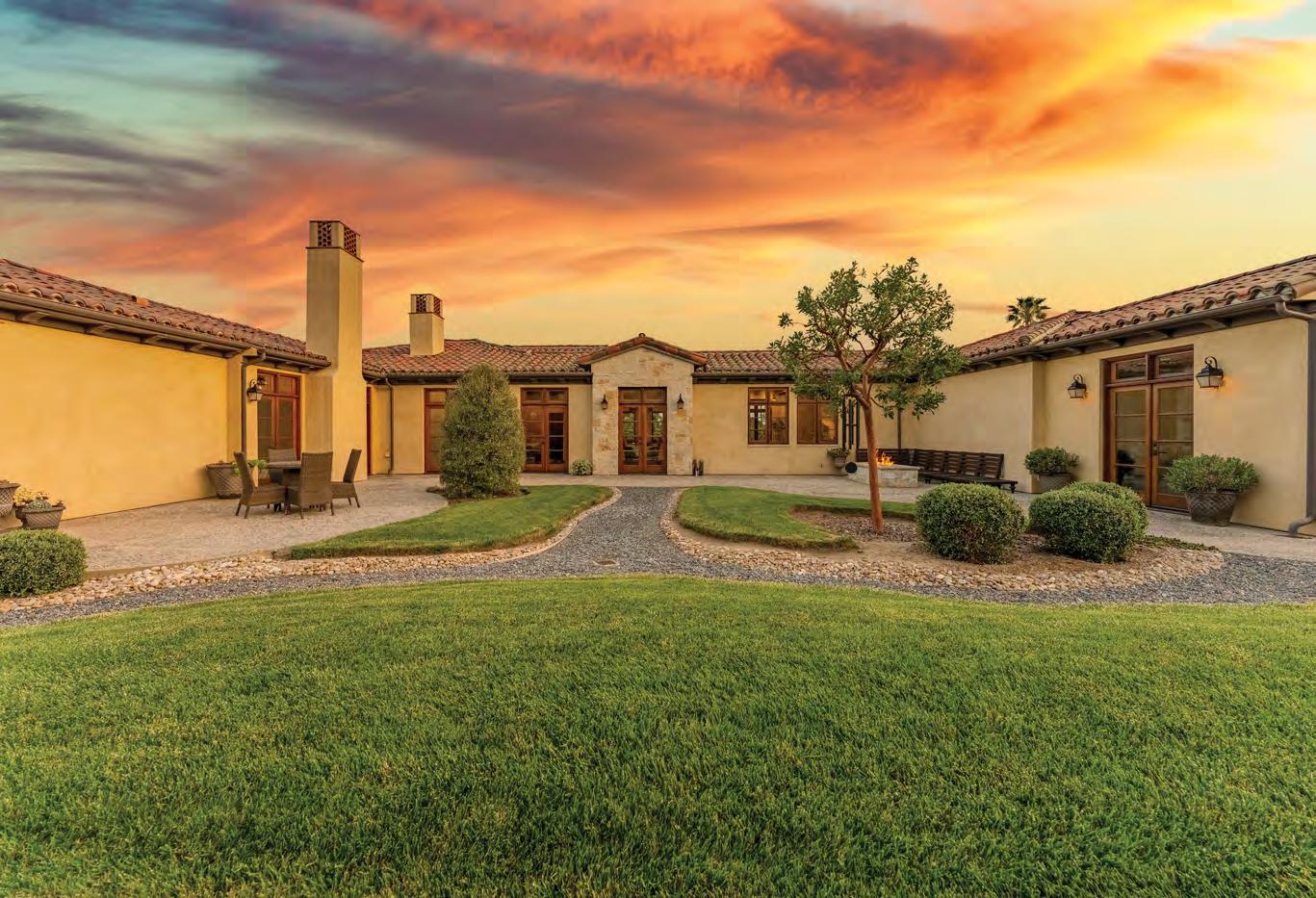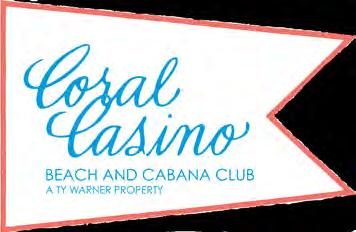PETRUS BE TOLD! NEW WINE EXPERIENCE AT SAN YSIDRO RANCH: CELLAR DWELLING HAS NEVER BEEN THIS GOOD!
GARDEN ARTIST ALLISON ARMOUR EXPANDS HER SPHERES OF INFLUENCE (ASK RINGO!)

PETRUS BE TOLD! NEW WINE EXPERIENCE AT SAN YSIDRO RANCH: CELLAR DWELLING HAS NEVER BEEN THIS GOOD!
GARDEN ARTIST ALLISON ARMOUR EXPANDS HER SPHERES OF INFLUENCE (ASK RINGO!)


2022


2022


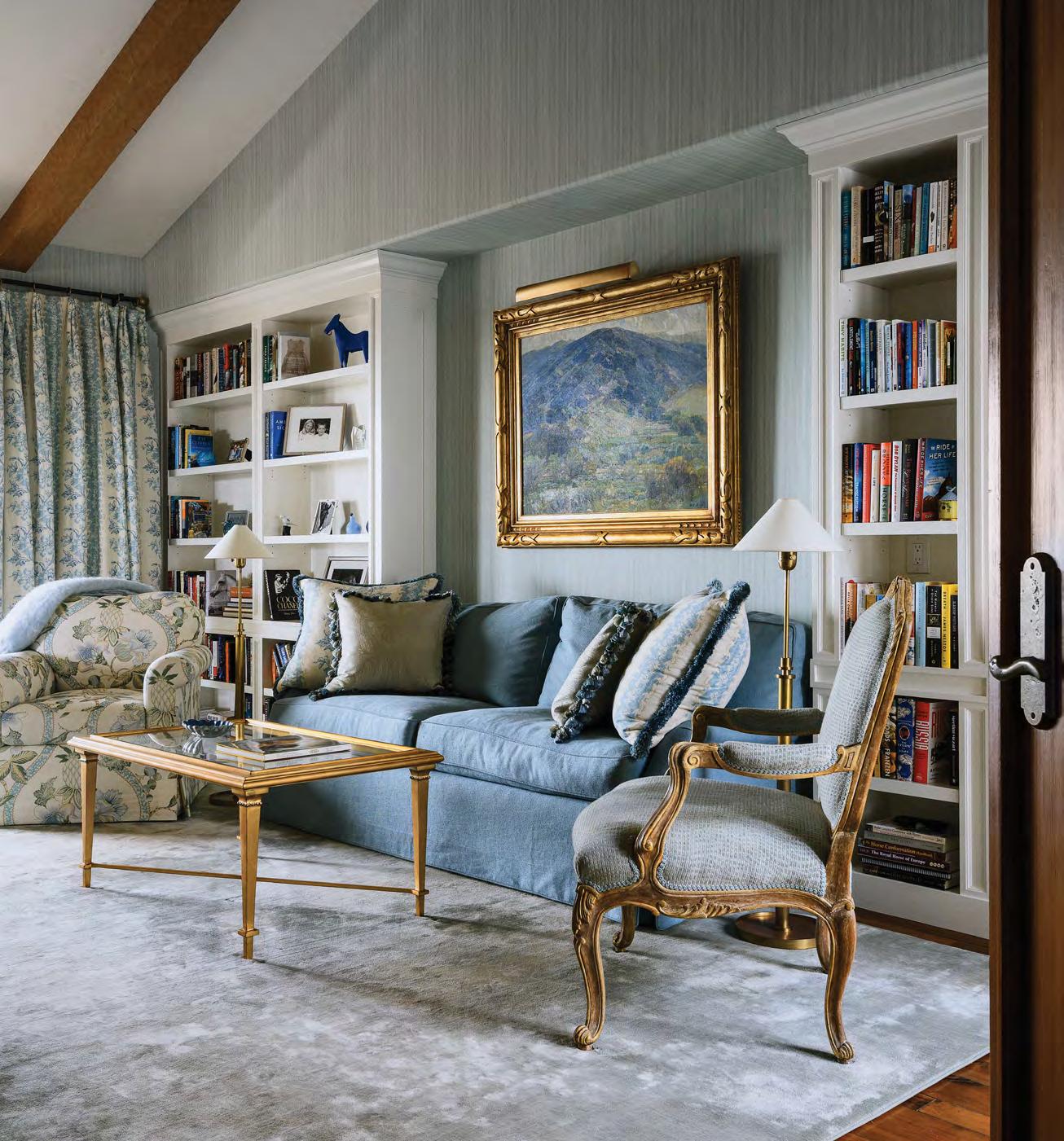





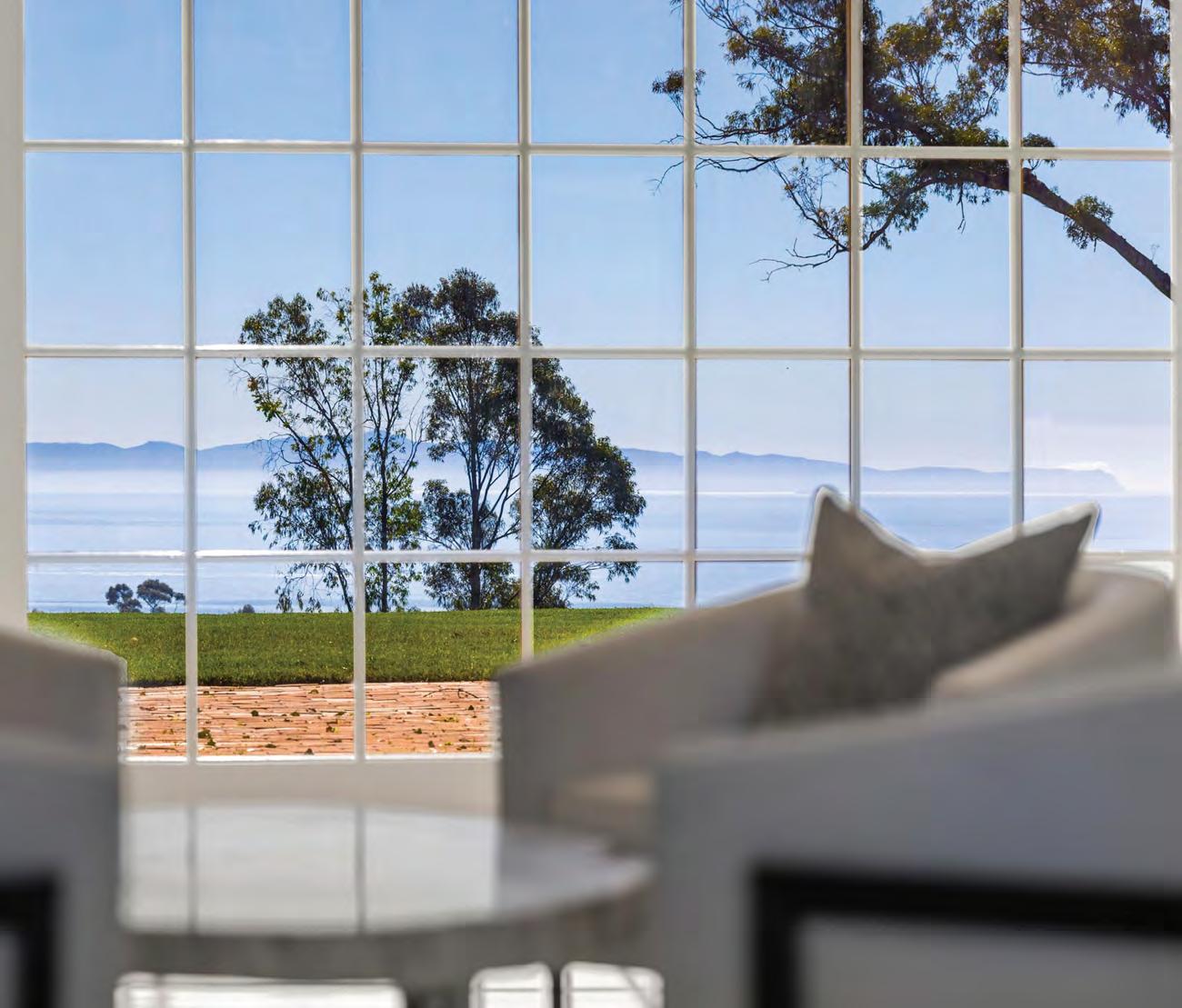




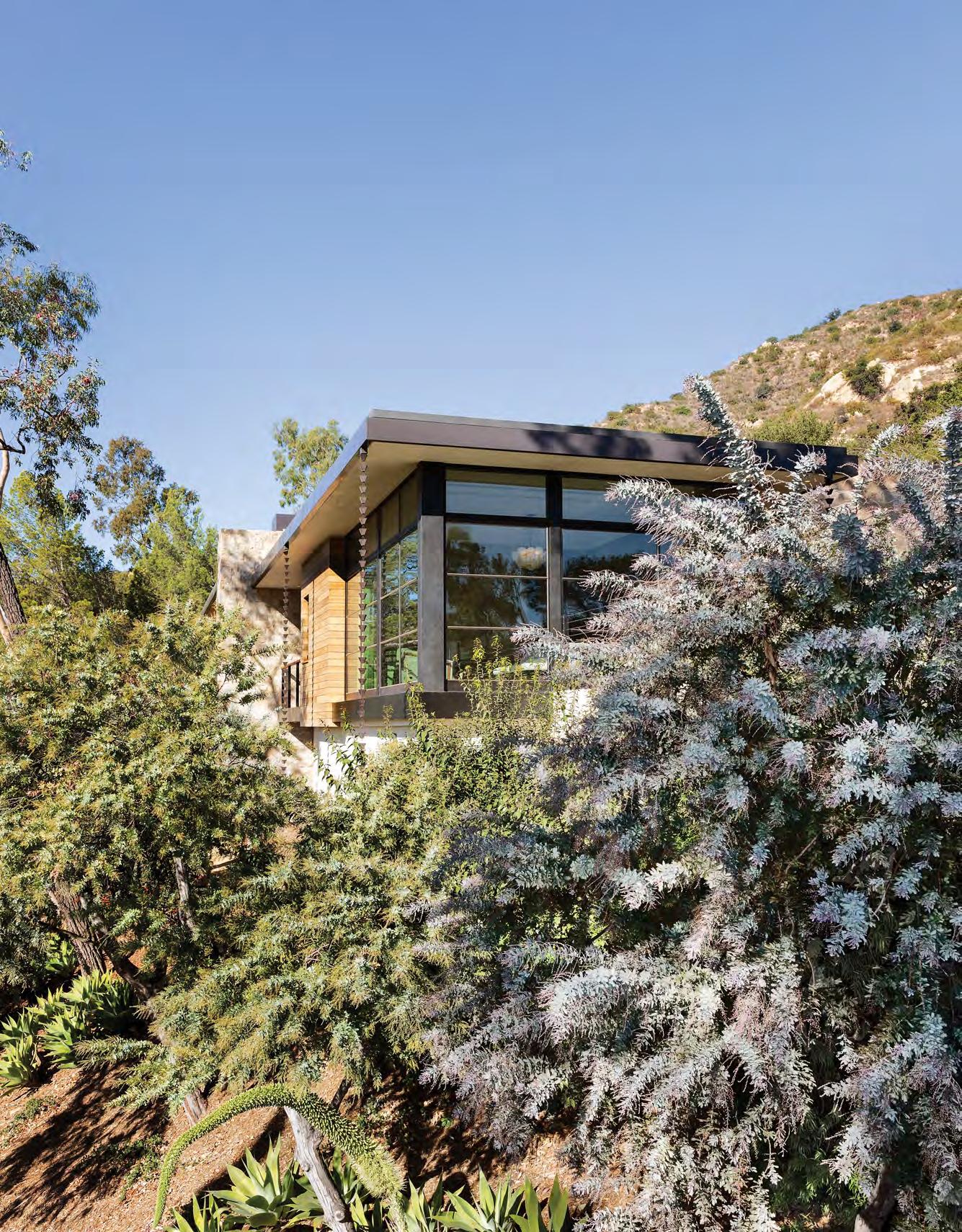







It’s Our Ocean. We Can Protect it Together.






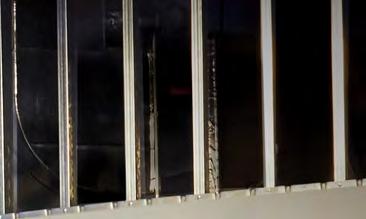




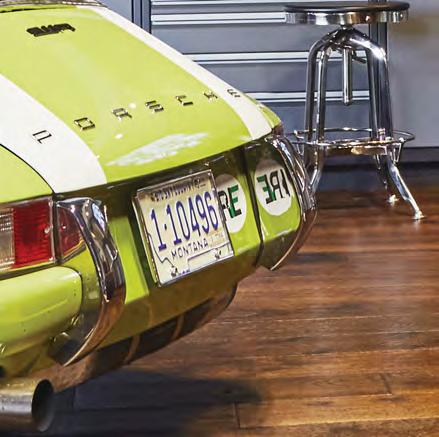











CEO Gwyn Lurie gwyn@montecitojournal.net
Volume 16 Issue 2
SUMMER | 2023
President & COO
Tim Buckley tim@montecitojournal.net
Editor Les Firestein les@montecitojournal.net
Art Director Trent Watanabe trent@montecitojournal.net
Magazine Managing Editor Gina Zondorak Terlinden
Editor-at-Large Jeff Wing
Design/Layout Assistant Stevie Acuña
Director of Operations Jessikah Fechner jmoran@montecitojournal.net
VP Sales & Marketing Leanne R. Wood leanne@montecitojournal.net (805) 284-7177

Account Managers
Tanis Nelson: tanis@montecitojournal.net
Susan Brooks: sue@montecitojournal.net
Elizabeth Nadel: elizabeth@montecitojournal.net
Bryce Eller: bryce@montecitojournal.net
Photography
Blake Bronstad and Kim Reierson
Contributors
Hattie Beresford, James Buckley, Kelly Mahan Herrick, Gillian McLaren, Eileen White Read, Gabe Saglie, Nicholas Schou



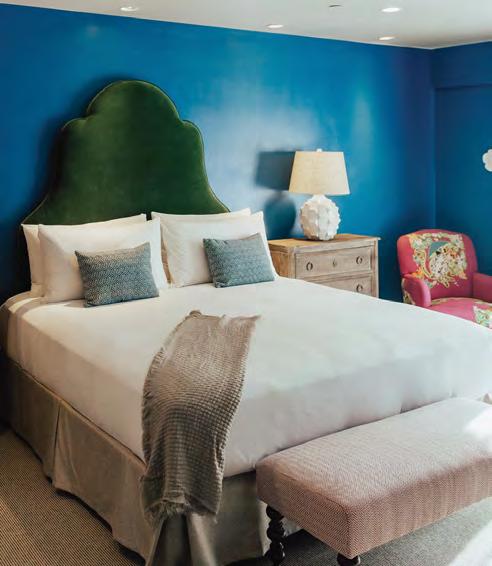






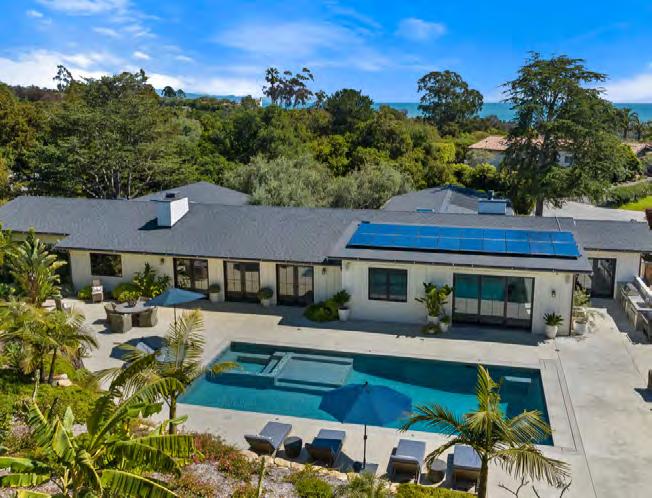




















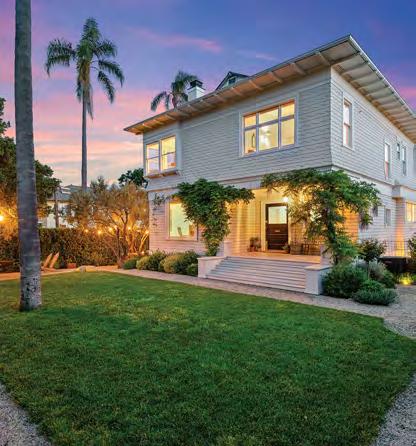








52.Rowed Warrior
What will you do during your summer vacation?
Iron woman and yogi Adrienne Smith and crew rowed around the clock from San Francisco to Hawaii in 34 days, breaking the Guinness world record. Her inner journey was every bit as epic.
The world’s most well-known people train body and mind with California’s least-known trainer –and that’s exactly how Peter Park likes it.

76.
Fitness: A personal pursuit with many facets
“Montecito” is synonymous with brute strength powerlifting, kinesiology, and swinging gym activewear. Or at least it should be.
Unlike many coastal destinations, Santa Barbara’s harbor has been a station for military activity and continues to be a robust commercial harbor – with much of our enviable catch shipping internationally before it even hits the pier.
94.Stellar Cellar
Private dining among some of the most soughtafter vintages ever vinted is the latest achievement for the San Ysidro Ranch’s storied wine program.
110.
The San Ysidro Ranch’s wine cellar is an oenophile’s Louvre. Imagine drinking the Mona Lisa. Herewith, some newer additions to the Ranch’s prizewinning drinkable art.


The Santa Barbara Botanic Garden is blooming great, punches way over its weight, and has the tallest redwoods south of NorCal. Best of all, the garden’s botanical bounty is just up Mission Canyon. Schedule at least a half-day visit – you’ll be glad you did.

126.
Keld Hove
Believe it or not, the owner of the San Ysidro Pharmacy is, actively, a Danish television star. And that’s not all.
138.
By now, everyone knows that the eccentric Clark family owned the iconic Bellosguardo mansion. However, before the Clarks the storied estate was owned by the Grahams, who were also no pikers. Well, not at first..



180.
156.The Armoured Garden Conquers the World
Allison Armour is a local artist who creates landscape sculptures beloved by kings and shopping malls. Keats would be pleased.
166.
Ideas in Things
Susan Vizvary’s objects are frozen memories. Are these the greatest host and hostess gifts imaginable? One can certainly make the case.
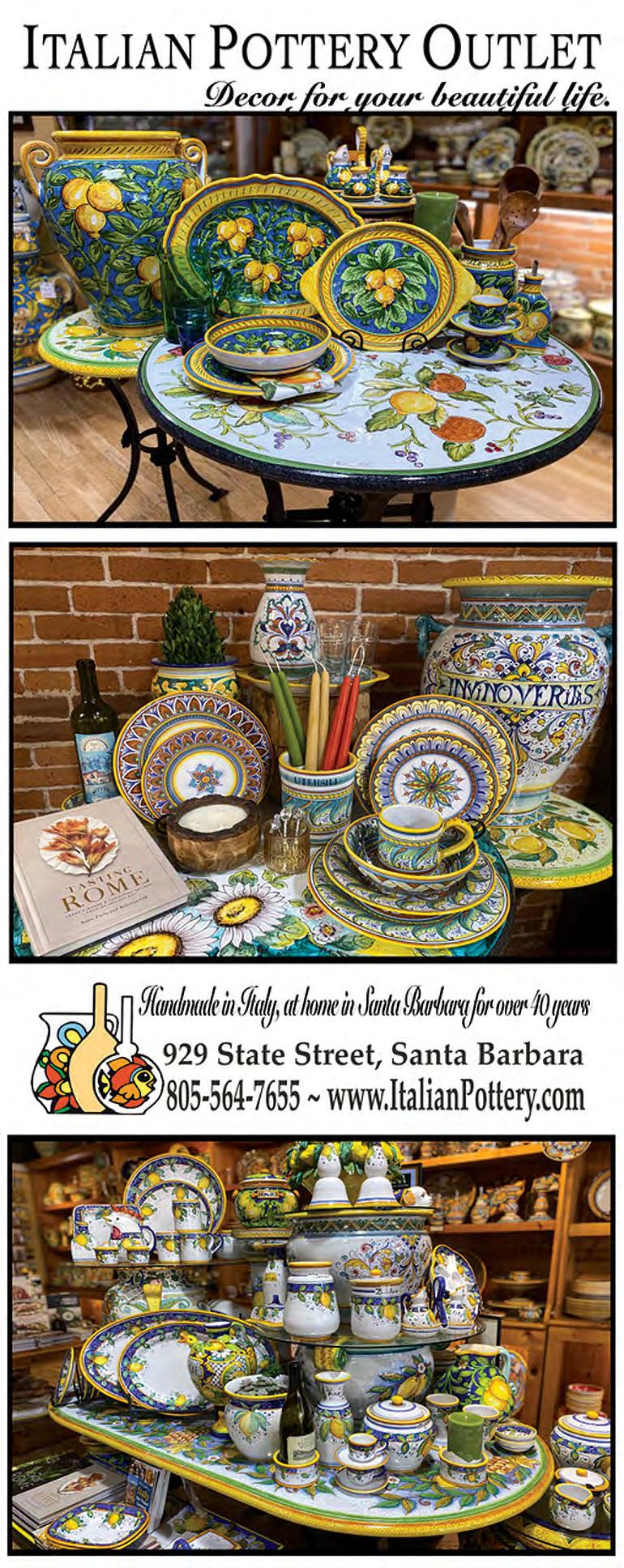
170.Artisan’s Atelier
Art nourishes the spirit, excites the mind, and is heatedly discussed over cocktails. These area artists seek connection through the ineffable. So connect.
174.A Weekend Getaway with Al Capone and the Mob
Not your typical “What happens in Vegas, stays in Vegas” trip, this is more of a weekend getaway with folks who created Las Vegas – the mob.
180.
The Elephant in the Room
Twenty years ago, Kristina McKean’s honeymoon in Thailand opened her eyes to a little-reported, ongoing tragedy. In joining efforts with a beloved and respected Thai conservationist, this Montecitan is making a difference.

184.
…and More Elephants: The Secret Riviera where African Pachyderms Roam Free
The 570-square-mile Matusadona National Park on Lake Kariba in Zimbabwe is a savanna that’s home to African elephants, lions, leopards, and herds of buffalo – as well as more than 240 species of birds – oh, my!
192.Real Estates
Whether on the water or in the hills, a plethora of dream homes (and a few vacation rentals) await.














Eileen White Read — Eileen White Read is CEO Emeritus of Pasadena Community Gardens Conservancy, a retired business reporter and contributing writer for The Wall Street Journal, a freelance writer, and a volunteer gardening teacher certified under the University of California’s Master Gardener program. A Santa Barbara County resident since 1993, she is planting a new garden at her home on the Riviera and serves as co-chair of the Landscaping Committee at Montecito’s Bonnymede HOA, where she champions the vocal minority opposing the water, noise pollution, and cost (and waste) of maintaining vast acres of 1950s-type turf grass lawns.
(Photo by Tara Turkington)
Blake Bronstad — Blake Bronstad is a Santa Barbara native and photographer. His broad spectrum of work has guided him through years of varied entanglements, ranging from commercial product photography to foreign landscapes and editorial endeavors. More often than not, you’ll find Blake right at home here in Santa Barbara capturing its many gleaming angles.
Gillian McLaren — A love of culture and ethnic groups, fine dining, and wine has led Gillian McLaren to visit 56 countries. When not in a wetsuit and fins, she is searching for tigers and anacondas. Based in Johannesburg, South Africa, she is passionate about the African wilderness, safaris, and photography. @Jetset_Gillian, www.gillianmclaren.blogspot.com.




Jeff Wing — The World is not such a big place. I mean, 25,000 miles around the middle? This sounds more like an annoyingly lengthy road trip than the grand, celestial repository of all human history. Still, our puny “planet” is dense with an unmined narrative. There is no such thing as an ordinary day. The mission is to lift the veil on the awesome and meaningful strangeness that comprises waking life. I like that. A lot.


Hattie Beresford — Hattie Beresford has been writing a local history column for the Montecito Journal for nearly two decades. She has written two Noticias and co-edited My Santa Barbara Scrap Book, the memoir of local artist Elizabeth Eaton Burton, for the Santa Barbara Historical Museum. Her book, The Way It Was ~ Santa Barbara Comes of Age, is a collection of a few of her nearly 400 articles written for the Journal. She is the researcher and author of Celebrating CAMA’s Centennial, a chronicle of the Community Arts Music Association’s 100-year history. When she is not immersed in some dusty tome, she can be found on the tennis courts, hiking paths, or the nation’s rail trails peddling with her husband, former Dos Pueblos High School volleyball coach Mike Beresford.
“In Peter, you have this worldclass athlete who becomes obsessed with your health,” says mega trial attorney Barry Cappello , a long-term client of superstar trainer Peter Park “And the thing about Peter is, you just don’t want to disappoint him.” For our cover photo of Peter Park, we feel like photog Kim Reierson , a superstar in her own right, perfectly captured the watchful gaze of the ne plus ultra trainer and fitness expert. Some people will pick up Reierson’s other cover – of the yogi, Iron woman, and distance athlete Adrienne Smith , who has a calm intensity and quiet undauntability (if that wasn’t a word, it is now). Here again, Reierson perfectly captured the steely stare of eyes that have rowed thousands of nautical miles. For our “Get Outside!” issue – and every issue – we are so thankful for the boundless talent of Kim Reierson (who is also an outstanding athlete in her own right).

Kim Reierson — Kim Reierson is a California native who was raised in Bolivia. After graduating from UC Santa Barbara with a B.A. in fine arts, she worked as a photojournalist for various newspapers, winning several awards. In 2000, she moved to New York City, where she has been represented by the Robin Rice Gallery since 2001. Her work has been exhibited nationally and internationally, and her clients include Art and Auction, Forbes FYI, Bloomingdale’s, Ralph Lauren, the Smithsonian Institute, and Vogue Mexico, to name a few. As an avid cyclist, when she’s not behind the lens, climbing Gibraltar Road is where you’ll find her on any given day.

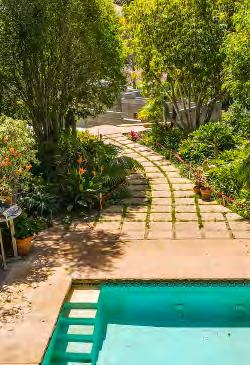
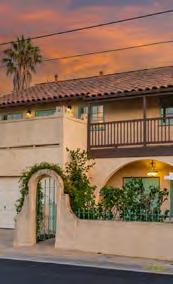






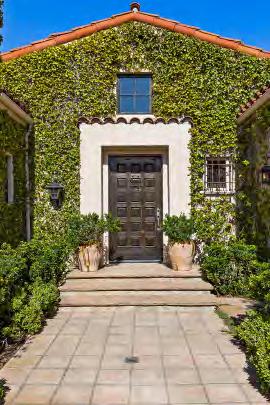
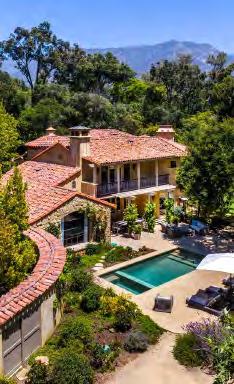
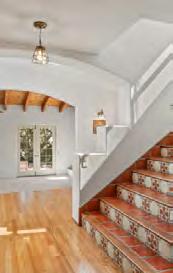


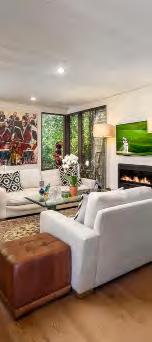

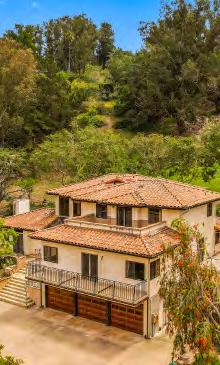






Wow, that was one wet winter! However, now that it’s over, we get to reap the benefits and GO OUTSIDE. And fortunately, we get to do so in one of the great exteriors on God’s green earth – Montecito.
Thanks to multiple atmospheric rivers, Santa Barbara was blessed this past season with more than 200 percent of the Central Coast’s normal precipitation. And we all know what that means –superbloom!

Speaking of “superblooms,” we know you’ll enjoy our super story on Peter Park, the superstar trainer of superstars – and big thanks to another truly super bloom, Orlando Bloom, for participating in that feature. To call Peter a “trainer” barely scratches the surface of how he transforms the lives of those lucky enough to work with him. (My husband jokes that working with Peter Park is “like having a genius, scientific expert… of you. It’s like having an assistant for your narcissism.”)
Meanwhile, Adrienne Smith – a local yogi and endurance runner (and mom) par excellence – took “going outside” to a new extreme: Rowing day and night for 34 days, she and her crew rowed boat from California to Hawaii, setting a new Guinness
next time you moan about getting back on that clothes rack you used to call your Peloton.
Another great local exterior from whence to witness the superbloom is the Santa Barbara Botanic Garden. We were blown away by how much they have going on there, and we know when you read Eileen White Read’s piece on those epic 78 acres right up Mission Canyon, with its own redwood forest, you’ll agree.
An additional great place to get outside is anywhere the landscape has been touched by our binational (here and England) landscape artist Allison Armour. The always-wonderful Jeff Wing wrote an appropriately lyrical piece about Allison, she of the globally revered prismatic Aqualens fountains, which are gorgeous, sublime, and have been installed all over the world. I can’t wait for you to see them!
And, while your mind is exploring the outside, be sure to check out Nicholas Schou’s chronicle of our bustling Santa Barbara Harbor – there’s so much more history here than I knew. One of the traits that separates us from some other gorgeous coastal enclaves is we still have a vibrant harbor with much commercial commerce and certain species of catch that are desired – like Allison Armour’s art – the world over.
So, enjoy the read – and don’t forget your sunscreen and beach chair!
Gwyn Lurie CEO & Executive Editor, Montecito Journal Media Group
experience
This magnificent 12,000 sqft, three-level, Mediterranean-style home, designed by Marc Whitman, has flowing curves, arched doorways, cathedral ceilings and 11,000 sqft of balconies, terraces and decks. Perfectly appointed on the 4-acre lot, it takes full advantage of the pristine natural setting and sweeping views. Every detail has been custom-designed and sourced with an emphasis on craftsmanship and quality.

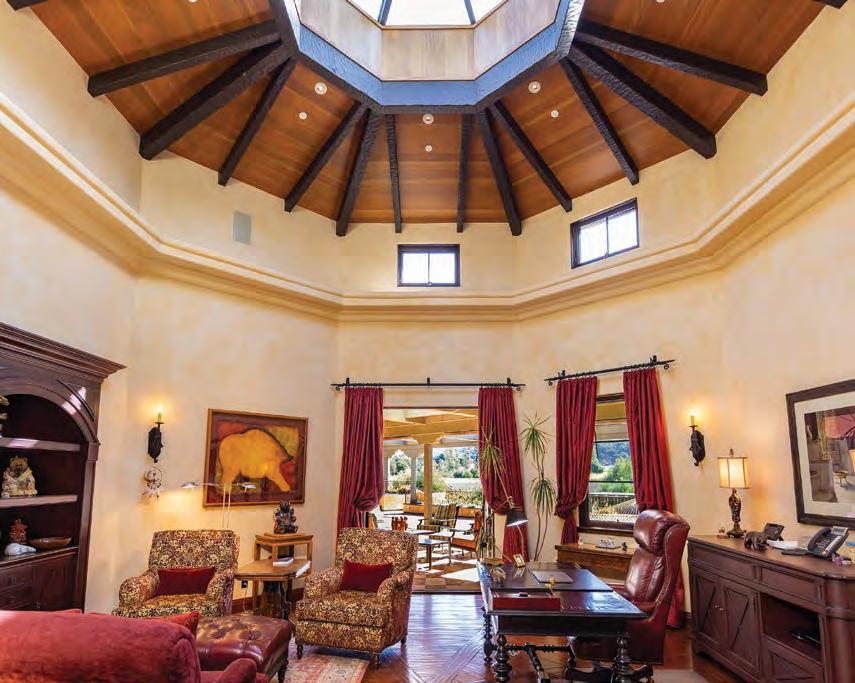
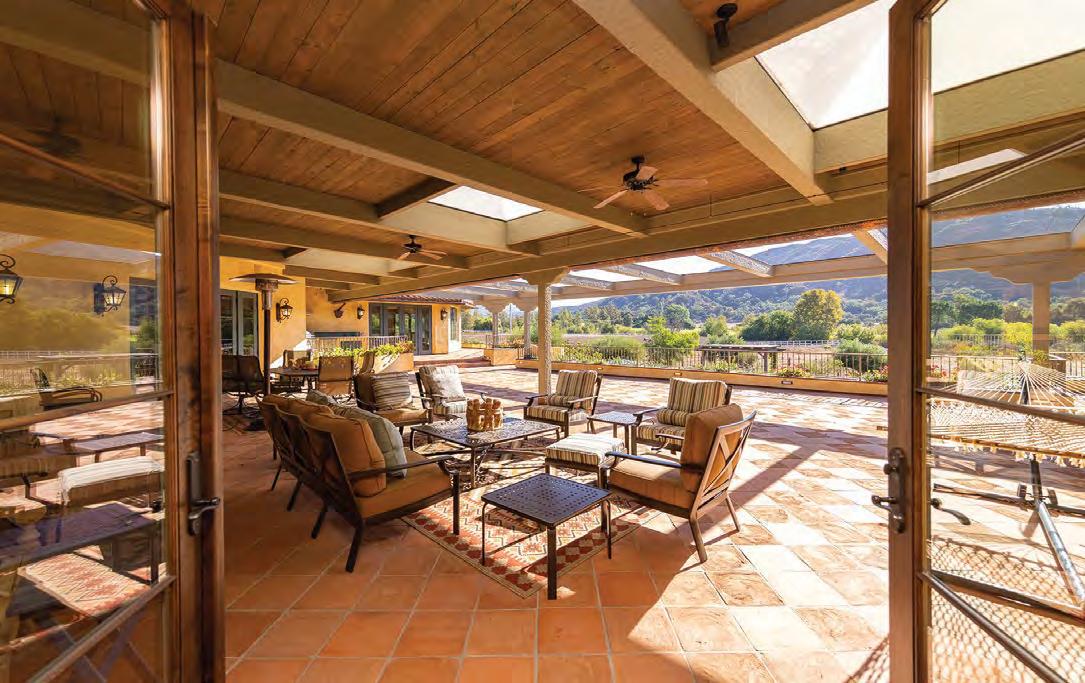
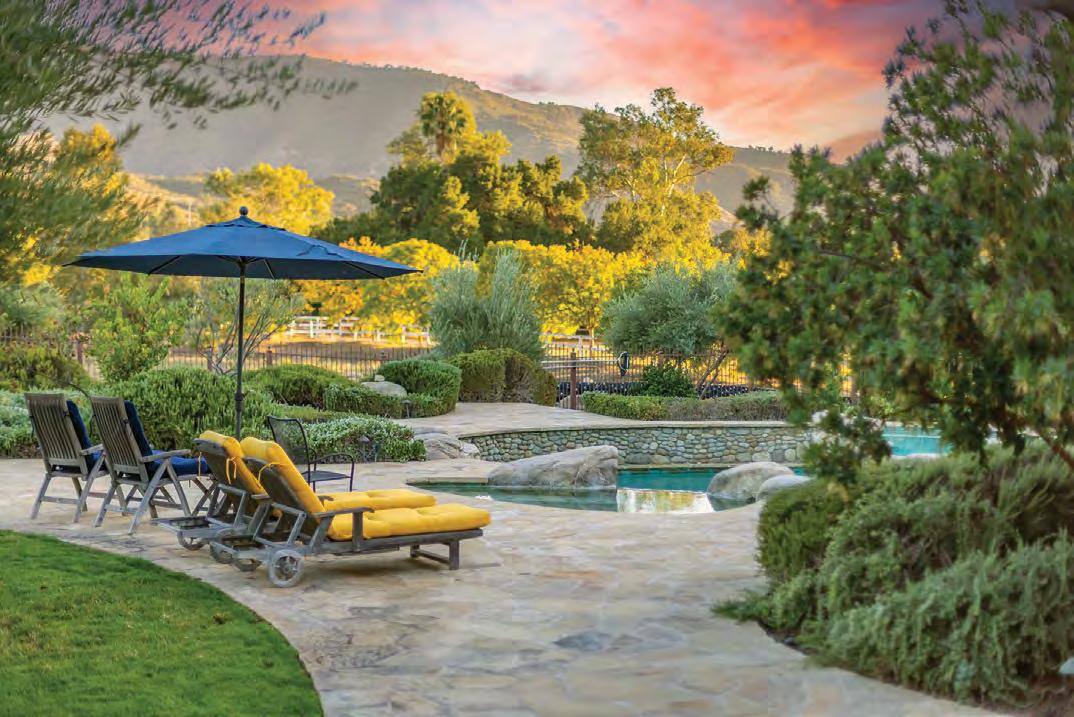





561SaddleLaneOjai.com
Offered at $14,500,000
www.pattywaltcher.com




pattywaltcher@mac.com
(805)340-3774
DRE# 01176473
This magnificent 12,000 sqft, three-level, Mediterranean-style home, designed by Marc Whitman, has flowing curves, arched doorways, cathedral ceilings and 11,000 sqft of balconies, terraces and decks. Perfectly appointed on the 4-acre lot, it takes full advantage of the pristine natural setting and sweeping views. Every detail has been custom-designed and sourced with an emphasis on craftsmanship and quality.
561SaddleLaneOjai.com
Offered at $14,500,000
Over 25 years of
matching people and property in the Ojai Valley

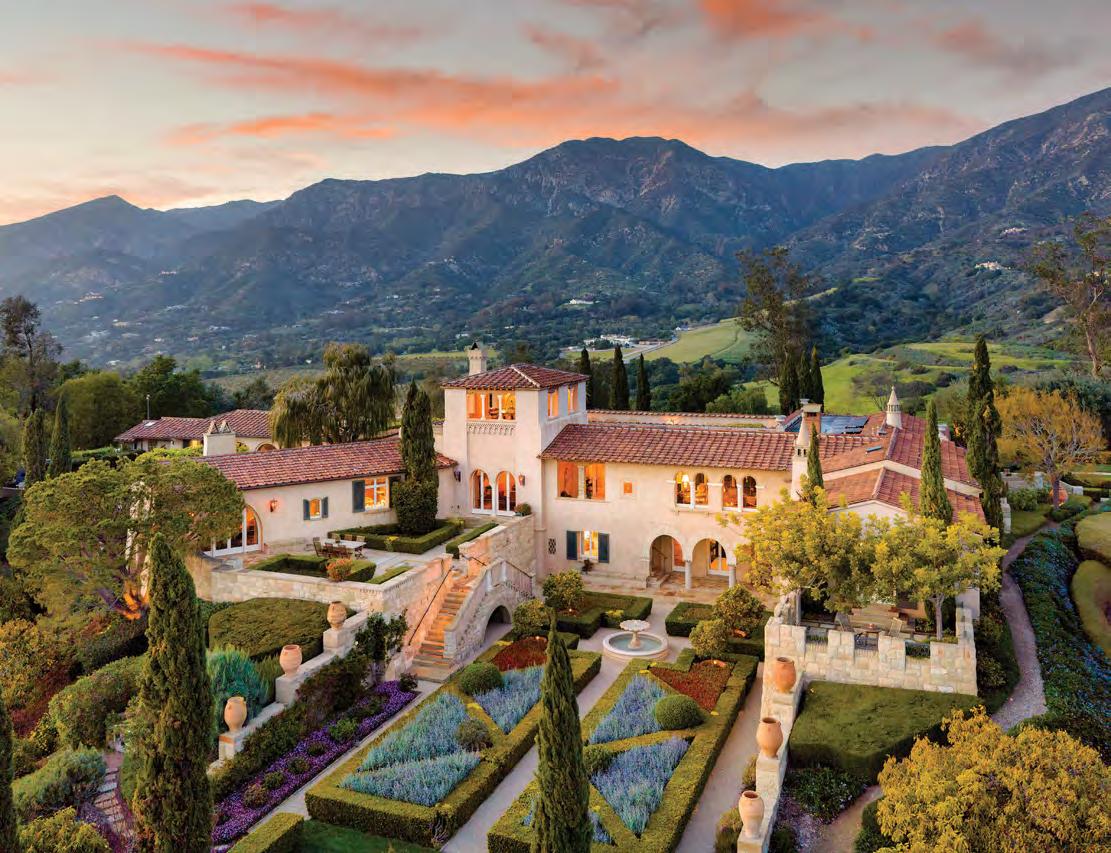






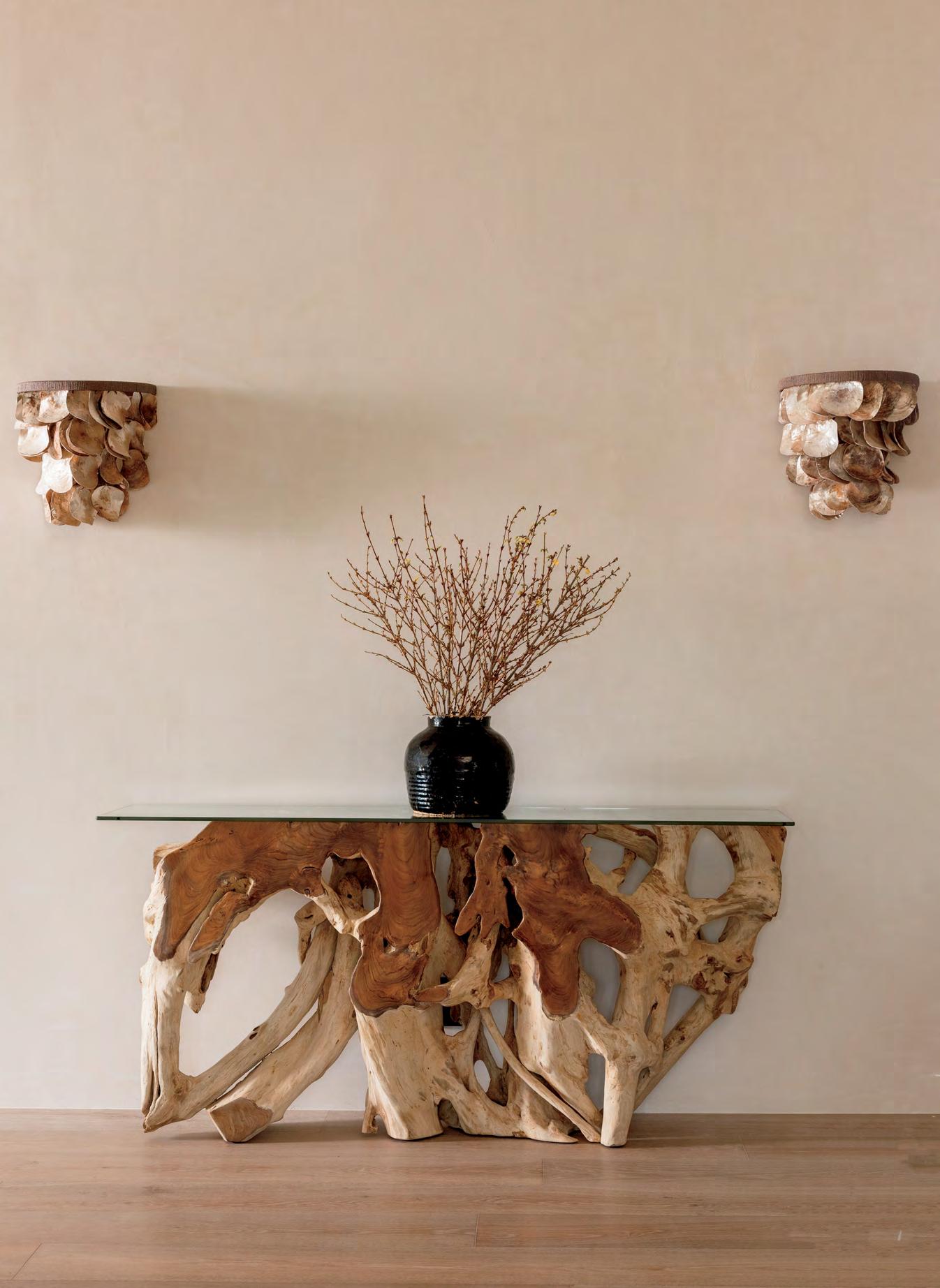







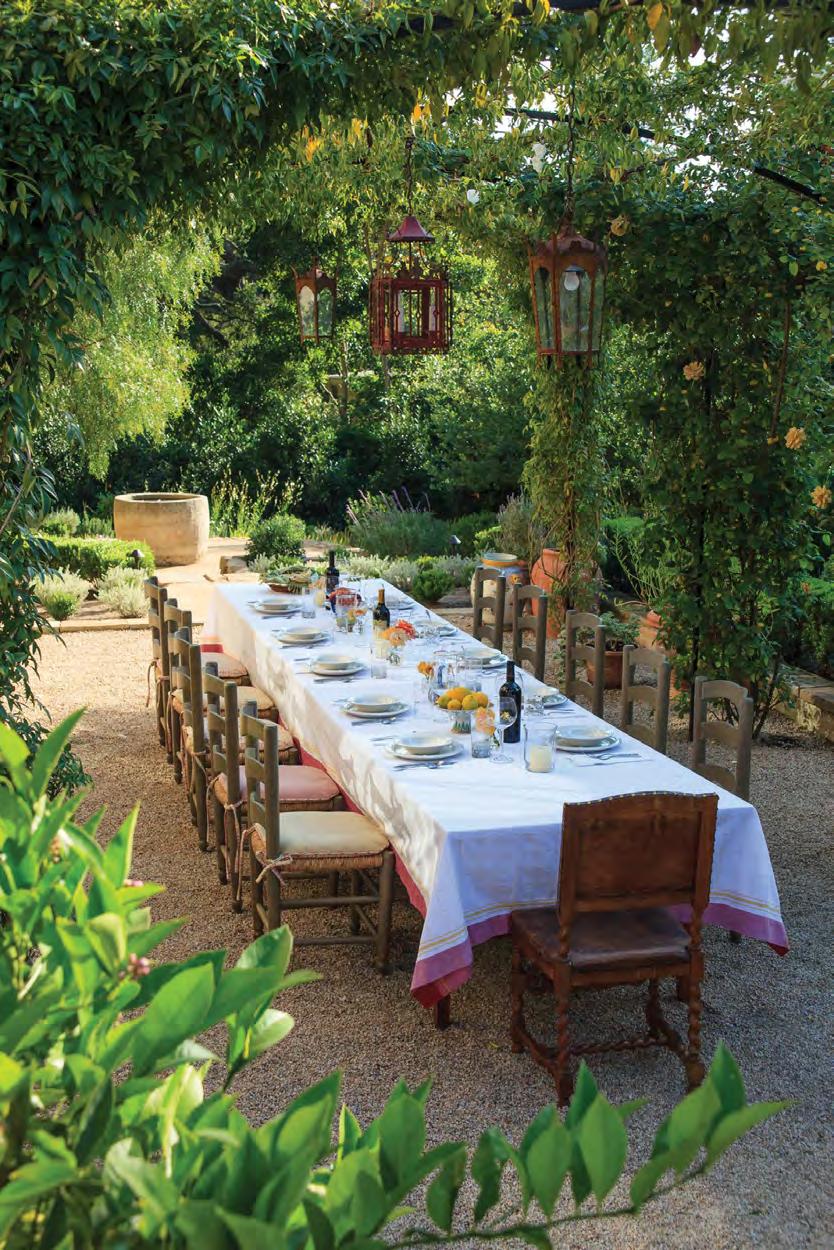

SOUTHERN CALIFORNIA’S ULTIMATE SHOPPING DESTINATION
Alexander McQueen · Alexander Wang · Audemars Piguet · Berluti · Bottega Veneta · Breitling · Brunello Cucinelli
Buccellati · Burberry · Cartier · Celine · Chanel · Christian Louboutin · Dior · Dior Men · Dolce&Gabbana · Fendi · Ferragamo
Gentle Monster · Givenchy · Gucci · Harry Winston · Hermès · Isabel Marant · Lanvin · Loewe · Louis Vuitton · Marni · Missoni

Miu Miu · Moncler · Monique Lhuillier · Moynat · Oscar de la Renta · Prada · Roger Vivier · Rolex | Tourneau Bucherer
Saint Laurent · The Webster · Thom Browne · Tiffany & Co. · Vacheron Constantin · Van Cleef & Arpels · Zegna · Zimmermann partial listing

INTERVIEW BY LES FIRESTEIN | PHOTOGRAPHY BY KIM REIERSON
WHAT DID YOU DO DURING YOUR SUMMER VACATION? IRON WOMAN AND YOGI ADRIENNE SMITH AND CREW ROWED AROUND THE CLOCK FROM SAN FRANCISCO TO HAWAII IN 34 DAYS, BREAKING THE GUINNESS WORLD RECORD. AND HER INNER JOURNEY WAS EVERY BIT AS EPIC.

I’ve been fortunate to work frequently with Kim Reierson. She is a world-class photographer, outstanding athlete, and a class-act person. Reierson recently asked me if I’d like to look at some photos she took of her friend Adrienne Smith who’d just set a rowing record. “Where did Adrienne row?” I asked. “From San Francisco to Hawaii,” she said. I didn’t really need to hear a lot more after that. The photos speak for themselves, as did Adrienne, who was kind enough to spend a few hours with me recounting her inner and outer journey across the Pacific.

Les Firestein: For starters, for what event did you break the world record?
Adrienne Smith: I rowed from San Francisco to Hawaii as part of the Great Pacific Race. In the process, my crewmates and I set the world record for a four-woman boat. We bested the previous record by a full day.
LF: And you were the only one in your boat with no previous rowing experience.
AS: True, but the challenge of endurance rowing isn’t the
rowing part. It’s the endurance part.
LF: How much is the rowing you did like rowing crew or sculling?
AS: The only common thread between ocean rowing and crew is they both involve an oar. With most rowing that people are familiar with, the body of water is a flat river or a flat lake. But with ocean rowing, you have two bodies in motion. Yours and, in this case, the Pacific Ocean. With ocean rowing, obviously what the ocean is doing is a major factor. And how the ocean plays out on your boat and your body also plays a major role in what kind of journey you’re going to have.
LF: You were the only mom on the boat. Which, apparently, turned out to be critical to your team’s success?
AS: Each woman played a critical role. Each woman in the boat had superpowers of one kind or another – and often more than one. I was also significantly older than my teammates.
LF: Let’s back it up a little. First of all, why did you do this race? I mean, I know you’ve been a world-class triathlete and Iron woman (Iron person?) competitor. But these million strokes to Hawaii where you do six two-hour shifts every 24 hours seems like it’s on a whole other level.
AS: I think it was on a whole other level, and that was part of the appeal. The thrill of Women’s Ironman competitions had started to wear off for me. And when I did the Great Pacific Race, I was coming out of a lot of grief. I’d lost both my folks and had a miscarriage all in the same year.
LF: I guess large woes require a larger dose of adrenaline. Where did this particular challenge come from? Like, how did you choose this particular challenge as opposed to, say, scaling El Capitan?
AS: I actually heard about the Great Pacific Race through my husband, Jason. I had zero experience as a rower. But Jason, who is himself also a major triathlete and Ironman and, importantly, a trainer, was hired as the conditioning coach for a four-woman crew, and the crew’s fourth woman wasn’t entirely solidified. That’s when Jason told me he thought there was a warm seat with my name on it on this boat. “You could do this,” he said. And then said, “You should do this.”
I asked Adrienne’s husband Jason the thinking behind sending the mother of his 4-year-old daughter – and an inexperienced rower – out to sea on a 2,500-mile jaunt with no chase vehicle.

Jason Smith: First of all, I knew Adrienne could do it. From









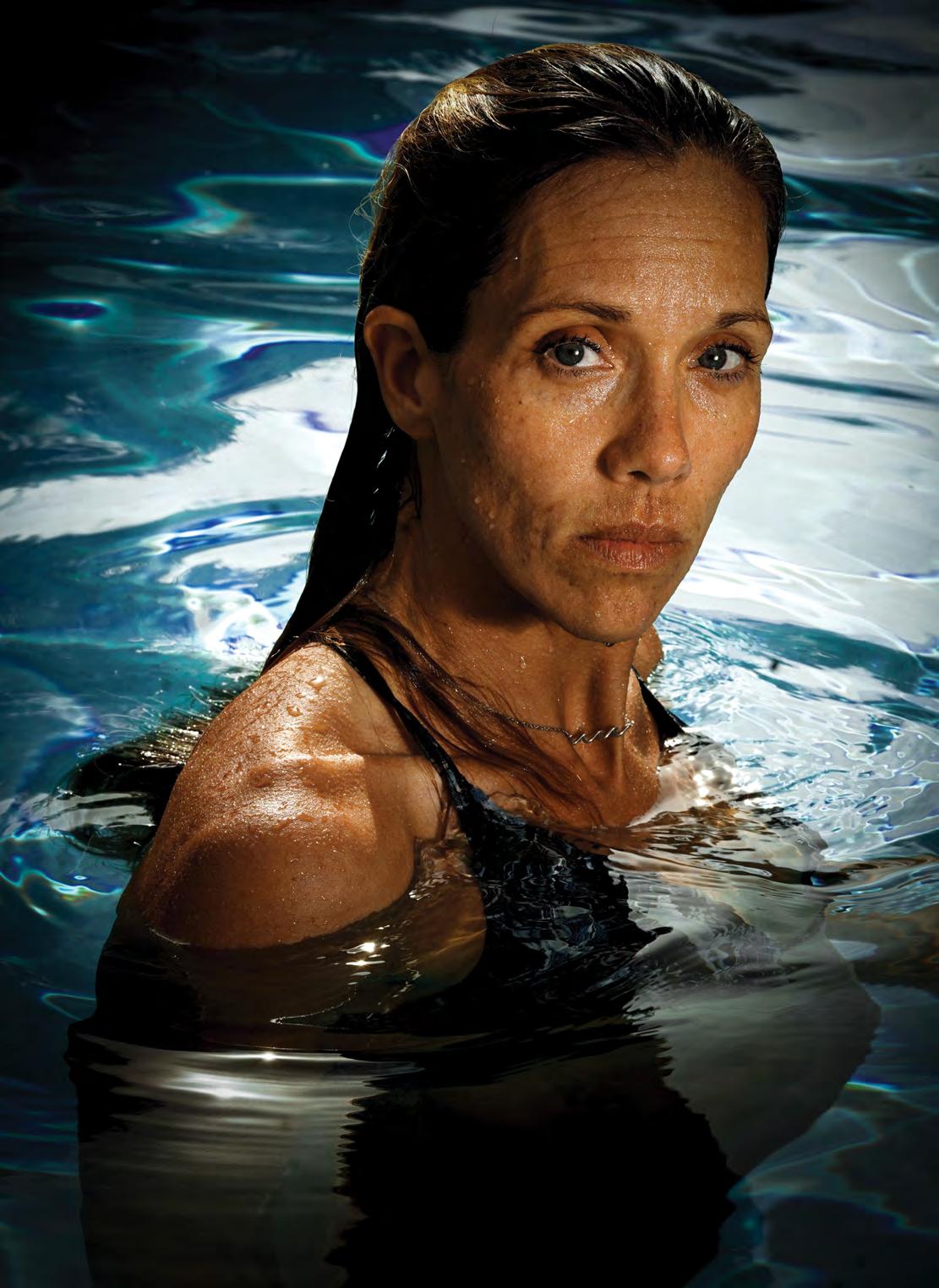
years of training with her – and living with her – I know Adrienne is a beast. She doesn’t look like a beast. But she’s a beast. Also this kind of competition is not so much about rowing skill. Rowing is not rocket science. It’s about grit and mental toughness and maybe, most importantly, being comfortable with being uncomfortable. All of which Adrienne has in abundance.
LF: So you never felt like she’d be in danger. But there’s a difference between that and encouraging the love of your life to go on this sort of a… quest.
JS: To be honest, I worried more about Adrienne not doing the race. You know “the doldrums” is a nautical term that refers to a windless and currentless condition. And I sensed my wife was in a sort of personal doldrums – and that what she really needed was a change of atmosphere.
LF: So after Jason suggested the Great Pacific Race, what were the next steps for you?
AS: First, I needed to establish that I would not die doing this. Which was relatively easy. I mean, the boats are basically the same size as lifeboats from a cruise ship. Except ours are much more advanced. These are not the lifeboats from the Titanic. Our boats are fiberglass, have satellite phones and solar and even some shelter, a 60-day supply of food, and fresh-water making machines, of course.
LF: So your research ultimately concluded the trip would not be dangerous?
AS: Anyone who commutes on a freeway is taking a risk. Anyone who drives kids to school is taking risks.
LF: What about sharks? Are sharks a factor?
AS: Someone once explained to me that only the sharks in shark movies have superhuman intelligence, can strategize, and are motivated by revenge. Real shark attacks are great for Shark Week but are relatively rare. Anyway, worrying about a shark attack isn’t going to stop it from happening. I suppose one could also get struck by lightning or hit by a meteor. But it doesn’t stop you from leaving your home, and it shouldn’t stop you from living
LF: What about the challenge of leaving your family behind?
AS: I think the decision to take the journey was positive, not just for myself but for my daughter. I could have stayed at home playing with Barbies with Reese – but without my usual spark. And that did not feel life affirming or healthy to me. Or Mom could go out and try to get her mojo back. Hopefully I modeled for Reese how to get one’s mojo back.
LF: And you trained here in Santa Barbara?
AS: A lot of it was Santa Barbara because a few of the women were here. We did some big practice rows and some bonding, which is actually really important to the mission. The bonding wasn’t necessarily related to the training. It was more like meals and socializing, learning to trust each other, and I guess developing some esprit de corps.
LF: Yeah, I’d heard the bonding that many female crews do sometimes gives them an advantage over some of the male crews –which can be more like a collection of superstars.
AS: In our case, we had a boat theme and our mantra, which was “Elevate each other’s greatness.”
LF: So then on June 21, 2022, you’ve bonded, you’ve trained, you kiss your family goodbye, and start rowing under the Golden Gate Bridge. Tell me about your role on the boat.
AS: I noticed where there were differences of opinion and knew when something was worth clearing and when it would clear on its own. The willingness to bring up something that needed to be discussed or cleared was something I owned. Not sure if that is the “mother” or the confident, wise female.
LF: So you were like... the boat’s designated couple’s counselor?
AS: Even before we took off for our row, this was how we started all our team meetings. This structure was brought up by our team captain who learned this from massage school. I’ve since used this with my teams at my job. Understanding the physical and emotional states of others helps us listen better. We made sure to do this every day even when we were getting pelted in a rainstorm. It was really important.
LF: That definitely does not sound very male. Now let’s talk about the physical challenges.
AS: If you’ve seen the documentary Chasing about Jason Caldwell’s challenges getting his crew across the Atlantic, you know that things like seasickness and equilibrium can loom incredibly large. Much larger than you would think.
LF: Yeah, that movie had these huge, muscle-bound guys. But one of them gets literally taken down by seasickness and for days, he cannot keep down food or water….
AS: And what’s actually happening… is he starts dying. He’s literally becoming dead weight.
LF: Yeah, I never really thought of motion sickness as something that’s potentially lethal. And then the rescue boat was a sailboat that took like two days to get to him and offload him.
AS: And, of course, when your big guy goes down, he’s no longer pulling his weight and others in the crew get emotionally wobbly and now you’re potentially in a mutiny situation.
LF: Spoiler alert, which is exactly what happened in that documentary. That being said, what percent of a monthlong 24/7 endurance row would you say is mental?
AS: I think it’s maybe 90 percent mental, emotional, and teamwork. Definitely our biggest challenges were mental. Don’t get me wrong, the physical demands were enormous. In a nutshell, you’re strip mining your body and trying to row 2,500 miles… essentially before you waste away.
LF: So how was the crossing?
AS: We had a very blessed crossing – calm seas and no sharks. It was basically us against ourselves. We had good strategy and tools and great mental toughness.
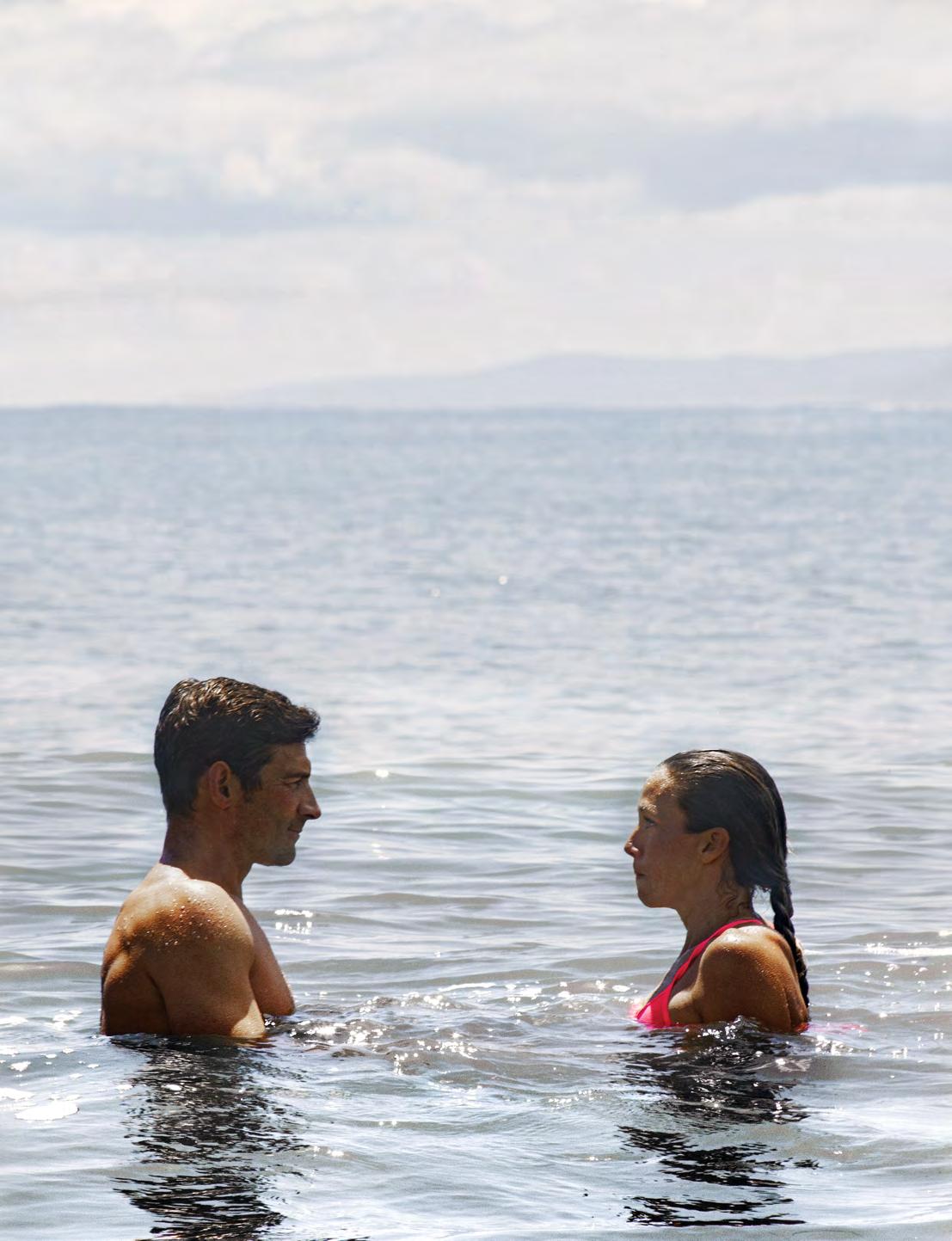
“I knew what the next challenge would be –going back to normal life. And I wasn’t sure how exactly I was going to handle that.”


“ Each w oman played a critical role. Each woman in the boat had superpowers of one kind or another – and often more than one.”
LF: Tell me what it was like when you knew you guys were going to make it and were also going to quite possibly break the world record.
AS: I’ll be honest with you. On Day 28 of 34, I kind of started to freak out.
LF: Because of the comedown? Because you didn’t know what the next challenge would be?
AS: Because I knew what the next challenge would be – going back to normal life. And I wasn’t sure how exactly I was going to handle that. Things like billing and carpooling.
LF: This might seem like a weird question, but did you ever feel like your trip was a metaphor? You know, how Columbus set out for India but “discovered” something else. By the same token, did you set out for Hawaii but discover, say, yourself? Or your inner peace – something like that?
AS: That certainly sounds really good. But I’m not sure I can say that… yet. You can’t really plan an epiphany, right? My crossing was just less than a year ago. The one thing I’m sure of is I don’t know all the ways that journey has enriched and enhanced me. It could play out over the course of my whole life. I know I have a nice platform now where people want to hear what I have to say and feel inspired by what I’ve done, and I’m certainly appreciative of that opportunity.
LF: So what’s next?
AS: There is no “next.” I’m not one of those people who hikes Kilimanjaro then needs to hike Everest. “Next” is just to integrate back into life and back into society and share my learnings such as how important it is to clearly communicate, trust yourself, do big things, live for today, etc.
LF: It occurs to me that you previously did triathlons and Ironman competitions. Which, by their very nature, are varied and interesting. Do you think that with 34 days of solid rowing out at sea, maybe you were trying to expand your capacity for dealing with routine and monotony? Maybe you were trying to build that muscle?
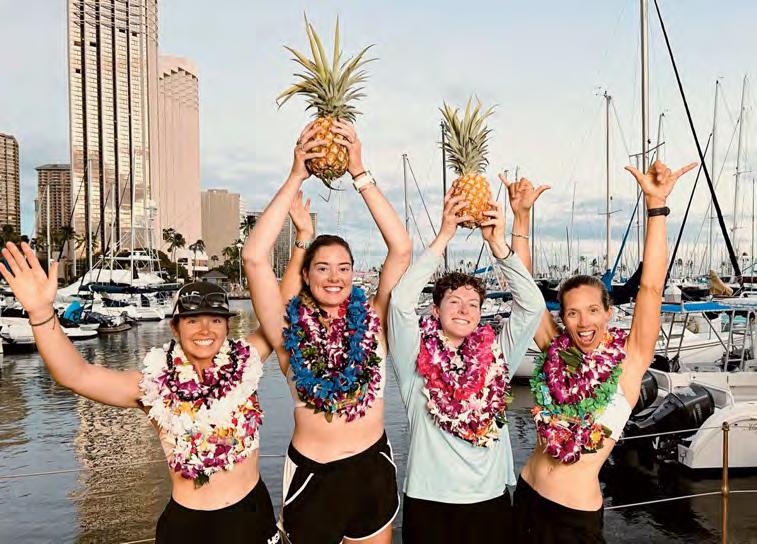
AS: I think rowing with a crew on a relatively calm ocean forces you to become selfless and, obviously, part of something much larger than yourself. I’m not just talking about just the team and the race but the entire Pacific Ocean and ultimately the planet and, even beyond that, the universe. The real endurance race is Life.
LF: And it seems like you’re in pretty great shape for it.

 STORY BY LES FIRESTEIN
STORY BY LES FIRESTEIN
THE WORLD’S MOST WELL-KNOWN PEOPLE TRAIN BODY AND MIND WITH CALIFORNIA’S LEAST-KNOWN TRAINER – AND THAT’S EXACTLY HOW PETER PARK LIKES IT. HERE’S THE STORY WE HAD TO DRAG OUT OF HIM.

I’d heard about the legendary trainer Peter Park for many years. His fans, who are legion, speak of Park in fanatical terms and with such unreserved praise that I was beginning to think Park was Santa Barbara’s answer to Satoshi Nakamoto – the mythological founder of Bitcoin who eschews all publicity, has not physically been seen, and may or may not actually exist.
I’d heard that Park was transformative, that he was “the guy,” and that all the “big guys” use him. In this case, “big guys” means the world champions of sport, business, and entertainment. Big guys can also mean baller gals, like our local world-champion surfer Lakey Peterson or Whitney Wolf Herd, the serial entrepreneur, founder of Bumble, and cofounder of Tinder.
In the lofty ways people speak about Park, using phrases like “the superstar’s superstar,” I was starting to think maybe he couldn’t exist. Until my friend JC Henry, who has trained with Park for years, wrangled me a meeting with the legendary fitness guru. But let me first tell you a little about JC Henry because he’s relevant, and his own success informs my story about Park.
A few years back, JC and I rode the Santa Barbara 100 (mile) bicycle race. Throughout most of that race, my internal monologue was “You have no business doing this,” and I never saw JC after the starting line. The race somewhat destroyed me, and the next day, results were printed in a local paper. Out of morbid curiosity, I checked where I finished – very much in the latter half of the pack of 1,500, while JC, who’s in his 60s, finished sixth, and the five guys ahead of him were all less than a third his age. JC said the reason he’s in such great shape is a pledge he made to comprehensive health courtesy of his trainer, Peter Park. So I was naturally curious about this enigmatic and mysterious character with the name that sounds more than a little like Spider-Man’s alter ego.
When you sit with Park casually at lunch – as I did – it’s not instantly obvious why he is so revered by, well, the illuminati. Don’t get me wrong, the man’s an incredible specimen, but there are thousands of great specimens here in SoCal, and also about two million people who call themselves “trainers to the stars” – that’s pretty much Cali’s gross domestic product. Park’s demeanor is that of someone who has zero interest in the spotlight. It’s not about him, it’s about you – Park assiduously underplays his own achievements (and client list), and while he has certainly earned the right to boast, I feel like I’m talking to someone in witness protection. One challenge of being a Montecito writer is that these stories about NDA folk are always an extraction.
Modest to the point of elusive, I ask Park that very question: Why are you so adored by the illuminati? And why is there a waiting line for your not inexpensive services?
Like an oracle, Park speaks almost cryptically, downplaying that he’s likely the best in the world at what he does and that he has been approached by those at the various Pinnacles of Life who would and could pay anything for his time. Frequently, Park doesn’t take the bait.


“I just help people get their lives back in balance,” says Park. “And for people willing to make the commitment, I think I can help them generate feelings of well-being they may not have known were possible.” Park’s nonchalance about it all would be like Justin Verlander (last year’s Cy Young Award winner at age 39 and a long-term Peter Park client) saying, “I simply try to throw a baseball so a hitter can’t hit it.” Park then invites me down to the gym to witness what he does firsthand beyond planks and kettlebells and counting out loud from one to 10 ad infinitum.
As everyone knows by now, California is the lifestyle apex of the United States, and Santa Barbara is the filet mignon of California. Montecito being the apex of the apex, everyone says their trainer “does” a long list of celebs, but if you’ve lived in Montecito for more than a year, you learn to take these name droppings with a grain of salt.
Except in this case, you’d be wrong. Park’s clients are in fact people you see in the news – many of them every day – with the exception of a group of kids that Park trains for basically nothing. “I get excited by anyone with incredible potential, and yeah, with those kids I guess there’s a bit of a Robin Hood thing going on. My rich clients subsidize those with fewer resources. Sorry, guys.”
When I meet Park at his nice but, like Peter, low-key gym, a friendly guy (I assume trainer) in shredded shape walks up to me and introduces himself as Orlando. He is, in fact, Orlando Bloom. Another time, Harry Styles is at the gym, interrupting my conversation with Park to ask if it’s okay to feed chicken to Park’s dog. The nerve. The gym is nice, but that’s clearly not why these guys come here. In between Bloom’s sets, I ask Park what’s special about the program that I’m not seeing, which I can only surmise is a lot.
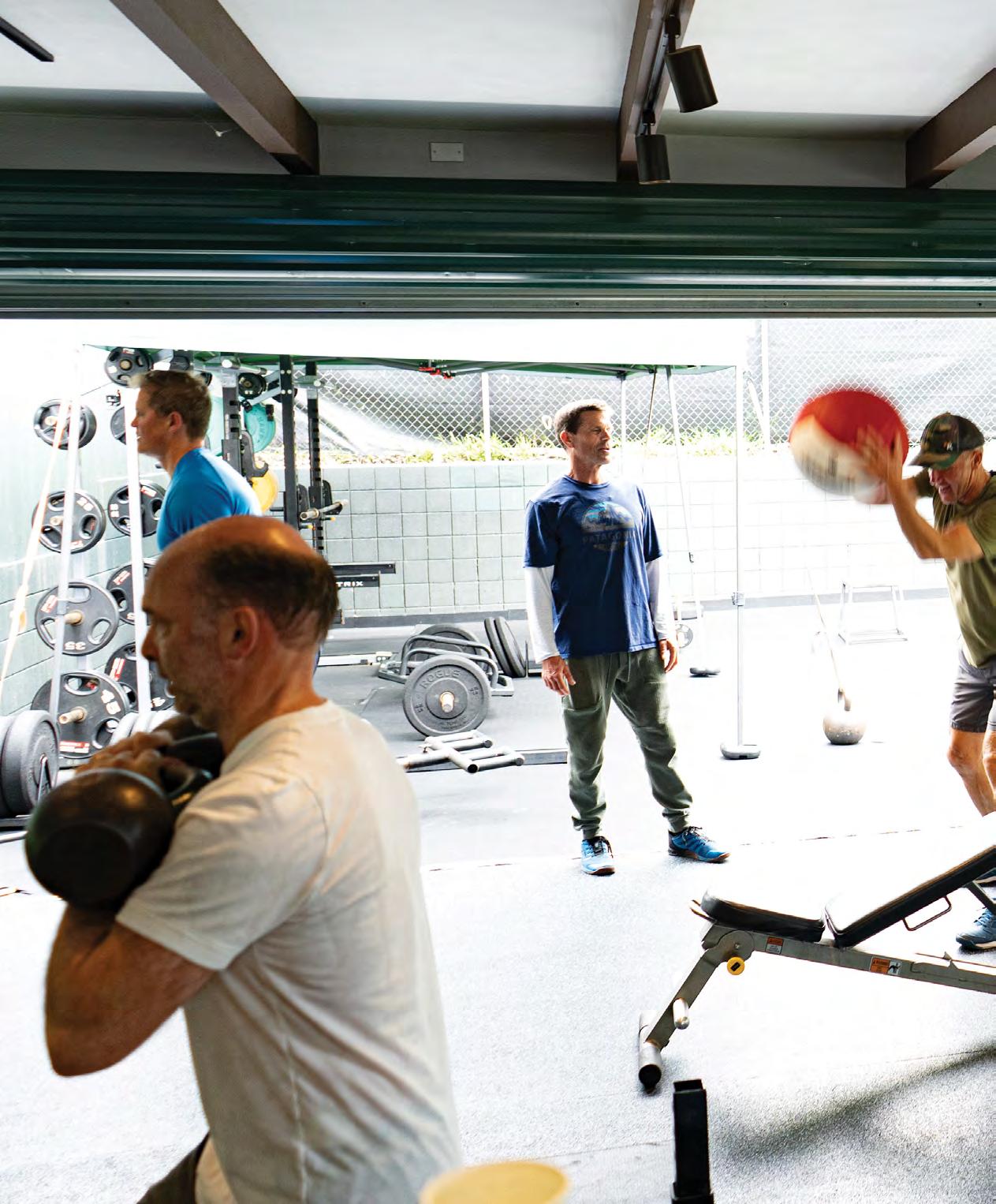
Park explains that Platinum Fitness has a top-notch de rigueur training program. But Park also explains that really what’s key to being in optimal condition is “the other 23 hours” of the day. “You could have a great hour of training in my shop – in fact, you will – but if the rest of your life isn’t aligned for wellness, that hour won’t do you any good and could actually even harm you.
“Your five or six hours of working out every week, we know that’s going to go well because I’m on point with you. But just as critical are diet, de-stressing, meditation, sleep, “desugaring” – and every other facet that falls under the aegis of wellness. Are you ready for that?” asks Park. “I’m always trying to get my NDAs and CEOs and Type As to de-stress and throttle down and find some kind of equilibrium or internal sanctuary. Meanwhile, a lot of them try to get me to rev up. It’s their nature. It’s a constant struggle, but it’s my job to win. That’s what y’all pay me for.

“Not everyone is ready for this level of commitment,” Park emphasizes. “If we come to an agreement and I work with you? I’m going to be texting you. I’m going to be asking you specifics about your meals and your stress and your stretch and your relaxation. And I may even need to see evidence of your cardio. That’s part of the agreement.
“My program is often a life shift for people, and engaging with a client requires a huge commitment from me as well.” If you hadn’t guessed by now, it has become clear that Park obsesses over health and wellness, and if you’re lucky enough to get taken on, he’s going to obsess over you. That’s a big part of it. You park your a** with Park, and the dude is going to be up in your grill 24/7/365. Park explains he’s a fast study and can usually tell within two minutes of working with someone if he or she will benefit from his tutelage. I ask Park what his success stories have in common. “Drive, fire, and desire. There’s no faking it when I train you. You’ve gotta want it, prioritize it, and live it. And be unconflicted in that goal.”
I tell Park his program sounds comprehensive and intense but still doesn’t explain why every leader of everything (I swear this is not an exaggeration) is trying to get on Park’s dance card. A natural anti-braggart, Park suggests I talk to the famed trial lawyer Barry Cappello, now 81, who knows Park’s origin myth and even contributed to it and has trained with Park for longer than anyone. Park boasts that Cappello is one of his greatest students – even better than many in Park’s stable of world-class athletes – and the noted attorney and philanthropist (despite his eight-plus decades) is in greater shape and has greater commitment than all but a few of Park’s clients.
Cappello explains to me that he and Park have known each other from the days before Park was a trainer, when Park himself was still a world-class athlete and frequent record holder for numerous triathlons and Ironman competitions. Cappello and Park met because their wives – also elite athletes– already knew each other. Cappello recounts how Park has 11 brothers and sisters, so that factor might have also made Park naturally competitive.

From an early age, Park showed elite athletic potential and was worldranked alongside another world-class teen triathlete you’ve heard of – Lance Armstrong. Park’s relationship with Armstrong, with whom the trainer is still very close, would resonate profoundly throughout his career.
Bicyclists’ lives are chronicled in stages, and the important stages of Park’s life are these:
When Peter was 21, his father, John Park, passed at 62 from “complications related to drinking.” Peter remembers his dad as a good businessman who sold his company successfully, but after that transaction never found a suitable passion to keep him engaged. This seems very important to the Peter Park story, because at barely two decades, Park had already learned that financial success is just one component of success in life. Sans a well-rounded life, many who are financially well-off are like decathletes only good at one or two events. Financial gain simply isn’t enough.
Another seminal event in the story of Peter Park is one he doesn’t remember. At 28, while training on his bike in Santa Ynez, Park was hit by a pickup truck, flipped in the air, and stuck his landing head first onto the windshield. The incident led to Cappello representing Park as his personal injury lawyer, eventually suggesting that Park get “back on the horse” by training Cappello – who had ambitions (since realized) of himself becoming a competitive triathlete. Thus, that


accident precipitated the commencement of Park’s transition from world-class athlete to trainer of world-class athletes. Park’s first gym was in Montecito behind what is now the vegan restaurant Oliver’s, though it was then the distinctly nonvegan restaurant Peabody’s.
Another seismic shift for Park was having kids. What family brought to the Peter Park picture was balance. “As an elite athlete, you lead a pretty selfish existence. When we had kids, that really jump-started my orientation from selfish to selfless.” Park went on to tell me a story that still makes his eyes water of missing his son’s 5th birthday because he was off with a client. “My son was totally devastated that I missed his party. And I was devastated that he was so devastated. Obviously, I made it my business to ensure nothing like that ever happened again.”
In 2006, Park woke up with half his body paralyzed and, in inimitable Peter Park style, he decided to walk it off and train Cappello that day anyway. Their workout that day was something like “double Gibraltar,” and Park pushed through the pain in typical beast mode.
But after the workout with Cappello, Barry demanded Park go to the doctor, insisting that paralysis was not really something one should shrug off. What Park’s doctors discovered was nothing less than a hole in Park’s heart, requiring open-heart surgery, which was successful. But even more affected than Park’s heart was his head. For the first time, as he tells it, Park realized that he was, in fact, finite and not immortal. This realization further shifted his priorities from selfish to selfless. And the scar this operation left behind is important. Because it’s a daily reminder to Park of his mortality. Not in a bad way, but in a good way. “It made me appreciate life. And obviously I learned – and needed to learn –that life can get you. Shit can happen to anyone, no matter what your condition. So, you can’t hold your breath until you have this much money or this many houses. You need to strive to lead a full and balanced life every single day.”
The year 2008 was a bad year for real estate, an awful year for stocks, and a calamitous year for Lance Armstrong due to the Tour de France doping scandal. I asked Park to tell me about Armstrong’s credibility crash since the seven-time tour champion was not just one of Park’s best friends but also Park’s business partner.
Says Park, “Obviously, I have a more nuanced relationship with Lance than almost anyone. Lance was and is a really close friend, and a lot of my success and renown has to do with the fact that I was Lance Armstrong’s trainer. I guess you could say my career as a trainer slipstreamed behind Lance’s notoriety.”
I ask how that manifested specifically. “Lance was an international superstar, so when he had access and interest from, essentially, everyone – I shared in that. I’m talking about the people I met in L.A. through Lance, like (mega sports agent) Casey Wasserman. That really blew up my career and took me international. That’s how I got booked by superstars like Verlander, Giancarlo Stanton, Laird Hamilton, and on and on. Then once I had interest from the elite athletes, of course, the CEOs and Hollywood followed.”

I ask Park if he resents or regrets Armstrong’s use of PEDs. “Obviously, in retrospect, it was a bad decision. But I will always be grateful to Lance and still am grateful for our relationship.”
There’s also another piece that’s never talked about. Which is that at the age of 25, Lance Armstrong was
“
Peter’s intense passion for all things health and wellness – along with his unique ability to connect with people – has made him the go-to trainer for decades.”
– CASEY WASSERMANSports agent and president of the 2028 Los Angeles Olympic Organizing Committee
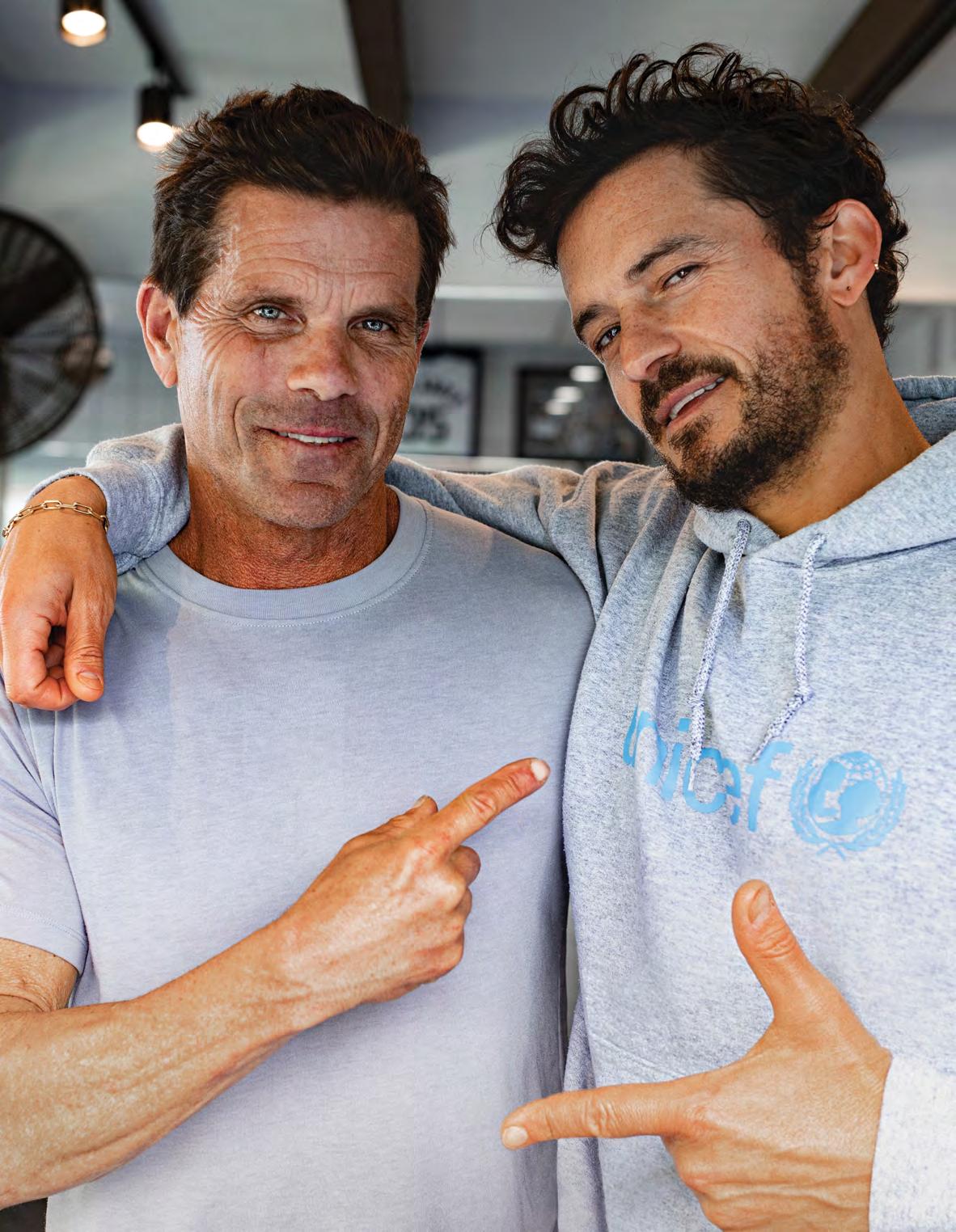
“I have had the privilege to work with Peter since I was a little girl aspiring to be a professional athlete, and I can honestly say I wouldn’t be where I am today without him. As a trainer, Peter is second to none. My fitness was incredible when we were working together fulltime, but beyond that, I think what makes Peter so special is how much he really cares about you on a human and personal level. Being an athlete, a lot of the work that needs to be done is in the gym and being in the best shape possible. But also mentally, I think having someone who really cared beyond just results was and is amazing.

Peter has a way of pushing you to your absolute limit in the gym and because of that, realizes what you are really capable of.”
handed a death sentence. His cancer had metastasized throughout his body, including his brain, and doctors gave him a close to zero chance to survive. I think anyone can understand why this man was so driven Not just to survive but to drink every drop of life before he expired. Now that doesn’t excuse what he did. But I certainly understand it.”
My friend JC explains, “Look, Peter’s a genius trainer. But he’s also much, much more. He’s a lifelong student and searcher. A guy who’s constantly upgrading his knowledge and database, often using himself as a guinea pig. He’s constantly fine-tuning, troubleshooting, and optimizing. The man is a walking Master Class. Having Park’s focused attention – having this world-class, encyclopedic fitness expert fine-tune your body and its physical, mental, and emotional systems is like having Steph Curry teach you to shoot from behind the arc. I mean that. Peter Park is to wellness and training what Steph Curry is to the three-point line. Full stop.”

LAKEY PETERSON

the best experiences l’ve ever had as a trainer was a five-year project with five baseball players starting when they were in 8th grade – Bryce, Trevor, Dalton, John, and Kevin. All had ambitions to play high school and maybe college ball. Maybe even win scholarships, who knows? Over the course of the five years I trained them, they developed into some of the fittest, strongest athletes I’ve ever worked with. All five played in high school, and all five earned college scholarships: Dalton at Brown, Bryce at Westmont College, John at UC Irvine, Trevor at the University of Hawaii, and Kevin at UCLA. But Kevin turned it down, because he got drafted in the second round by the Philadelphia Phillies. That group batted 1,000.”
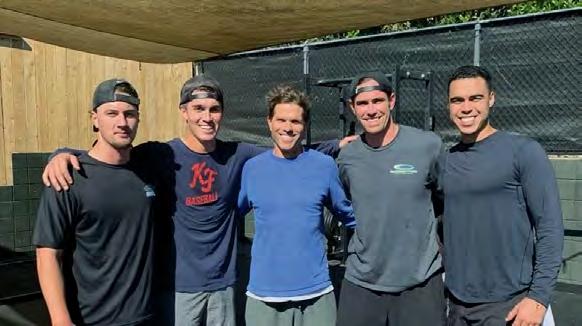 – PETER PARK
– PETER PARK
I ask Park if maybe JC’s concept could be grist for a book.
Les Firestein: Do you think JC Henry’s concept could be grist for a book? Peter Park: I’ve already had two books published.
LF: But those were workout books. Workout books are faddy. You should write about everything but the workout. Call it The Other 23 Hours. Aren’t we about due for a Tony Robbins replacement?
PP: Tony Robbins does fine.
LF: Yeah, but he’s been doing the same bit for 50 years. Imagine aggregating all the lessons you’ve learned from your NDA people and all the stuff they’ve learned from you. It’d be fascinating. And probably incredibly useful.
The typically discreet Park looks bemused but always plays his cards close to his battle-scarred chest.
PP: I’m always looking to grow and expand. That’s all I’ll say for now.
And with that, the world’s greatest trainer picks up his electrolyte water, slips on his backpack with a 50-pound weight inside, and walks out the door. He’s gotta go watch his son’s game.

“One of

“La Playa Pilates has been a part of the Montecito and Santa Barbara community for more than 21 years. We have clients who have been coming to us for that entire duration with all manner of life changes. Whether pregnancy, illness, training for a marathon, or recovering from injury, we adjust to their individual goals and objectives.


“We have a spacious, fully equipped studio with doors that open onto a beautiful courtyard, allowing in fresh air and sunshine. The studio is located at the Las Aves complex near the bird refuge in Montecito. Physical fitness and health are two of the most important requisites to happiness. At La Playa Pilates, we teach to the individual in front of us to help them attain and maintain a uniformly developed body. Whatever the individual goals are, they are made easier, more efficient, and enjoyable – whether playing tennis, pickleball, golf, or simply enjoying a pain-free life.
“La Playa Pilates is proud to host the Body Arts and Science International (BASITM), Pilates Teacher Training Certification Course. This allows us to maintain a high standard of training within our studio, teachers, and community. With several senior faculty as well as master-level teachers, we offer a wide range of different teaching skills, program development, and goal-oriented sessions.
“It is our philosophy to meet our clients’ needs and safety based on the most upto-date research. Let La Playa Pilates guide you to improved posture, energized physical fitness, and mental calm.”
“Alo Yoga is our anchor activewear brand, and I’m super grateful for that. Like my own brand –and many of the brands I carry – Alo Yoga has a wide size range, an inclusive size range, and they have lengths. Alo has a tall length, a petite length, and a capri. I don’t believe that if you’re a larger size you should be labeled ‘plus,’ nor should you necessarily be labeled ‘petite’ if you’re smaller. Some brands only want certain body types to wear them, and they’re not very inclusive. Women can come into Montecito Collective and find clothes that fit them.
“When someone comes into Montecito Collective, they are appreciated and they’re valued. We’re the kind of place where people can come in and feel at home – hang out with us, chat – and know that they’re not viewed as a ‘customer.’ The main brand we represent is Honesty. If someone tries something on and they want our opinion, if we don’t think it’s a great fit, we’ll say so. We’re not just pushing products. Activewear is a big part of us, but we have everything from intimates to dresses. Montecito Collective is body-positive, and I do everything small batch, using really high-quality materials. When you buy something from my store, it should last a very long time.”

1250 COAST VILLAGE RD., STE. G, MONTECITO, 805-705-5649
WWW.SHOPMONTECITOCOLLECTIVE.COM

“At Variant Training Lab, we use a high-performance, multidisciplinary model to treat the everyday person. All of the systems that the sports culture has built around athletes, we’re putting those to use here as advanced technology for everyone. People come in for the purpose of improving something they want to do. It could be hiking, it could be paddleboarding, surfing, tennis, pickleball – you name it. Our highly experienced staff is going to train you for the demands of what you want to perform in life.
“We view Variant Training Lab as a longevity clinic as much as we do a performance facility. Why? Because movement quality is longevity. If you can move well and without pain, you can stay active. Our core demographic is people who’ve led a very active life and want to maintain that active life. So, they come in to be able to continue to ride a bike, or surf – whatever it is that they’re passionate about. Our members have access to physical therapists, physicians, orthopedic surgeons, and sport psychologists as well as acupuncture and dry needling; we’re really proud of the full suite of services we offer. The technology we have doesn’t really exist outside of professional sports. By keeping people moving well for longer, we’re extending people’s health spans, which is the proportion of the lifespan when we’re actually able to be functional and enjoy life. That is a cornerstone of what we do.”

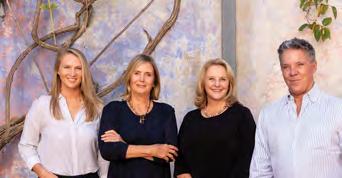
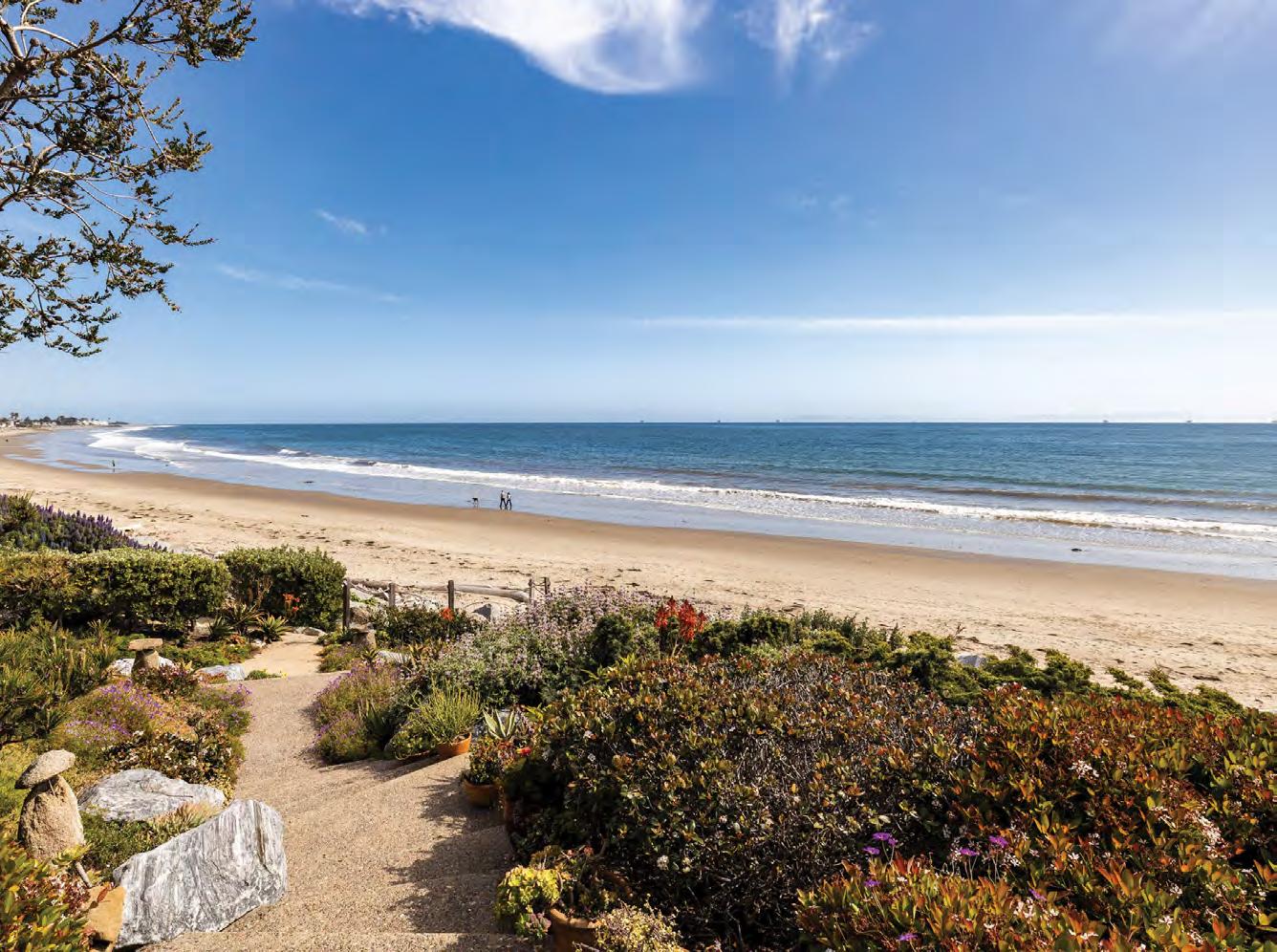



It’s been three decades since Harry Liquornik began fishing the waters off the Santa Barbara Harbor, and he doesn’t plan on stopping anytime soon. “I started out with a summertime deckhand job,” he recalls, “and I still haven’t signed up for college quite yet.”

As a teenager, Liquornik – a one-time big wave surfer who grew up in Santa Barbara’s Mesa neighborhood – had been accepted to Santa Barbara City College, where he planned to study for a career as a commercial welder. He never made it to class. Instead, he dropped out to fish full-time, working both the local sea urchin and abalone fisheries until the latter was closed in 1997 to allow the stocks to replenish.
Unassuming and soft-spoken, Liquornik, who used to fish for urchin with famed diver Stephanie Mutz, is probably Santa Barbara’s foremost sea urchin expert. On a recent Saturday morning, he cracks open a freshly caught specimen on a table set up beneath an easy-open tent on the pier. “This is what you want to see,” he says, indicating a trio of orange-colored slabs lining the shell inside the spiky creature. “You want that nice orange-peel color.” Liquornik is pointing at a nearly ideal cache of eggs inside the urchin. The tiny eggs, which look more like a paste than a bundle, are also known as uni, and are both a favorite of sushi restaurants and a much sought-after seafood product for which the Santa Barbara Harbor is famous. A traditional Japanese delicacy, the eggs are typically eaten at the start of a meal and are associated with special occasions.
Uni is also what has drawn a line of people, many of them tourists, to this pier on Saturday, when Liquornik and other local fishermen set up their market once a week. Liquornik says Santa Barbara’s uni craze began about 15 years ago. “It used to be just sushi bars that ordered it,” he says. “But now with the new American cuisine restaurants, we have picked up a lot of markets.”
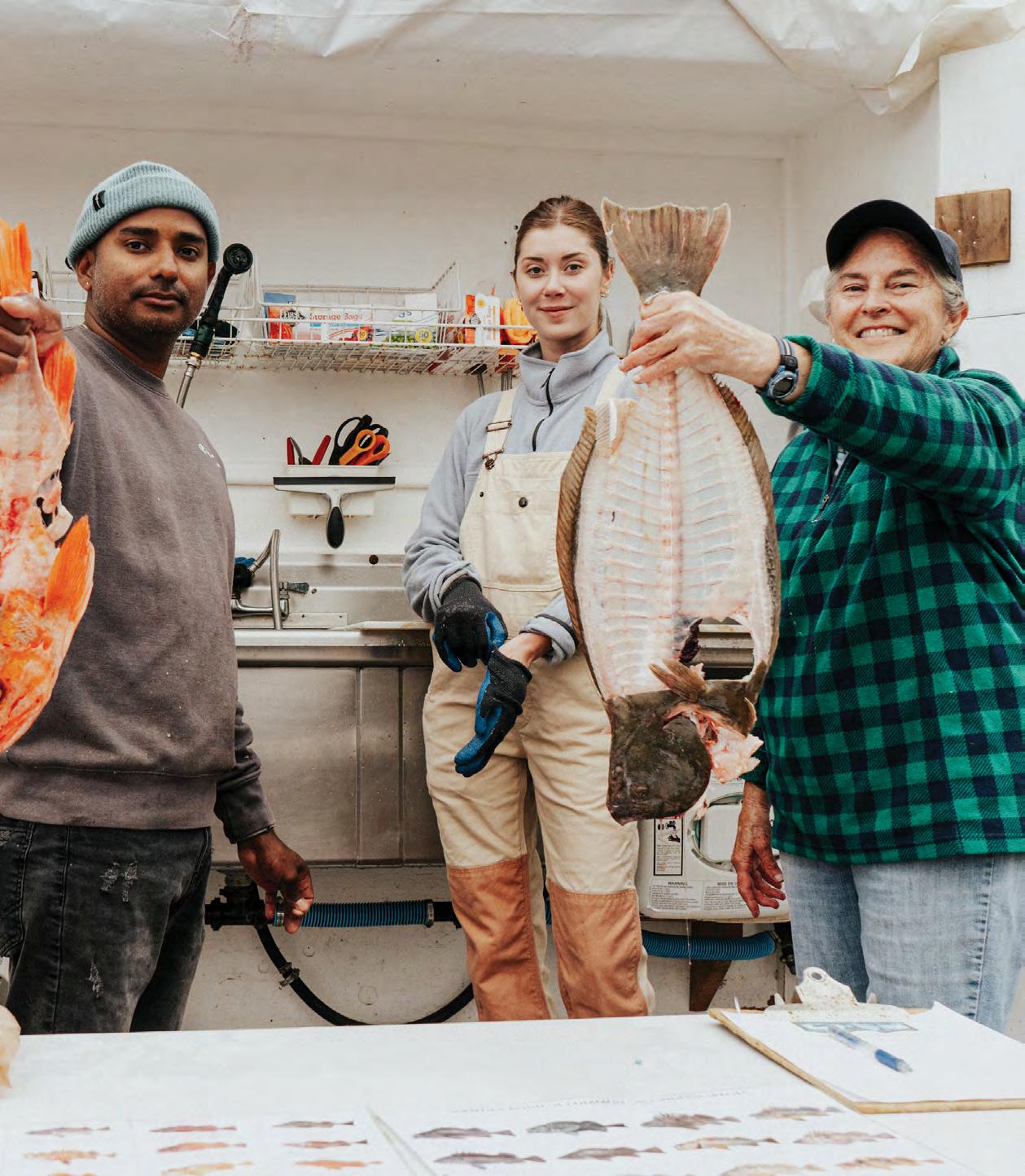
As Liquornik explains, there’s an art to sea urchin fishing in Santa Barbara. “We are constantly watching the weather, and we get up early,” he says, adding that the spring season – especially one following a winter of heavy rains and storms –is the most difficult time of the year to harvest uni. “The best time of year is September or October through December or January,” he adds. “After that, when the winter storms come, that clears up the [ocean] floor, and that’s their cue to spawn.”
Santa Barbara’s urchin ecosystem presents unique challenges and opportunities, thanks to the nearby Channel Islands. “There are so many microclimates out there, and you can get urchins year-round,” Liquornik explains. Nowadays, Liquornik, whose only social media presence is on Instagram at @santabarbarauni_, mostly sells his urchins via direct marketing and to wholesale buyers. After catching the urchins, he keeps them alive underwater for up to 10 days using the catch to supply local fish markets and the occasional buyer from San Francisco or Las Vegas.
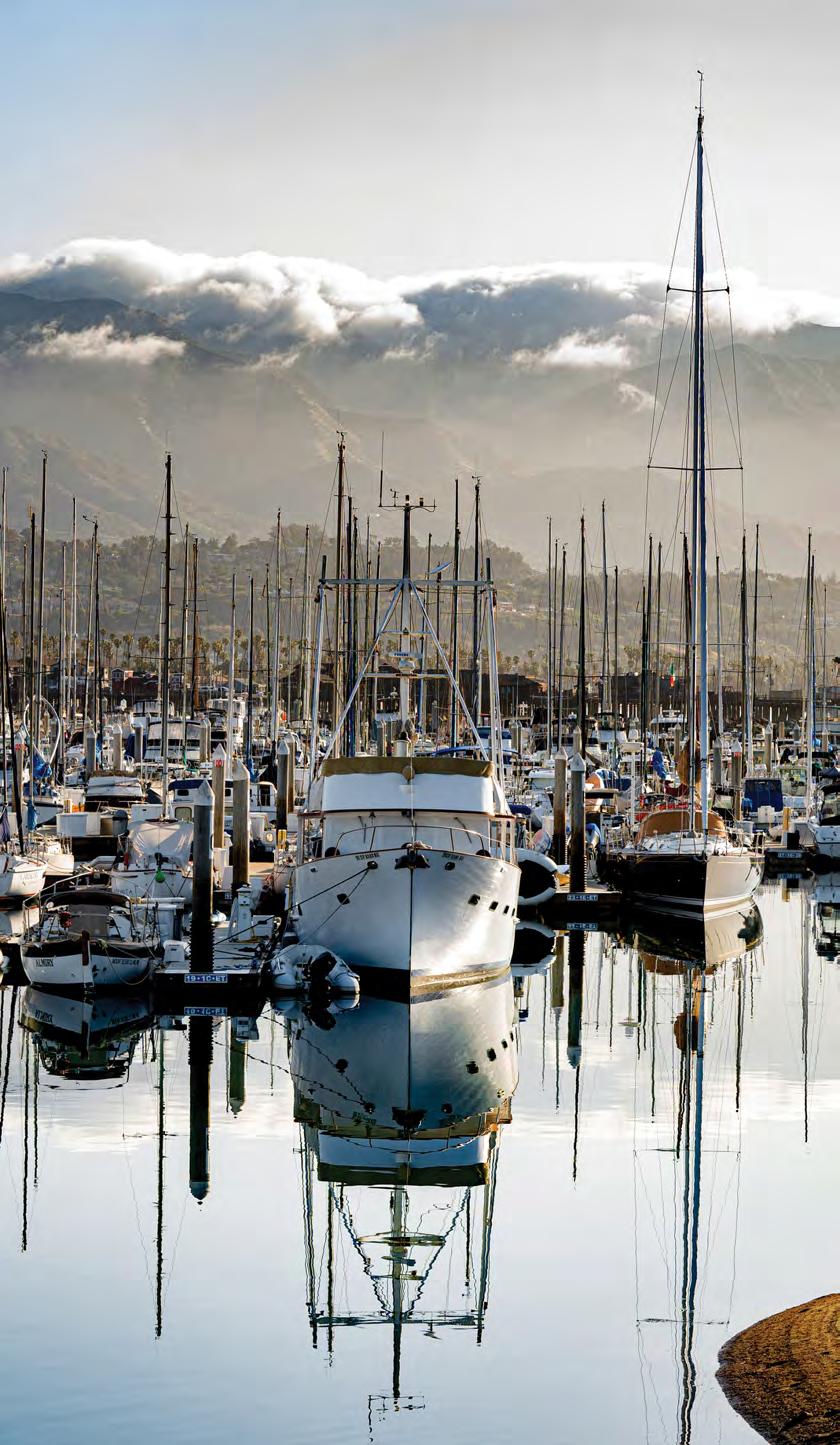
Santa Barbara’s uni is cherished as far away as Japan, along with vermillion rockfish and channel rock cod – the latter known as kinki in Japan, which is typically a byproduct of black cod fishing.
“Santa Barbara uni and kinki are well regarded in Japan and often shipped out to Japan from our waters,” says Scott Yonamine, chef de cuisine at the Rosewood Miramar Beach’s AMA Sushi restaurant.
“Today, in Santa Barbara, you can easily find and buy local uni at the fish markets. Kinki is slightly harder to find but is available. If you want it consistently, sourcing and buying it from Japan is your best option – unless you find the right Santa Barbara fisherman!”
According to Yonamine, Rosewood Miramar Beach and AMA Sushi source their black cod, ver -


million, halibut, uni, abalone, spot prawns, and spiny lobster locally from Santa Barbara waters. “We are currently experimenting with a local white fish that resembles a Japanese amadai fish to continue our local sourcing efforts,” he adds. “We love the abundance of great, responsibly sourced local fish that is right at our doorstep. It is a great opportunity to create exciting new dishes with each new season based on what the Santa Barbara waters have to offer.”
Aside from Liquornik’s operation, there are several other local fishing companies that operate out of the Santa Barbara Harbor and offer top-quality seafood, including The Good Captain Co., which is run by John Hoadley and his wife, Lindsey. The couple’s company

officially dates back 15 years, but Hoadley has been working out of the harbor for 20 years – since he was 20 years old. The company currently offers spiny lobster, uni, and sea cucumber (with plans to sell whole fish, including rockfish, halibut, and white seabass beginning next year). “We sell the majority of our catch to local California restaurants, including the Santa Barbara Shellfish Co. and their other restaurants. We love them because they buy from local fishermen,” says Lindsey, explaining that many restaurants in Santa Barbara have seafood shipped in from out of the country. “We’re very passionate about the Santa Barbara fishing industry.”
It’s difficult to date exactly when Santa Barbara’s storied tradition of fishing
and diving began. Much easier to chart is the rise of the waterfront area itself. When tourists and first-time visitors arrive at Santa Barbara’s coastline, the first thing they’ll likely notice is Stearns Wharf, the behemoth, car-friendly pier that features five restaurants and stunning views of the Santa Ynez Mountains and the Pacific Ocean. Of course, Santa Barbara itself wouldn’t exist without the mighty wharf, which opened in 1872 when John Beck Stearns built it to off-load the lumber that was shipped down the coast from northern California and the Pacific Northwest and used to build the city.
The pier where Liquornik and Hoadley dock their boats is at the Santa Barbara Harbor, where local commercial

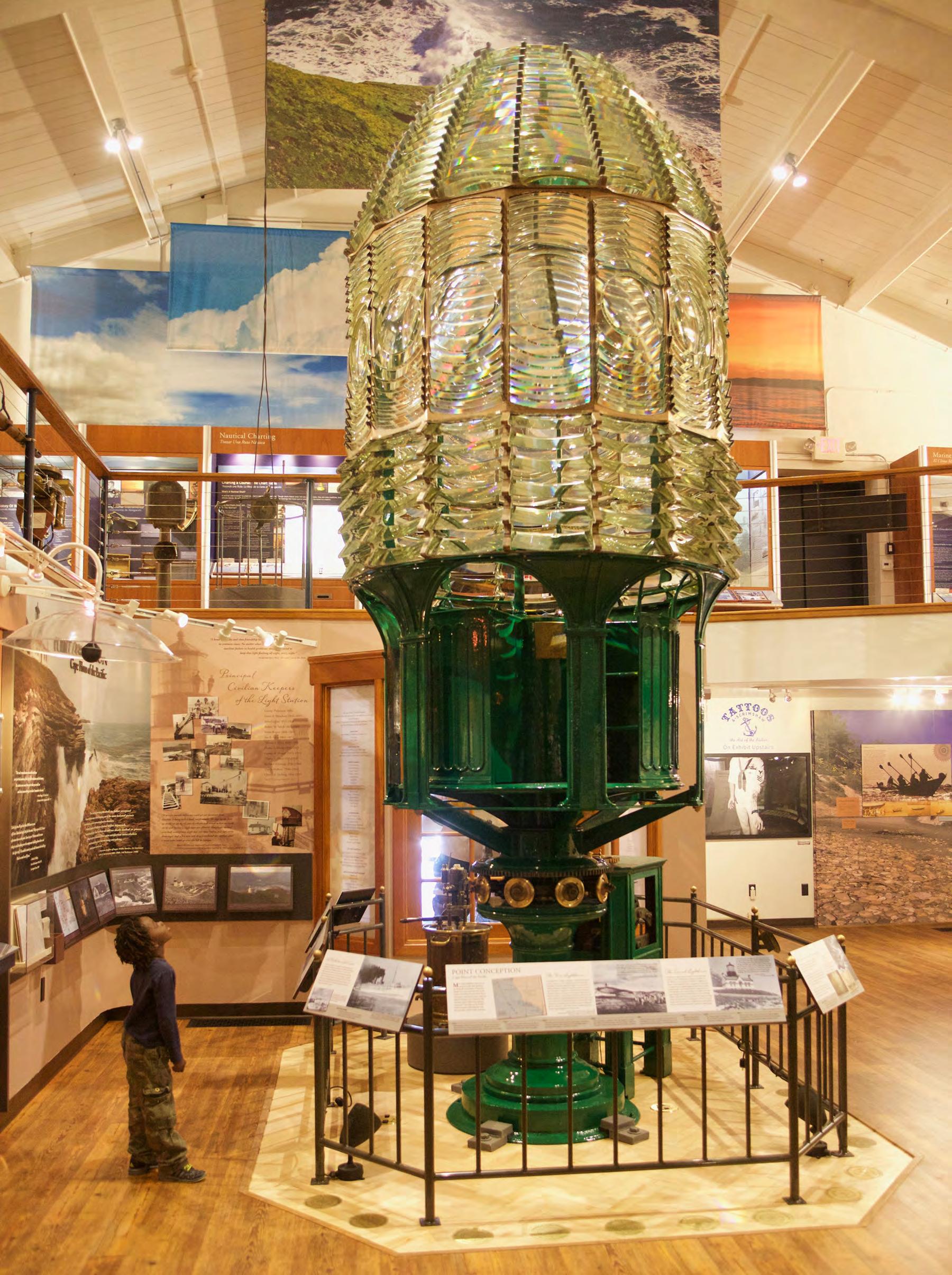








fishermen and recreational sailors share space with the U.S. Coast Guard and National Oceanic and Atmospheric Administration in a tidy yet bustling marina area. Visitors there can explore the nearby promenade and pier or walk the length of the breakwater – and also have their choice of delicious seafood restaurants and fresh markets, as well as kayak and paddleboard rentals, dive and gear shops.
The marina dates back to the early 1900s, when Santa Barbara city officials authorized dredging operations at the harbor to allow larger vessels to dock there. And then in 1928, a breakwater was installed to protect the boats from ocean swells. A few decades later, the marina grew to include space for more than 1,000 boats and the Santa Barbara Yacht Club, which originally formed in 1872, opened its doors at its current location in 1966.
“There are 1,100 slips here,” says retired contractor, avid grandfather, and fisherman Jon Jorgensen, who has kept a pair of yachts – a 36-foot sport fisher named Setag (his wife’s maiden name spelled backward) and Busted Flush, a 21-foot cuddy cabin boat named after the houseboat that Travis McGee lived on in the John MacDonald novels – at the harbor since 1998. “The waterfront allows 10 percent of the boats to be liveaboard,” he adds, “so we have 110 liveaboards.” Slip holders include everyone from “regular” folk – many of them retirees, doctors, or stockbrokers – who live on their modest boats yearround to celebrities who pay to park their yachts there.
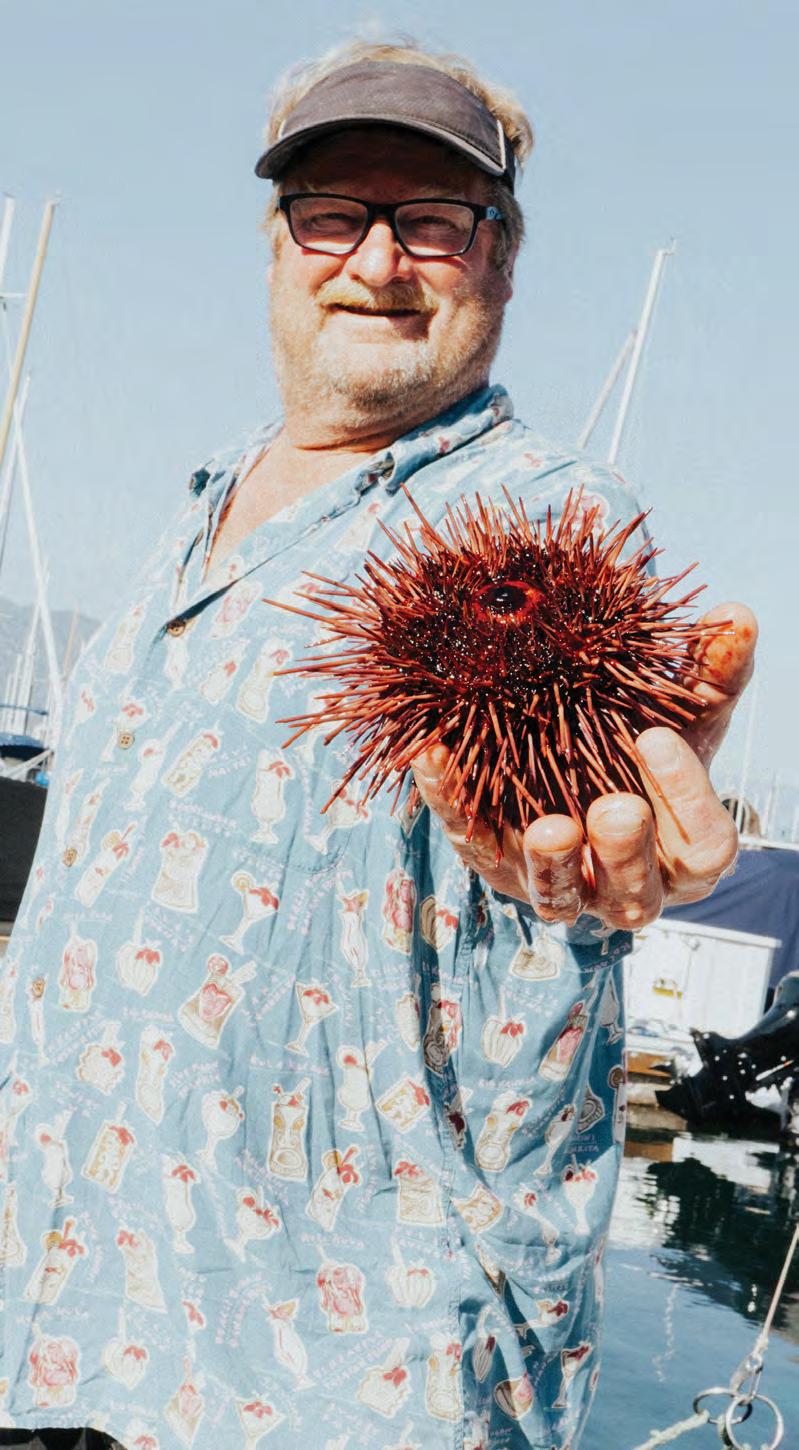
Good luck finding a slip for your yacht, however – there’s a wait list. “We don’t have any more room,” says Jorgensen, who volunteers at the Santa Barbara Maritime Museum, which is located inside the largest building at the harbor –the Navy Reserve Center building. Built in the 1930s as a Works Progress Administration project and originally called the Naval Reserve Armory, it’s the most solidly constructed edifice anywhere in town, says Jorgensen.
“It was built right after the Hoover Dam,” he says. “And just like Hoover

Dam, it’s all concrete. If there’s a tsunami, you want to be in this building.”
The maritime museum offers the best guide to Santa Barbara’s waterfront history – from the Chumash era to the rise of Santa Barbara’s fishing, commercial diving, and surfing industries – with exhibits that include antique diving suits and an actual submarine periscope.
The periscope reflects Santa Barbara’s World War II-era role in defending California’s coastline. In 1941, the Navy constructed the pier as part of a project to build a destroyer base for submarine patrols. The Navy also built two other large structures at the pier that house current tenants such as the Santa Barbara Fish Market, famous for its selection of legendary fresh seafood such as locally caught Channel Island rockfish and hook-and-line halibut that is brought to the market daily by fishermen operating at the harbor (and also seems to be the only place in Santa Barbara where you can buy the best sushi rice grown in California – Shirakiku brand shortgrain Koshihikari).
Next door to the market is Santa Barbara Adventure Company, where you can rent kayaks and paddleboards to explore the marina and harbor areas, either alone or in group tours. Tucked in between that and On The Alley – a sister restaurant of the Brophy Bros. eatery/institution that offers the best Baja-style fish and shrimp tacos in town – is the Blue Water Hunter dive shop, the go-to spot for top-of-the-line reels, spears, dive suits, and lures for recreational deepsea fishermen and spearfishers.
For those in the know, the harbor’s main attraction is the Saturday Fisherman’s Market operated by the Commercial Fishermen of Santa Barbara. The market is open from 6 to 11 am every Saturday and currently features nine vendors, including Ocean Rose Fisheries, which is operated by brothers Garrett and Connor Rose and offers fresh-caught black cod, halibut, king salmon, and rock crab. The one non-boat-oriented vendor in the market is The Cultured Abalone Farm, which grows abalone at a nearby farm




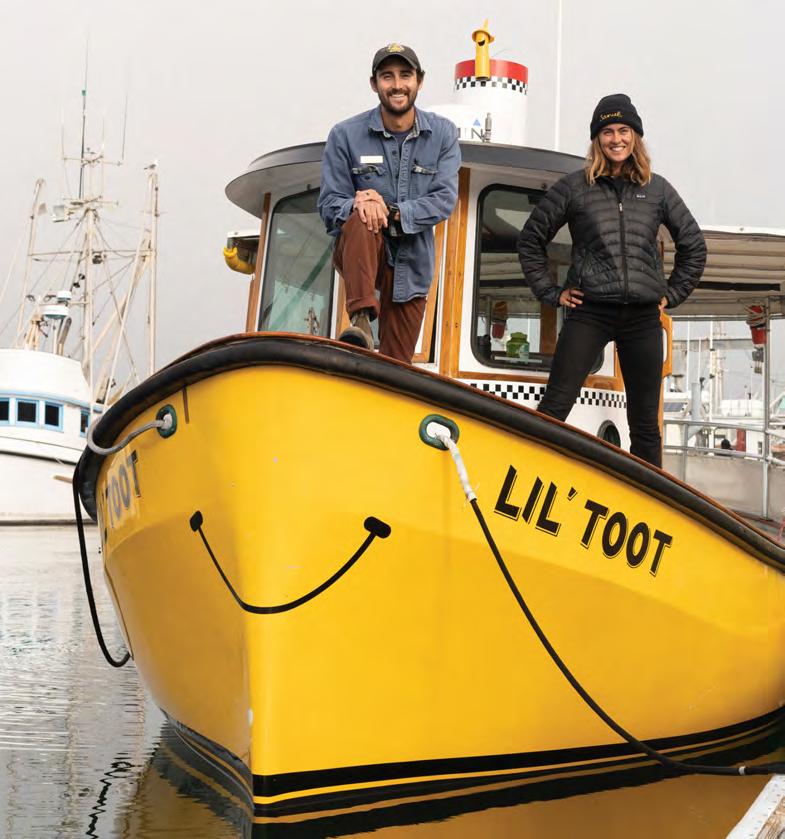
and provides the shellfish to local markets and restaurants. “Abalone are an iconic local seafood species, and we are proud to play a part in keeping that history active,” says Ann Bishop, who on a recent Saturday was selling live red abalone and cultured edible seaweeds on the pier. “Like any seafood, you want to know where it’s coming from and that it’s coming from a sustainable source. Shellfish and seaweed aquaculture is just one of the ways we can promote a sustainable local seafood industry.”
Both the abalone and Liquornik’s uni stand drew equally enthusiastic crowds. Unlike most uni you taste at a sushi bar, which, while fresh, has still been processed and treated with a preservative that slightly changes the taste, Liquornik’s table gives you the opportunity to sample the uni and its true terroir in all its briny glory. Other than catching the sea urchins, cracking them open for lines of customers seems to be the favorite part of Liquornik’s job. He says, smiling, “Santa Barbara has really made a name for itself with uni.”
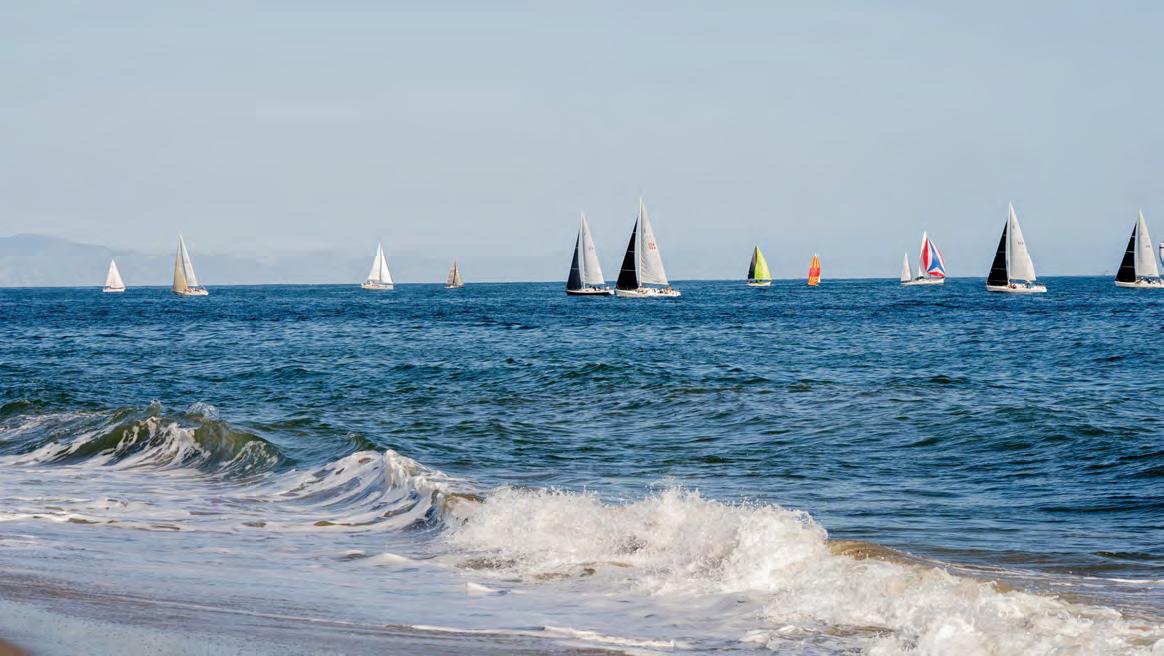




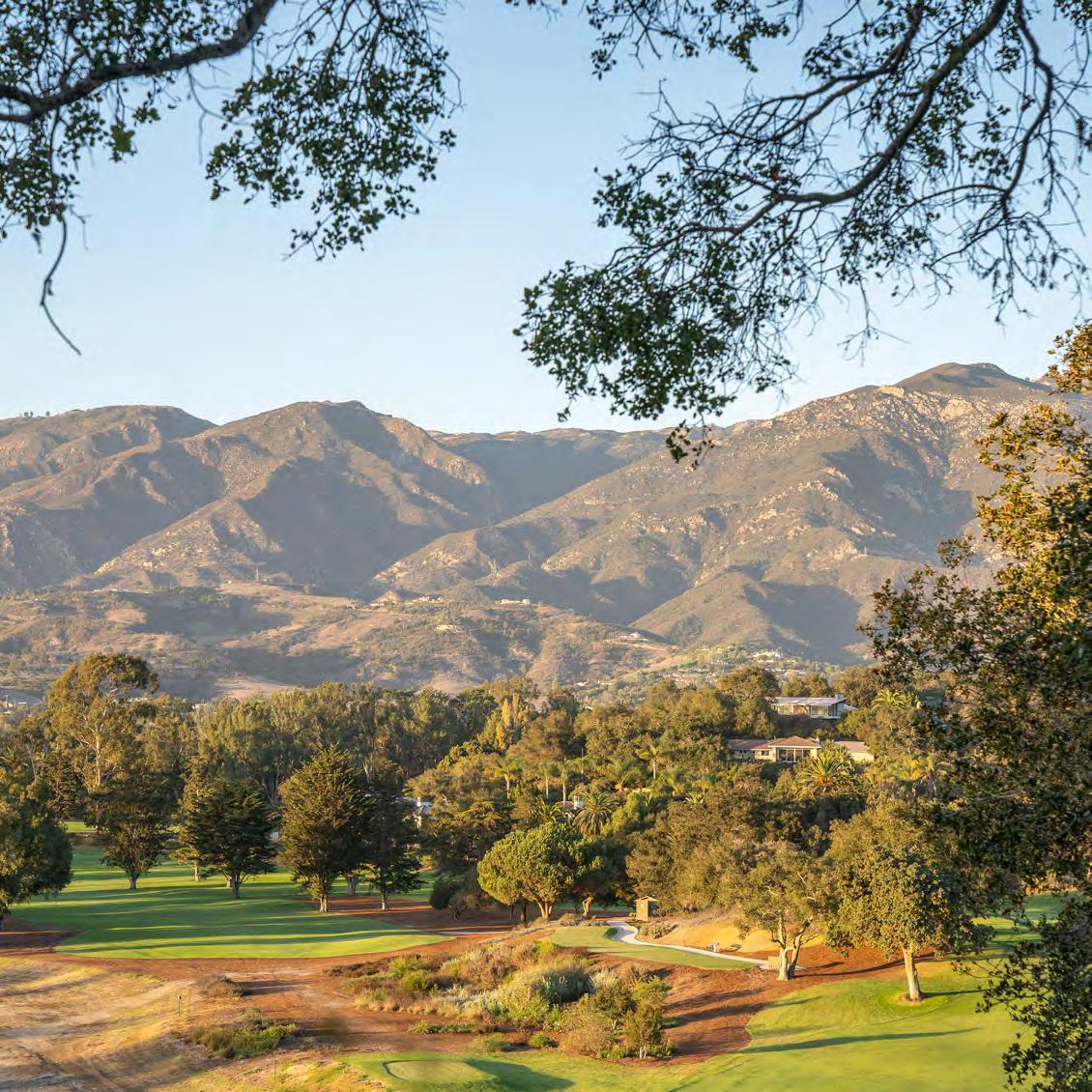

PRIVATE DINING IS THE LATEST NOTCH FOR THE SAN YSIDRO RANCH’S WINE PROGRAM

In some ways, the brand-new private dinner offering at the San Ysidro Ranch – a bespoke gastronomic experience that takes diners into the depths of its storied wine cellar – is a testament to consumer demand. “Diners would always ask if they could check out the wine cellar,” says sommelier Tristan Pitre, the Ranch’s wine collections manager. “We were always taking guests down there, showing off the collection, letting them see the cellar. Of course, now they’re not just seeing it – they’re immersing in it.”
The Secret Cellar allows guests at the San Ysidro Ranch to enjoy private multicourse meals while surrounded by what’s considered one of the premier restaurant wine collections in the country. After sips of bubbly in the historic 1892 Hacienda and a tour of the organic garden, guests are led to a secret door that’s accessible only by retinal scan, then down stone steps and past tower after tower of wine, before reaching the entrance to the private chamber. The rustic yet luscious room feels like a seamless extension of the longstanding cellar itself, with dark wood and metal accents and a dramatic brick-tiled vaulted ceiling. The centerpiece? A stunning table carved from one single slab of black walnut, surrounded by tailored furnishings handcrafted in Santa Barbara and flanked by wooden shelves that showcase thousands of premium labels.
“The new cellar experience is a way of expanding what we have to offer to our discerning guests, many of whom are avid wine connoisseurs, in an intimate and personalized way,” says the Ranch’s general manager, Ian Williams.
Pitre works in tandem with executive chef Matthew Johnson to create a personalized menu for private parties of two to 14, priced around $250 per person. Guests can add wine from three pairing tiers: Wanderlust ($125

per person), for a premium international lineup; Reserve ($200) with wines emblematic of their regions of origin and including a deep dive into their respective histories and traditions; and Warner ($350), featuring the best of both, and a no-holds-barred exploration of truly top-tier wines. “We’ve hosted several dinners” since the program launched in under-the-radar fashion in December, adds Pitre – and as word spreads, “we’re definitely getting a lot of calls” from curious foodies.
The Secret Cellar is the latest triumph for the San Ysidro Ranch’s highly regarded wine program. And while guest expectations certainly inspire this type of creativity and investment, a unique offering like this is definitely done by design. Building a singular wine experience has been a priority for Ty Warner ever since he bought the property in 2000. “It’s always been Mr. Warner’s vision to create a world-class food and beverage program at San Ysidro Ranch and to build a wine program that rivals the best in the world,” adds Williams. “We want to be known as a destination for food and wine lovers looking to experience something that they cannot get anywhere else.” Easier said than done, but done, nevertheless.
“This cellar, and the history here of a really great wine program – it’s always been a big draw for guests. It was a big
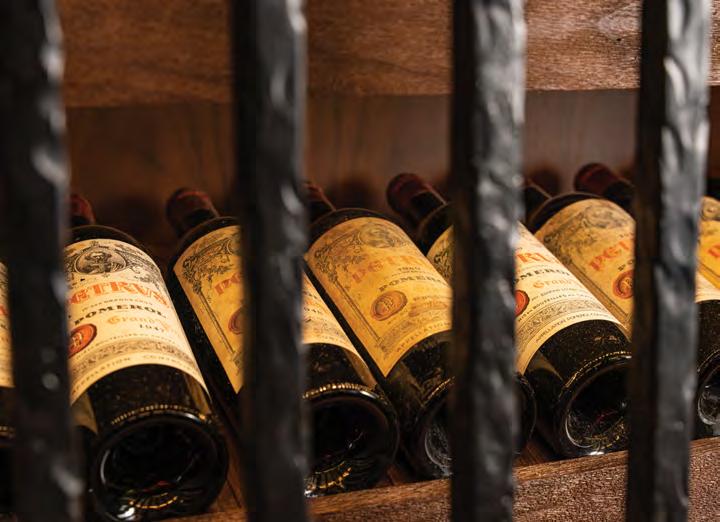

draw for me, too, when I was deciding where to go next,” adds Pitre, who arrived at the Ranch three years ago following stints in San Francisco and Minneapolis – and who is now charged with sourcing all its wine selections.
The Ranch’s wine cache stretches back several years. The wine list at The Stonehouse restaurant has earned the prestigious Grand Award from Wine Spectator every year since 2014. And while the 2018 debris flow famously destroyed the original wine cellar and wiped out its impressive contents –classic vintages worth more than $3 million – the rebuild has wowed the wine world.
Expertly outfitted with all the optimum light, humidity, and temperature considerations, the new





cellar at the Ranch houses 12,000 bottles that span 70 regions across the globe. About 20 percent of the wines spotlight Santa Barbara County, including premium producers such as Mail Road Wines, The Hilt Estate, and LaBarge Winery.
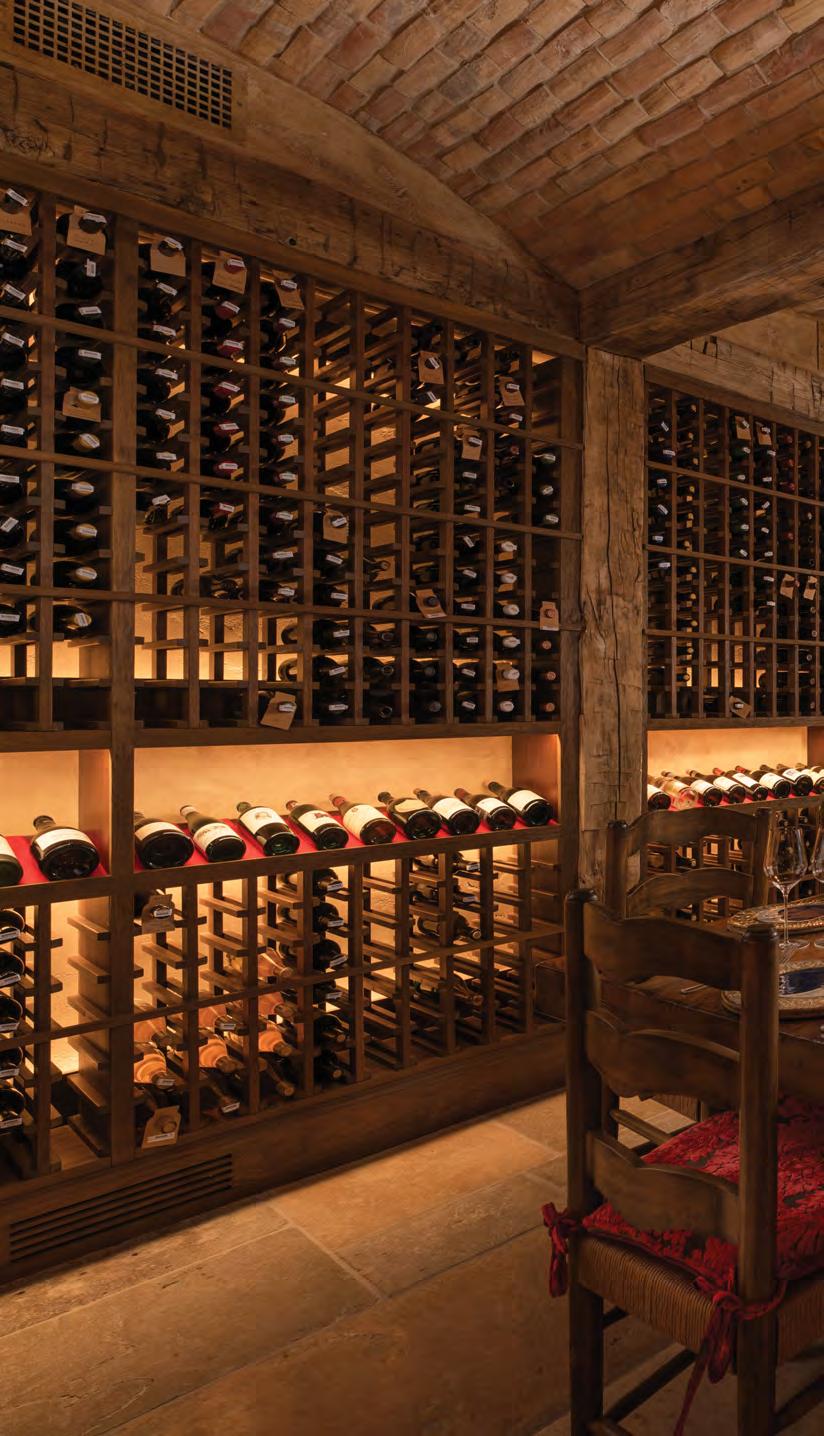
For boutique producers like Los Olivos-based Story of Soil, producing great wines creates buzz, but with limited marketing budgets, “Tristan’s ability to tell our story on the floor means everything,” says winemaker Jessica Gasca. “Because of him, those enjoying our wine during their meal will inevitably come to seek out more information about our program. We are humbled to be added to the [San Ysidro Ranch] list among the world’s leaders of world-class wine.”
AJ Fairbanks, the estate director at Crown Point Vineyards in Santa Ynez, echoes the sentiment, admitting that “being in the company of some of the most sought-after wines from around the world” both “validates our vineyard’s pedigree” and “correlates with the burgeoning demand for our wines.” The Ranch wine list features three wines from Crown Point, which has an annual production of only 2,500 cases. Adds Fairbanks, “We are incredibly fortunate to collaborate with a sommelier as accomplished as Tristan Pitre, who frequently tastes the Grand Crus and First Growths of the world.”
Pitre is “constantly buying” to ensure that “we maintain certain placements that have been important over the years,” he says of limited allocations of coveted producers from Burgundy – for example – as well as Napa and Sonoma. And there’ve been a few keen acquisitions from producers in southern hemisphere wine-growing regions in South Africa and Argentina. “For a while, these regions were highlighted as just a value,” says Pitre. “Value gets your name on people’s minds, but it doesn’t have a long trajectory. These regions are finally offering wines that are world-class and high-quality, and that’s what affords a wine region longevity.”
Inarguably, the greatest of all acquisitions for Pitre and his team is the
“
The new cellar experience is a way of expanding what we have to offer to our discerning guests, many of whom are avid wine connoisseurs, in an intimate and personalized way.”
– Ian Williams, general manager, San Ysidro Ranch

Riskin Partners’ in-house marketing division allows our brand and our properties’ reach to be thoughtful, precise, targeted, and truly innovative. Our success comes from the strength of our marketing plus our proprietary database, cutting-edge strategies, network connections, and two decades of market leadership in Montecito.



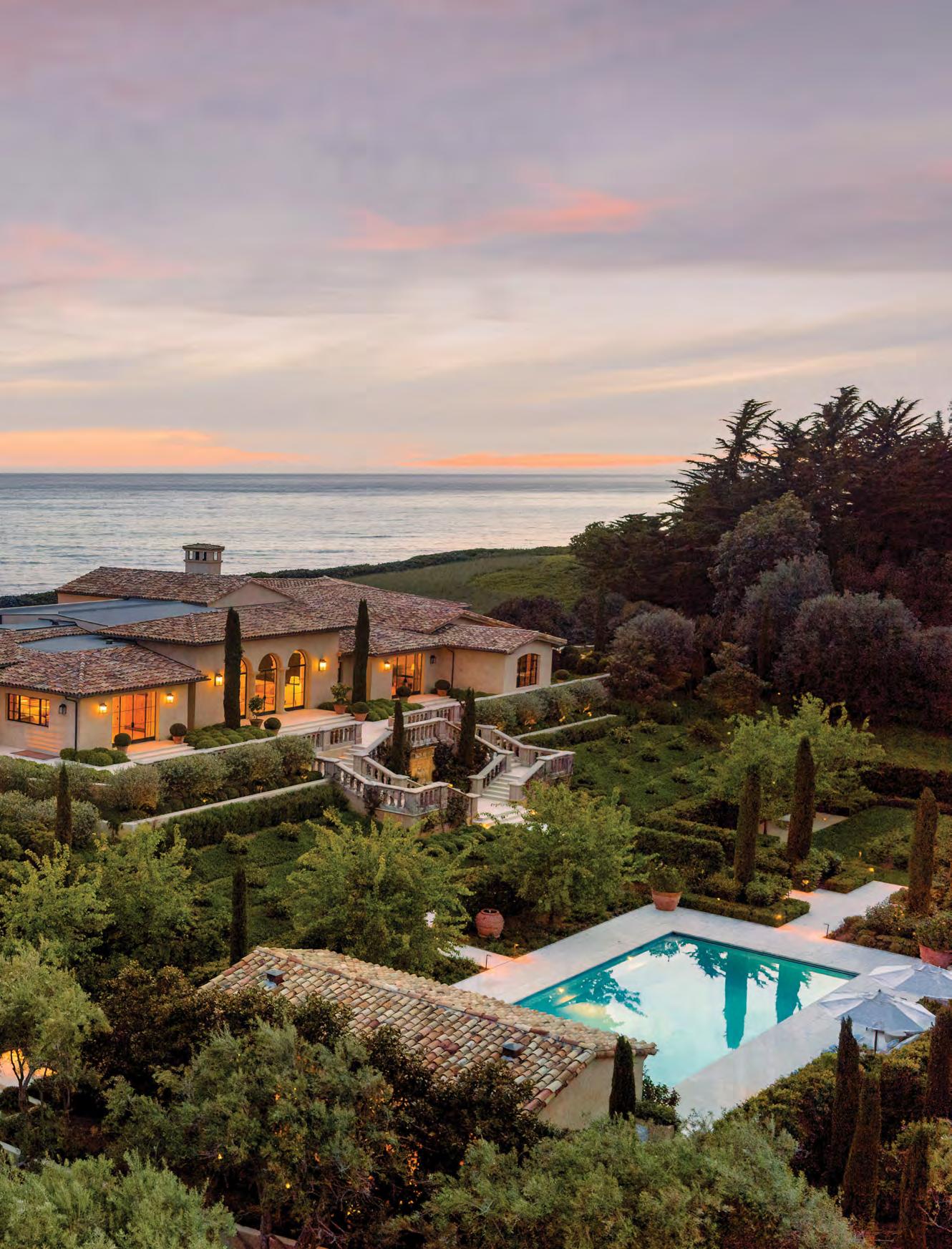


Riskin Partners’ unique approach to real estate blends the attention to detail of a white-glove, concierge service with the expertise of data-driven business analysts and the creativity of a world-class marketing firm.
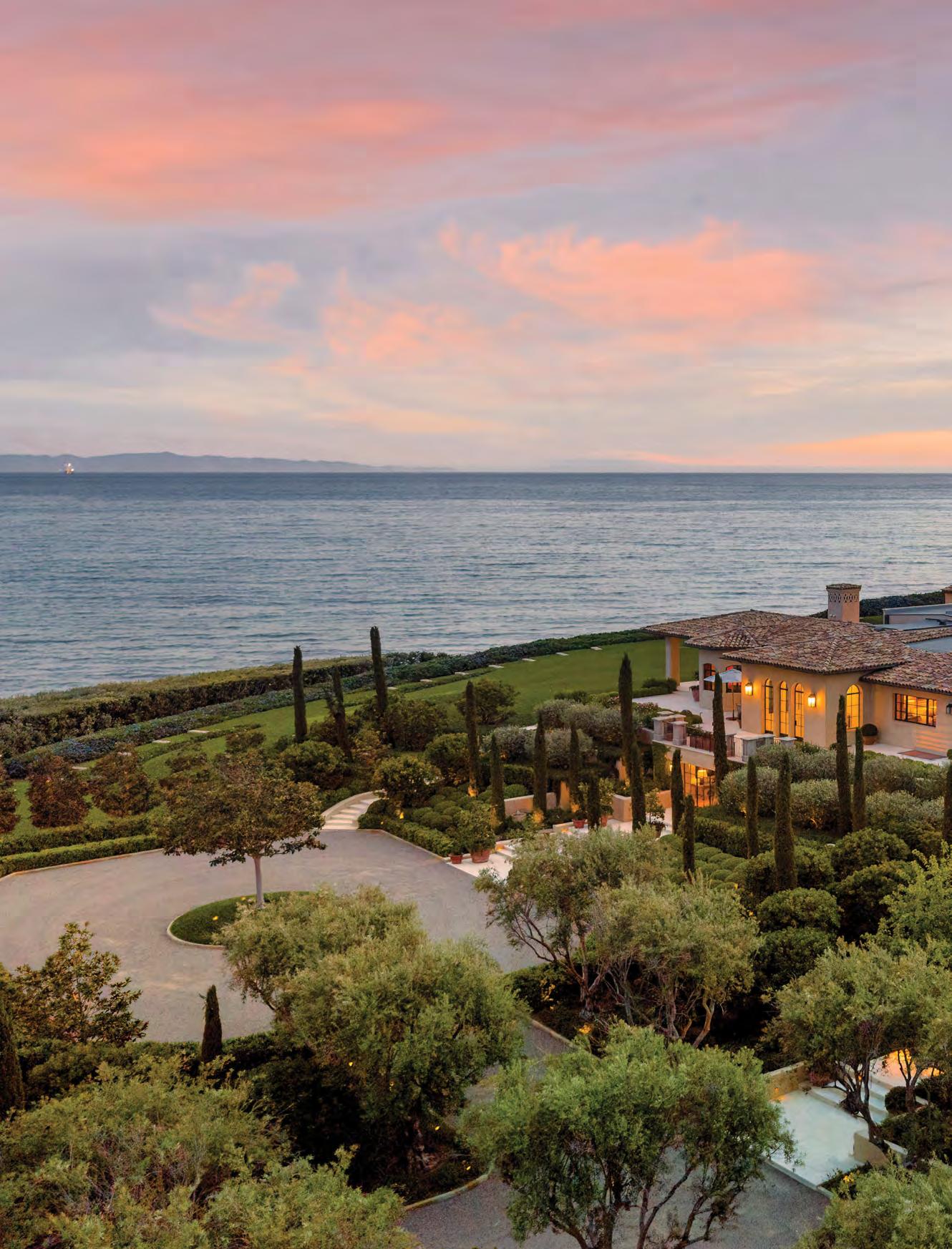
Their market knowledge, client advocacy, and sales record set them apart from a crowd of colleagues. Working as an ensemble, Riskin Partners offers clients a unique value proposition and exceeds expectations at every turn.






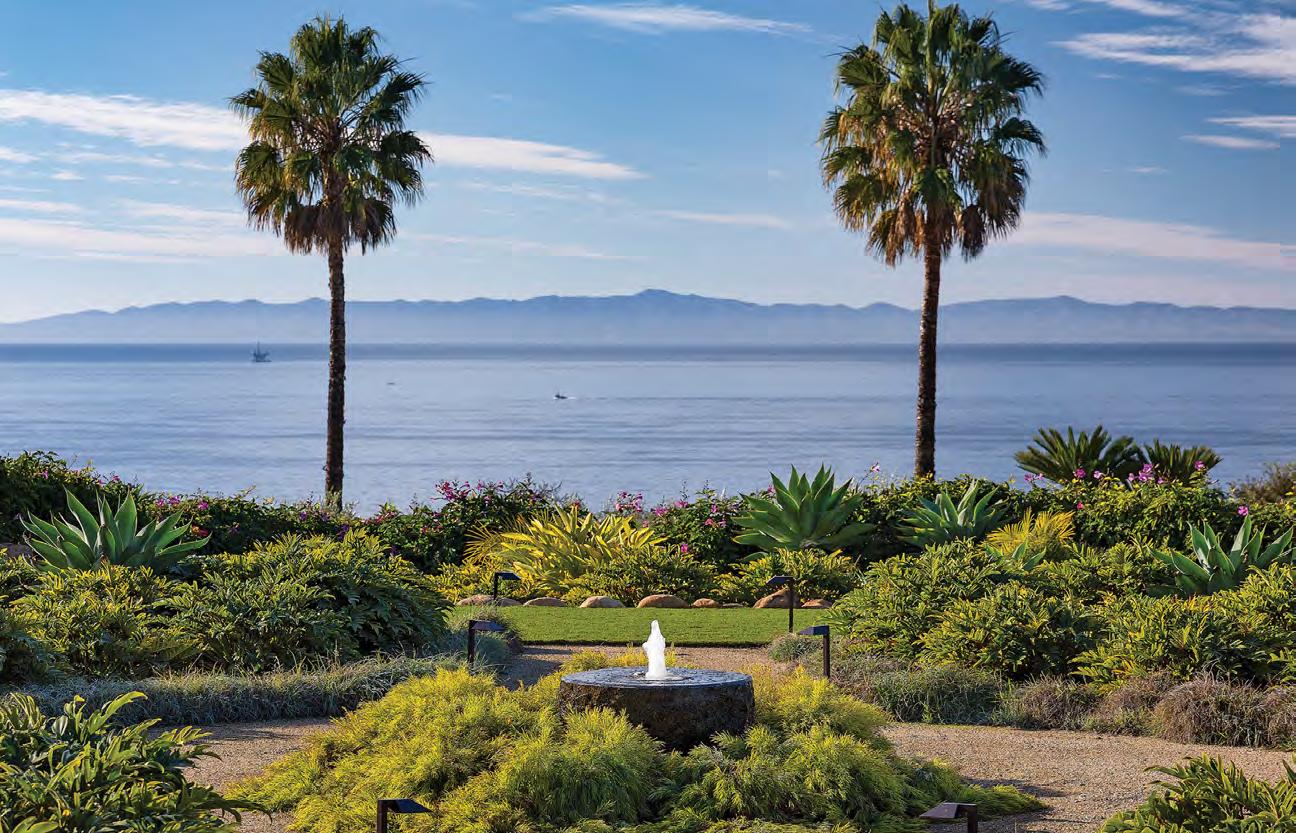
 2170 ORTEGA RANCH LANE OFFERED AT $16,250,000 ORTEGA-RANCH.COM
850 ROMERO CANYON ROAD PRICE UPON REQUEST ROMERO-CANYON.COM
2170 ORTEGA RANCH LANE OFFERED AT $16,250,000 ORTEGA-RANCH.COM
850 ROMERO CANYON ROAD PRICE UPON REQUEST ROMERO-CANYON.COM
Riskin Partners is an elite real estate team of Montecito’s top agents: Dina Landi, Sarah Hanacek, Jasmine Tennis, and Robert Riskin. For nearly two decades, they have consistently led the luxury market, and for fourteen out of the last fifteen years, they have been recognized as the number one team in sales across all brokerages. From small cottages to grand estates, together, the team has closed in excess of $3.5 billion in real estate, more than any other agent or team in Montecito or Santa Barbara.
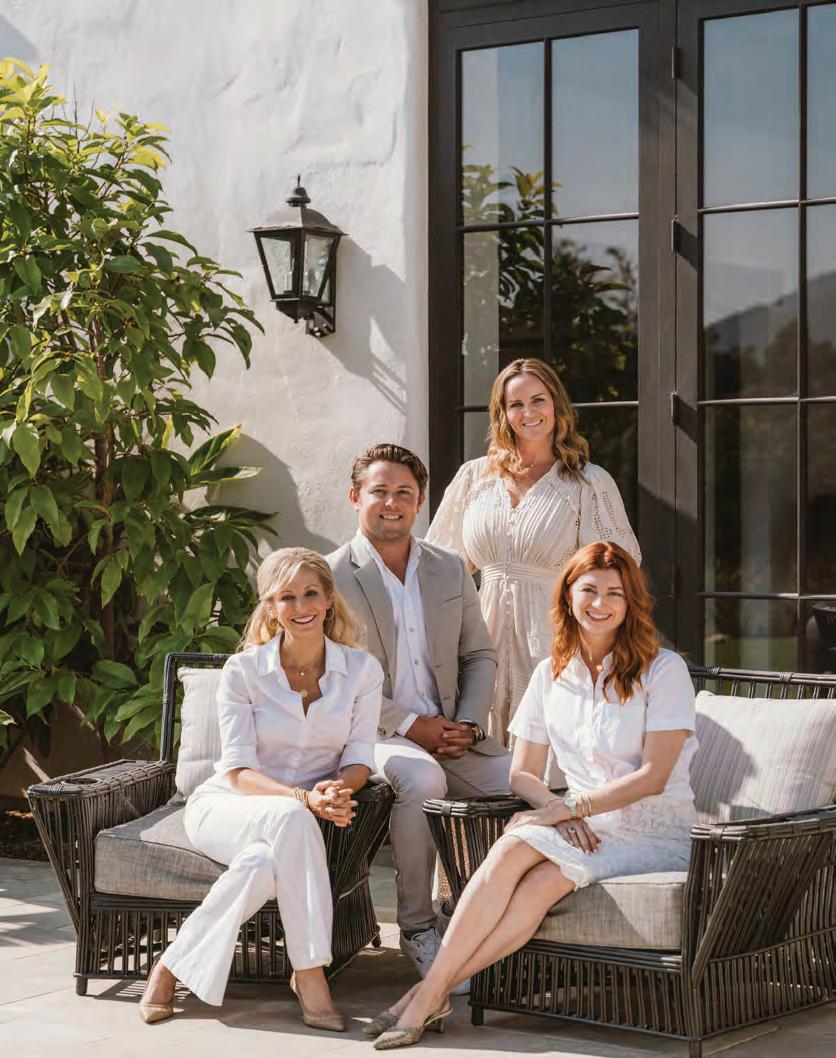
complete vertical of Château Petrus, with vintages dating all the way back to 1945. Stalled by temporary tariffs that sent import prices soaring, the purchase took two years to complete. But with provenance guaranteed – the collection only had one previous owner, who obtained it directly from Petrus – the buy created the most extensive offering of the storied wine brand in the United States. “Outside of France, this is the best Petrus experience you’re going to get,” says Pitre.
The collection’s arrival in April 2021 delivered 70 vintages across 120 bottles, with most of the early vintages as single bottlings and most of the older vintages, from 1966 onward, as duplicates. Only three years – 1956, 1965, and 1991 – are not represented. “The only gaps in the collection are poor vintages where wine was not produced by Petrus,” says Pitre.
The Petrus lot takes up two pages on the San Ysidro Ranch wine list, and the price points definitely match its rarity and distinctiveness. The one bottle of the 1945, for example, which is considered a superlative 20th-century vintage in Bordeaux, is listed at $38,500. “It’s priced to make it a big sale – a big moment both for us selling it to you and for you buying it,” adds Pitre. Once the 1945 is ordered, “restocking it will be pretty much impossible.”



Other vintages of note include the 1947 ($31,500), the 1959 ($13,500), the 1961 ($25,000), the 1982 ($12,500), and the 2000 ($14,500). The lowest-priced Petrus on the list? The $3,500 bottle of the 1977 vintage, a frosty growing season followed by a cold summer in Bordeaux.
The new Secret Cellar experience includes a visit to the Petrus exhibit, which is housed behind a small fortress of iron gates. Guests linger here, for the selfie op for sure, but also for the myriad firsthand stories that help bring some of the most famous wines in the world to life. Just one more notch for what has become one of the greatest wine experiences available on Earth in one of the nicest venues in the United States.
“ We were always taking guests down there, showing off the collection, letting them see the cellar. Of course, now they’re not just seeing it – they’re immersing in it.”
– Sommelier Tristan PitreSommelier Tristan Pitre

The 2017 Crown Point Cabernet Sauvignon showcases the vineyard’s signature variety, with grapes sourced from elevated, sun-bathed hillside blocks. Comfortably nestled between the Santa Ynez coastal range and the San Rafael Mountains, Crown Point Vineyards benefits from the proximity of the Pacific Ocean some 12 miles to the south. This combination of mountainous terrain, unfiltered sunshine, and dynamic ocean breezes produces the mild Mediterranean climate for which the region is justly celebrated. Cooling Pacific winds flow through the hilly terrain, dispensing pools of standing heat and slowing the grapes’ ripening process.

The vineyard’s mineral-rich, comparatively rocky soil combines with this ocean-cooled, sun-soaked climate to create a unique balance. Crown Point Vineyards is deeply committed to environmentally harmonious viticulture practices, and the resulting wines are alive with the terroir of the vineyard.
1733 FLETCHER WAY, SANTA YNEZ (805) 693-9300, WWW.CROWNPOINTVINEYARDS.COM
Stubborn soils, brisk winds, and the proximity of the breeze-tossed ocean create a complex clime whose challenges are risen to by determinedly slow-ripening grapes that transfigure into expressive red fruit and cooling herbs. The 2020 Hilt Estate Pinot Noir, Sta. Rita Hills features a plush, polished, and opulent attack with a mineral-laden character that’s redolent with cherry, hibiscus, cranberry, and blood orange; and subtly underpinned with shade-dappled pine forest and chanterelle.

Brilliantly fresh – with a lovely balance between savory herbal notes and hedonistic red fruit – this vintage delivers a vibrant acidity informed by dried strawberry and cocoa powder. Succulent and delicious, this Pinot Noir is persistent and lingeringly lovely with expansive depth. The ripe fruit of the vintage is balanced alongside the charms inherent in a vineyard defined by robust sea breezes and a nourishing minerality.
2240 SANTA ROSA RD., LOMPOC (805) 564-8581
WWW.THEHILTESTATE.COM
Hailing from LaBarge Winery’s certified organic (CCOF) estate vineyard, the 2019 LaBarge Albariño is the only Albariño planted in the Sta. Rita Hills. This wine’s pungent aromas of bergamot, peach, grapefruit, and overtly flinty notes make it a blockbuster. Palate arrives mouthwateringly fresh with intense notes of citrus. Excellent concentration of fruit, savory complexity, creamy texture, and a persistent finish make 2019 LaBarge Albariño an inimitable experience.
The estate itself is located in the Sta. Rita Hills appellation in whose soils range from clay loam to sandy clay topsoil over diatomaceous earth and its variants, as well as calcareous shale. All canopy management is done by hand, typifying the care and delicacy of focus required of organic farming in such a wild and challenging environment. (Photo courtesy LaBarge Winery)
2380 SWEENEY RD., LOMPOC (805) 708-6159
WWW.LABARGEWINERY.COM
The 2020 Barbera, Happy Canyon from Lepiane Wines is a beautiful expression of Barbera from one of the more inland vineyards in the Santa Ynez Valley. Hand-harvested fruit was fermented without the addition of commercial yeast, then pressed into neutral oak barrels where it remained for 20 months before bottling in June 2022. Lovely notes of incense, dark cherry, and violets carry into the mouth, where the bright fruit and medium body make for a perfectly food-friendly wine.
The winery’s namesake is Luigi A. Lepiane, an Italian immigrant who arrived in 1885 with one overarching desire: to produce and sell wine under his own name in his adoptive country. While he did establish his own winery in 1935 – L.A. Lepiane – he fell ill and passed away before he could fully unpack his dream. Enter great-granddaughter and winemaker Alison Thomson, who resurrected L.A. Lepiane in 2013.
(Photo by Andrew Schoneberger)
(805) 451-1377, WWW.LEPIANEWINES.COM


The 2015 Pinot Noir, Mt. Carmel Vineyard from Mail Road Wines is every bit as compelling from bottle as it was from barrel. Dark, sumptuous, enveloping on the palate, the 2015 possesses remarkable fruit intensity backed up by serious tannins. Black cherry, plum, spice and leather all develop nicely in the glass. This is an especially mascu-
THE SAN YSIDRO RANCH HAS A WINE LIST. TO EARN A COVETED SPOT ON SAID LIST IS THE DREAM OF VINTNERS.
line, powerful Pinot with much to offer.

Fifty miles northwest of Santa Barbara and a few miles from the Pacific Ocean, Mt. Carmel Vineyard lies astride the limestone saddle of an exposed mountain, decorously spilling down a south-facing bluff immediately north of the Santa Ynez River and at the easternmost end of the Sta. Rita Hills. (Photo by Brandi Crockett)
133 E. DE LA GUERRA ST., #106 SANTA BARBARA (805) 245-2006
WWW.MAILROADWINES.COM
The 2021 Barden Pinot Noir, Sta. Rita Hills vintage from Doug Margerum represents five different vineyards whose varying soils, expositions, vine ages, and clones deliver a robust diversity, which, when blended, produces a classic example of Sta. Rita Hills Pinot Noir. Wild dark raspberry, red fruit compote, mulling spice, and forest floor combine to form an age-worth and food-friendly wine. The vineyard sources are Sanford & Benedict Vineyard (35%), John Sebastiano Vineyard (33%), La Encantada Vineyard (13%), Our Lady of Guadalupe Vineyard (11%), and Radian Vineyard (8%). These distinct vineyards represent both old vine (S&B) and young vine (OLG); include locations in the eastern side of the Sta. Rita Hills (S&B and JSV) and western sites (OLG and Radian); and feature clay, limestone, and diatomaceous soils. The valley’s east-west orientation means daily visitation of cold ocean air, which handily combines with our sunsplashed climate to produce refrigerated-sunlight growing conditions.
19 E. MASON ST., SANTA BARBARA (805) 845-8435
WWW.MARGERUMWINES.COM
PAUL LATO WINES
Since2002, Paul Lato has been working with some of the finest vineyards in Santa Barbara County to produce small-lot, artisanal wines with the structure and balance to complement fine cuisine. From the Sierra Madre Vineyard in Santa Maria, the 2021 Paul Lato Chardonnay “Le Souvenir” possesses a powerful and exuberant nose of brioche and lemon zest with hints of vanilla and spice. Dry yet full of flavor, the wine possesses a refined texture leading to a long finish reminiscent of fine white Burgundy. The Sierra Madre Vineyard
has a mild southern exposure, resulting in small yields of medium-bodied Chardonnay with citrus nuances and a measured minerality.

2705 AVIATION WAY, SANTA MARIA (805) 720-1136
WWW.PAULLATOWINES.COM
STORY OF SOIL
The 2021 Story of Soil Pinot Noir is a single-vineyard Pinot Noir from Sta. Rita Hills. The boutique winery produces 3,000 cases annually. Story of Soil seeks exclusively sustainable, organic, biodynamic fruit from top vineyards, and bottles only single-vineyard, single-varietal wines crafted with minimal intervention. This ensures that the experience of a Story of Soil wine highlights the “place” in all its subtly.
One of the few Latina winemakers and winery owners in the area, Jessica Gasca began her viticultural sojourn in 2009 as a harvest intern. With stops at Grassini Family Vineyards, Sanguis Winery, Fess Parker, and Dragonette Cellars along the way, Gasca is now also president of the Santa Barbara Vintners Foundation.
2928 SAN MARCOS AVE., LOS OLIVOS (805) 686-1302, WWW.STORYOFSOILWINE.COM
TheWalson Holland 2019 Mélange Rouge is a wine with a wide-ranging bouquet of aromas. Blackberry compote, blueberry, and cassis intermingle with savory suggestions of olive tapenade, clove, and white pepper. The rich and unctuous palate delivers notes of raspberry, dark chocolate, and peppered salami. The fine chalky tannins are perfectly balanced with ample thirst-quenching acidity.
Made with 47% Syrah, 35% Grenache, 12% Graciano, and 6% Petite Sirah – vineyards include Slide Hill Vineyard (Edna Valley), Rancho Boa Vista Vineyard (Ballard Canyon), Martian Ranch Vineyard (Alisos Canyon), and TTT Vineyard (Happy Canyon) – the 2019 Mélange Rouge is raised 24 months on the lees in French oak barrels (35 percent new oak). Unfined and unfiltered, wines are produced by Benjamin Holland, who honed his craft at some of California and New Zealand’s most iconic wineries, including Sine Qua Non, Kosta Browne, and Amisfield.

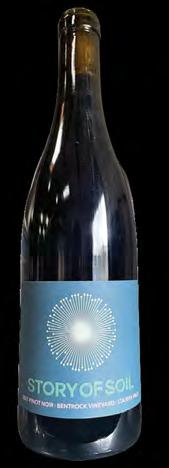

Respecting




4 BD | 3 BA | 4034± SF | 1.08± AC | Guest Cottage
Discover this quiet, serene, retreat in the much sought after Golden Quadrangle of Montecito. Tucked away on a private lane and surrounded by palatial estates is a rare opportunity to develop a private and secluded family compound or easily remodel the existing unique Mid-Century home. The designer finishes in the guest house enable someone to live on-site while completing their dream estate.
- Offered at $4,997,000


3 BD | 2 BA | 1900± SF | 3.19± AC | Lot Split In Progress
LET YOUR DREAMS BE THE ONLY LIMITATION!
Incredible opportunity on one of the most prestigious streets in Santa Barbara—the momentum on Sea Cliff is undeniable as a sought after estate location. These 3+ acres of flat land have plans for lot split into 3 parcels and grading plans already submitted to the city. Existing Mid-Century home and land have development potential ideal for an exclusive family compound, trophy estate or investment opportunity—you decide!
- Newly Offered at $7,497,000
 Story by Eileen White Read
Story by Eileen White Read
Our family of four, with dogs, just made a trek through California. From orange and purple wildflower meadows, we meandered through a cooling forest of towering redwoods, then crossed an 1806 dam and aqueduct built by Chumash to bring water to their Spanish mission conquerors. We wandered through a desert and clambered up an arroyo, or dry river bed. All of these adventures occurred in just a couple of early morning hours at the Santa Barbara Botanic Garden (SBBG), right up Mission Canyon.
The garden unfolded for us in a total of 11 habitats, each representing a different part of our state and awash with corresponding plants and trees. The best part, and what sets these gardens apart from Santa Barbara’s other famed gardens: Every plant, tree, and flower is native and designed in such a naturalistic manner that the landscape designers’ work artfully disappears. While Lotusland entices with the exotic and unexpected, and the Mission Rose Garden dazzles with endless color palettes, the subtlety of the SBBG feels like it was designed by Mother Nature.
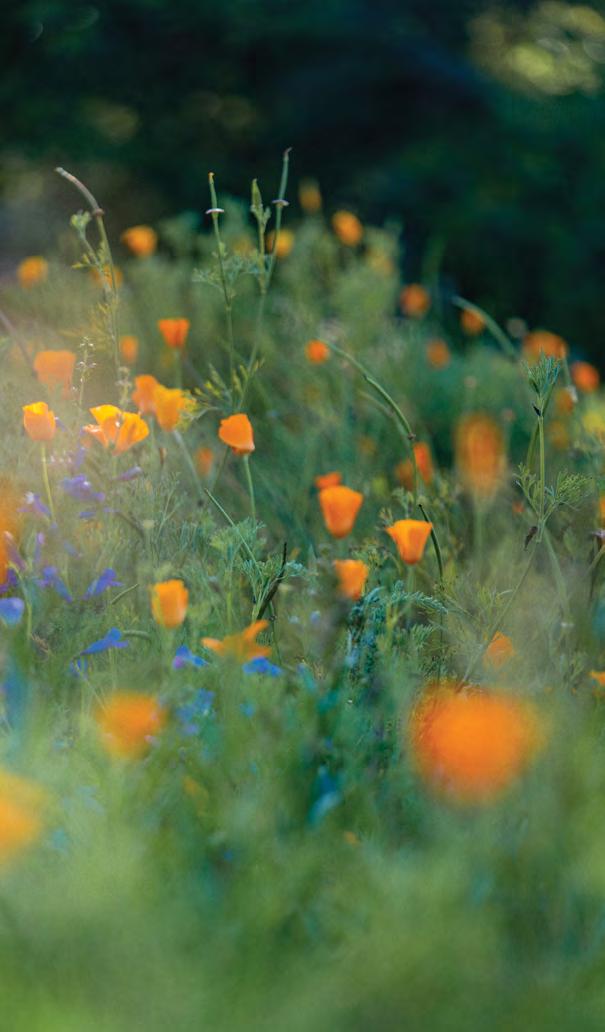


The goal is for everyone to plant one-third of their property with California natives
In this post-COVID, post-rainstorms era, the Santa Barbara Botanic Garden has been experiencing its own sort of institutional superbloom. Membership has doubled to nearly 6,000 families since 2019. The Mission Canyon locale is so busy that nonmembers need an advance reservation for entry. (Members still enjoy the blessedly quiet 9 to 10 am hour to themselves.) The garden’s beloved tours, talks, annual beer bash, foraged-food dinners, and chamber music events are back on the calendar. The scientific conservation staff has grown to 23 professionals – up from seven in 2016. And the 78-acre garden has been expanding its mission further into the community, with
native-plant projects coming to county parks, a growing roster of wildflower protection partnerships, and a new children’s day camp so popular that more classes are being added every week.

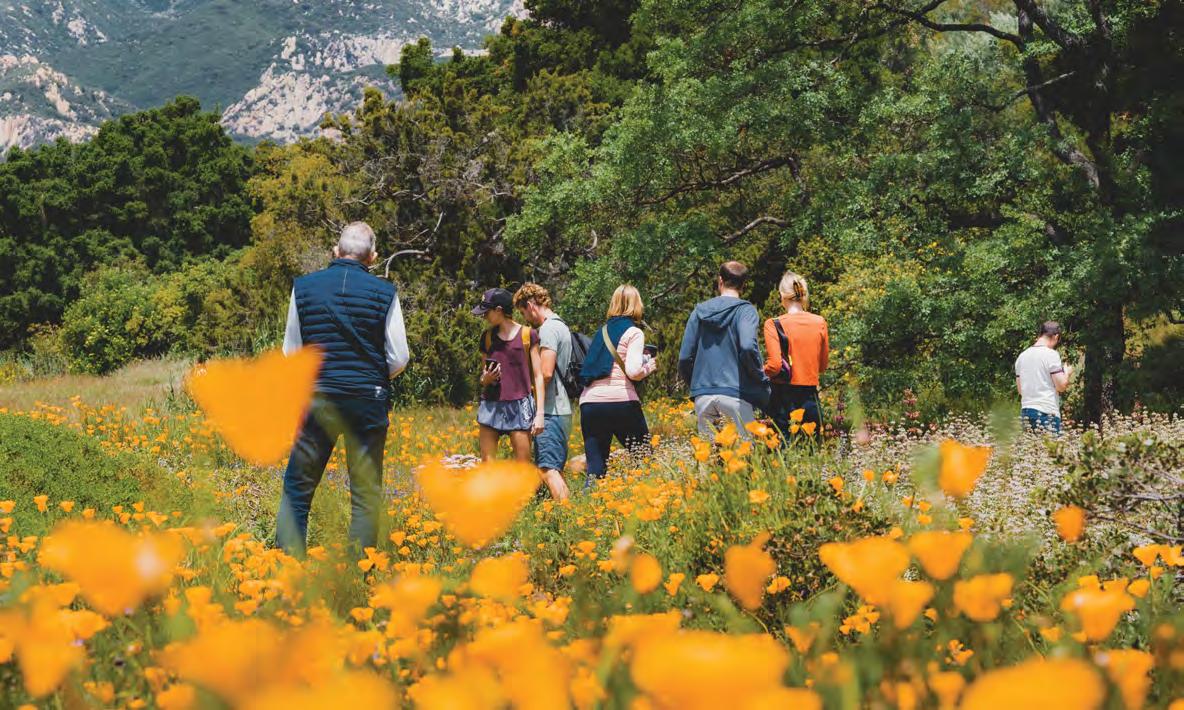
Longtime supporters are thrilled. “We need to get the next generation involved in this if we’re going to have people buy into conservation, sustainability, and use of native plants,” says donor Brenda Anderson, whose Chatsworth garden now boasts more than a dozen native species that she learned about through classes at the SBBG.
Just last month, the Washington, D.C.-based American Horticultural Society bestowed its annual Garden Stewardship Award on the SBBG. Holly Shimizu, a former executive director of the United States Botanic Garden and an AHS board member, cited the Santa Barbara garden’s introduction of “over 30 California native plant cultivars and selections to the horticultural trade. In addition, their research on habitat restoration and pollinator networks has positioned the Garden as a regional leader in applied ecology.”
For the past 12 years, this growth has been overseen by the garden’s ambitious executive director, Dr. Steve Windhager, a Texas native who previously headed the research program at the famed Lady Bird Johnson Wildflower Center. A lover of sustainable gardening since his days as a Boy Scout, Windhager found taking over the SBBG both an honor and a challenge –an honor since it has the distinction of being the nation’s oldest garden devoted to solely native plants and trees, and a challenge to spread awareness of the benefits of native, sustainable landscapes

throughout the region, and to persuade more residents, businesses, and institutions to give up their traditional waterhogging lawns. The recent expansion was made possible in part by a $14 million Seed the Future capital campaign completed in 2014, as well as a healthy endowment. Windhager says: “We do not stop at the Santa Barbara County lines. I see our reach as extending from Baja California all the way up to the Eastern Sierras, islands included. We conduct basic botanical research, we protect species, and we help restore habitats.”
These are lofty goals for what began in 1926 as a 13-acre offshoot of the Santa Barbara Museum of Natural History. The founders of the SBBG did, however, even then hold national ambitions in their desire both to showcase California nativeplant collections – and to do so via a world-class design. Scientific expertise came through a partnership with the Carnegie Institute, and private funding for the garden came from the Bliss family, known for the gardens at Dumbarton Oaks, their 43-acre estate and park in Georgetown, Washington, D.C. The family brought in renowned landscape architects Lockwood de Forest and Beatrix Farrand. As at Dumbarton, the gardens were designed as a series of connected “garden rooms” each with a different theme. However, the designers recognized how wellsuited Mission Canyon would be for a garden that looked as if it had evolved naturally, rather than the highly stylized European garden rooms at Dumbarton. The SBBG also boasts a 1942 library building, now housing its store, designed by Santa Barbara’s highly significant architect Lutah Maria Riggs.
Under Windhager, a major step forward came with the completion of a conservation center in 2015, housing both scientific staff workspaces and samples of more than 210,000 plants, lichen, and fungi native to California – as well as samples of the fauna that rely on them for food. They also maintain a seed bank with 300 different species – part of a national seedcollection effort – to ensure that endangered species don’t become extinct. The conservation center’s staff mostly work on contracts funded by the government such as a National Science Foundation-funded program, involving a total of 22 California institutions, to “map” the state’s flora. “The practical application here is to understand our state’s biodiversity so that we can conserve it,” says Dr. Matt Guilliams, curator of the herbarium, which is a scientific collection of dried plants.
The herbarium, indeed the entire garden, is boosted by dozens of trained and highly enthusiastic volunteers. Ann Brinker, whose spouse, John, sits on the SBBG finance committee,
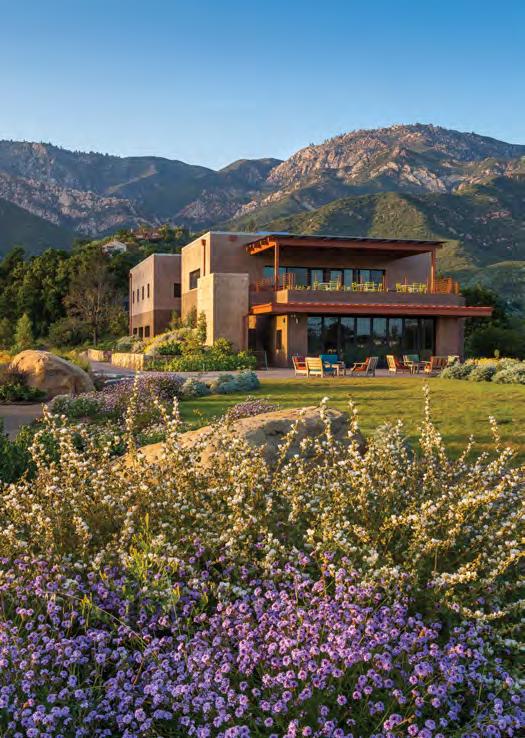

“We want people to see that it’s more than just beautification, it’s all about how native plants are used by birds, butterflies, insects, and other wildlife.”Native redwoods planted in 1936 have grown to a height of 160 feet. The scientific research staff work out of the Pritzlaff Conservation Center, which also houses the seed bank and herbarium. Photo courtesy SBBG Photo courtesy SBBG
Here are 12 colorful plants recommended by the Santa Barbara Botanic Garden to beautify yards and gardens, and to help promote populations of pollinators and other insects that depend on native plants. All are drought-tolerant and adapted to our coastal climate. These are just some of the 6,500 species and subspecies of California native plants. Descriptions and photos of many of these are available on a web-based database maintained by the California Native Plant Society (www.calscape.org). Native plants can be purchased at the SBBG’s own nursery, at local nurseries, and online. The SBBG has a list of 11 local nurseries that offer a 10 percent discount to garden members: https://sbbotanicgarden.org/ wp-content/uploads/2022/10/Partner-Nurseries-List_0622.pdf.
ISLAND MALLOW , Malva assurgentiflora , is actually native to just one Channel Island – Anacapa. It was saved from extinction and is now available as both a perennial and a shrub, and it comes in pink and purple.

MATILIJA POPPY, Romneya coulteri, with grey-green leaves up to six feet tall, boasts large showy white flowers with yellow stamens. It was nominated as the state flower in the late 1800s but lost to the California poppy.

TOYON, Heteromeles arbutifolia, is an evergreen shrub that can grow to eight feet tall and offers white flowers in the summer and bright red berries in the winter –just in time for holiday decorating (hence its nickname, the California holly).

PACIFIC COAST IRIS, Iris innominiata, is one of 12 species of lowgrowing native California iris identifiable by its long, slender, dark-green leaves and colors: lilac, purple, deep pink, and yellow.

CALIFORNIA BUSH SUNFLOWER, Encelia californica, is a shrub that produces masses of three-inch yellow daisies through spring, then goes dormant in summer. The ‘El Dorado’ cultivar is considered the prettiest version of this plant.

SEASIDE DAISY, Erigeron glaucus, is a lovely low-growing – and long-blooming perennial – with lilac-pink round daisy-shaped petals and yellow centers suitable for rock gardens.

HUMMINGBIRD SAGE, Salvia spathacea, is a spreading, threefoot-tall shrub filled with spires of dark-pink flowers with a fruity scent. And like most sages, it attracts hummingbirds.

PURPLE SAGE, Salvia leucophylla, is an easy-to-grow spreading shrub with aromatic tall flowers that attract pollinators, found throughout coastal and Southern California. It inspired novelist Zane Grey and the country rock band.

COMMON YARROW, Achillea millefolium, is a long-beloved perennial with foot-tall white and yellow flowers frequently used in butterfly gardens. Native Americans relied on yarrow’s leaves for medicinal purposes.

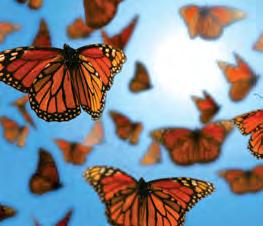
COASTAL BUSH LUPINE, Lupinus arboreus, is a fast-growing shrub that attracts pollinators and has a sweet fragrance. Pronunciation of the second syllable rhymes with “pin,” not “pine.”

PINK MONKEYFLOWER, Diplacus ‘Jelly Bean Dark Pink’, is a native perennial hybridized for home gardens, with large, attractive flowers. It grows in compact bushes.

CALIFORNIA POPPY, Eschscholzia californica – the much-beloved state flower – grows as a wildflower in its familiar bright orange shade, but it can also be found in nurseries with flowers in yellow, white, and pink. Its petals close on chilly evenings.
People often say they’d like to grow native plants, but they’re hard to find, and who has the time to take another class to learn what to plant? Dr. Steve Windhager, executive director of the Santa Barbara Botanic Garden, has the answer: Purchase one species, the California milkweed, Asclepias californica. This pink-flowered native perennial is the habitat for every Santa Barbaran’s favorite pollinator, the Monarch butterfly. Even well-informed folks who want to attract butterflies to their gardens often mistakenly buy the non-native, orange-flowered species of milkweeds, which attract bacteria that are actually poisonous to butterflies in the caterpillar stage. “Grow the California milkweed and your backyard can attract native pollinators,” says Windhager. “It’s the food chain. You don’t start by saving the polar bears. You start by saving what they eat down the food chain.” You can order the plants online or ask for them at local nurseries.

spends Thursday mornings as a greeter at the garden entrance and another day each week mounting plant samples in the herbarium. She says, “I mounted a plant that was collected in the 1880s from Yosemite Valley, and I thought, I wonder if John Muir brushed up against this?’”



More and more, the conservation center is partnering with other agencies and private businesses to help identify and conserve endangered species. At the commercial Straus Wind Energy Project located south of Lompoc, which will comprise 29 giant wind turbines, the garden’s scientists were hired to study a pretty, but rare, yellow flower known as the Gaviota tarweed that only grows on the Gaviota coast. “We’re trying to figure out how you can put a wind farm up there without causing a disaster for the species,” says Windhager.
As the popularity of wildflowers has soared after this winter’s heavy rains, SBBG scientists have become increasingly concerned about superbloom followers trampling on wildflowers before seeds are produced, particularly in the Central Coast’s largest wildflower area, the Carrizo Plain National Monument. Located north of Cuyama, this high plain is the site of a Bureau of Land Management-funded SBBG study of several rare wildflower species, their seed production, and their pollinators. “Without seeds to germinate, the next generation of wildflowers may not be able to be there,” says Windhager. “The land management people are trying to get everybody to stay on the existing trails during the peak period, and we’re studying the impacts [on seeding] during the non-superbloom years. People who want a photo sitting in a field of wildflowers don’t realize they could impact future years of wildflowers.”












Closer to home, the garden has become a leader in the nativeplant restoration of the Shalawa Meadow Chumash burial ground, a three-acre historic landmark located on Montecito’s Hammond’s Beach, where a coastal-access trail runs straight through a sacred Native American cemetery. For decades, the burial ground has been overrun with weeds and gophers and trampled by tourists. Simple strategies such as weeding haven’t worked, and poisons cannot be used on the site. So, the latest plan is to “cap” the site with black material to repel weeds, to cover the site with chicken wire to repel gophers, and then to add eight to 10 inches of soil – into which will be planted native grasses, wildflowers, and species such as sage and soft chaparral. The project – which has several partners including Channel Islands Restoration, the county, and two Native American tribes – is scheduled to begin in the fall.
FROM THE GARDEN TO THE TABLE dinner will feature foraged plants cooked by Convivo restaurant. In the garden meadow, July 29, 5:30 pm.
YOGA IN THE GARDEN with instructor Amelia Neil. At the Pritzlaff Conservation Center, Aug. 10, 9:30 am; fee: $25 members, $35 nonmembers.
SENIOR DAYS, free admission for seniors over age 60, from 10 am to 5 pm, Aug. 16, Oct. 18, Dec. 13.
“perhaps in partnership with other nonprofits,” to increase the supply of native plants, which sometimes are hard to find at local nurseries. Windhager’s staff would also like to work with local nurseries to set aside a section for native plants, curated in partnership with the SBBG. In addition, the staff is making plans to set up a training program for landscapers, the goal of which is “to turn out 75 to 100 landscapers a year, certified as native plant professionals.”
The ultimate prize, Windhager says, would be for every garden in Santa Barbara County to have at least 30 percent of its flora devoted to natives. It is, he believes, “a reasonable goal.”

The garden’s latest community outreach project, known as Landscape Transformations, begins later this year with a largescale native-plant restoration at Elings Park. The widely used sports park and recreation center comprises 230 acres, but the majority of the acreage is undeveloped and – like much of Santa Barbara – filled with mostly non-native species of plants and trees. The SBBG’s goal is to turn unused parts of the park into a demonstration project filled with native plants, grasses, and trees that folks can also use in their home gardens. Already, the SBBG’s director of conservation and research, Dr. Denise Knapp, has begun leading themed public walks focusing on native plants versus weeds, birds, and so on. The goal, she says, is to stir up public interest in the benefits of native species.
And Elings Park is only the beginning. The SBBG is looking into renovating similar areas in parks around the county – one in each supervisory district – into native-plant gardens. “We want people to see that it’s more than just beautification, it’s all about how native plants are used by birds, butterflies, insects, and other wildlife,” says Windhager. He cites a study that found that native oak trees harbor up to 600 species of birds, pollinators, and other insects. Non-native trees, on the other hand, were found to sustain one-tenth that many.
Back at the SBBG, this native-plant evangelist has still more ways to help convert ordinary people into native-plant enthusiasts. The garden has a small retail nursery selling –what else? – native plants, sometimes as many as 300 different species. But he would like to set up a wholesale nursery,
“The controversy is about people trampling on wildflowers before seeds are produced. Without seeds to germinate, the next generation of wildflowers may not be able to be there.”Photo courtesy SBBG






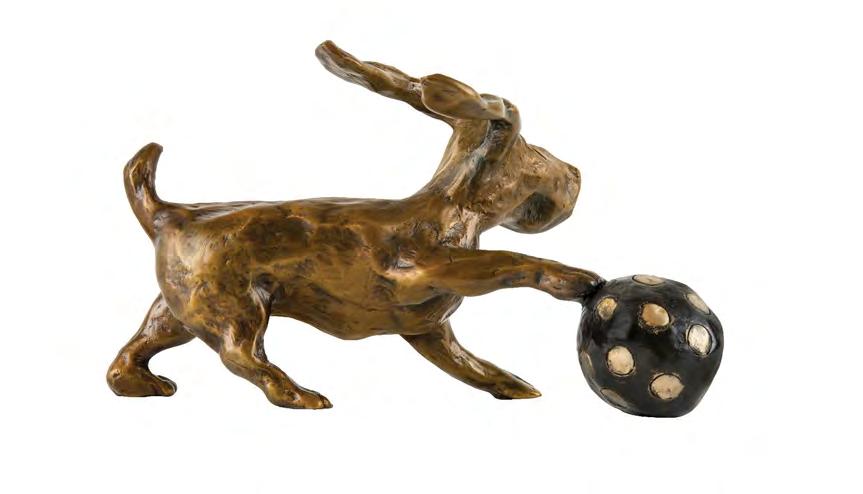



 STORY BY JEFF WING
STORY BY JEFF WING
In far-off 1984, a restless young man with an interestingly European two-stroke name – Keld Hove – emigrated from his native Denmark to the United States with a hundred dollars in his pocket. Today, Hove is both a Santa Barbara police officer and a bona fide star on a hit Danish TV show called –you guessed it – Politijagt (Police Chase). And what, dear reader, is Keld Hove’s role in Politijagt? Hove plays a police officer in Santa Barbara. This Dane has completed a glowing full circle his 19-year-old self could scarcely have foreseen.
For those of us who hunker down with Danish hit television only occasionally, Hove may be more familiar as the kindly bruiser who haunts our beloved San Ysidro Pharmacy in Montecito’s Upper Village. Hove and his wife, Lara, own the place. Prior to their taking ownership, Lara had worked there as the full-charge bookkeeper for 23 years. You can’t miss him. He’s the guy with the boxer’s build, salt and pepper hair, and the startling, beatific smile of a sugaredup 10-year-old. It’s not a smile that suggests “marauding,” and runs somewhat counter to Hove’s Viking heraldry.
Hove’s own Norse saga brought him to the United States at the tender age of 19, at which point he began soaking up the possibilities inherent in the American Dream. Since deplaning at LAX in 1984, the guy has lived about six lives. I mention this to him. “I’m a Sagittarius. We always aim for the moon.” Hove strikes the heroic pose – an archer aiming skyward. The vaguely Nordic face blazes into a brilliant smile, Viking eyes crinkling. “We never hit anything, you know.”


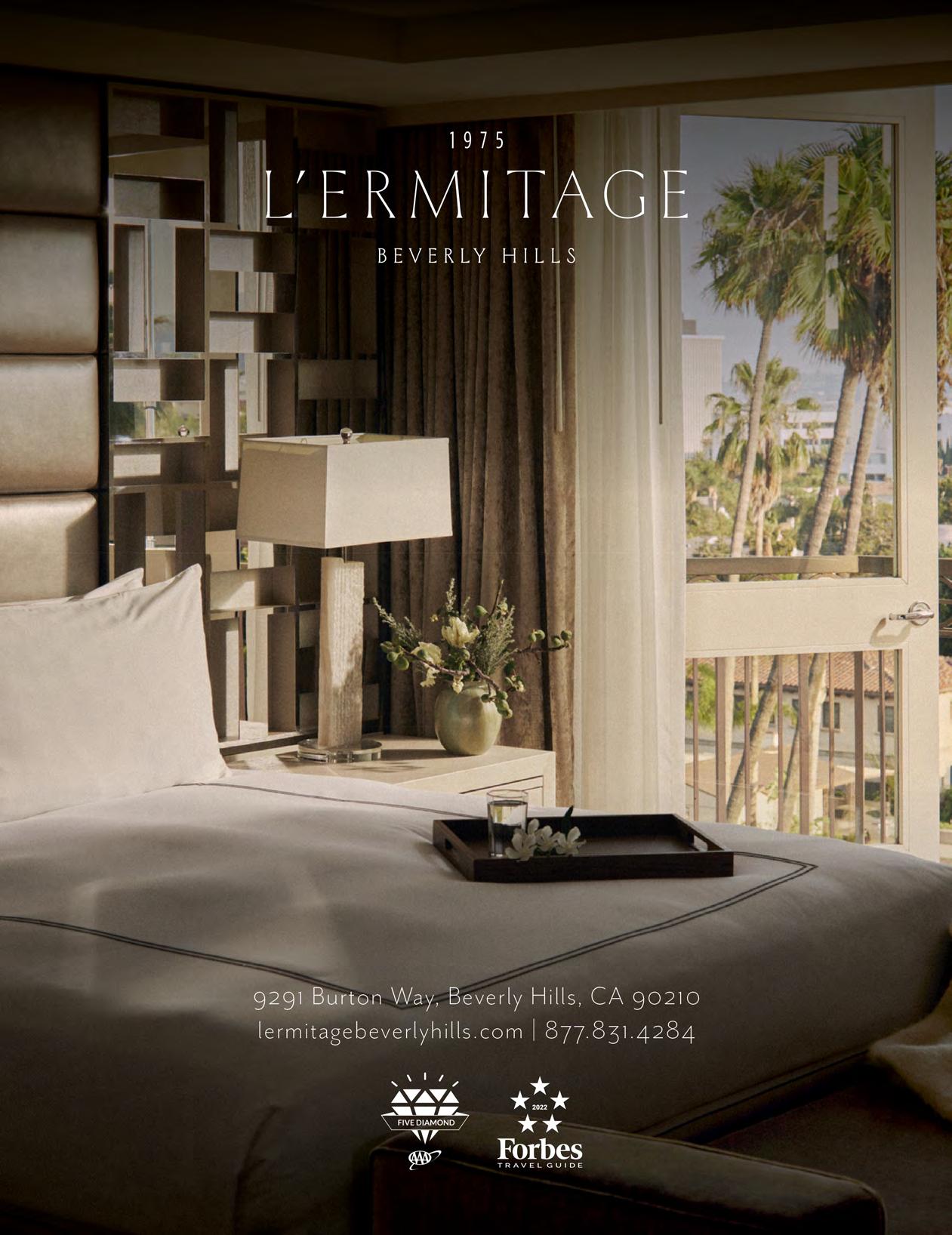


How many times have you visited the Upper Village’s charming San Ysidro Pharmacy and said to yourself, “This place could really use a Danish celebrity.” Reader, your strange murmurings have been vindicated. Keld Hove is that Danish celebrity. People in Denmark eagerly tune in once a week to watch him on Politijagt, where he can be seen working his beat in Santa Barbara, driving around in his patrol car in the company of a Danish cameraman, and explaining the goings on in, you know, Danish.
Hove of the San Ysidro Pharmacy, you see, is also a Santa Barbara police officer of 25 years, and his “beat” has mostly been downtown with the Restorative Policing Program – reaching out to Santa Barbara’s homeless and dispossessed and helping them find a way forward that doesn’t include incarceration. Hove’s episodes of Politijagt thus show a side of American policing that is surprising to the Danish viewership. Hove’s M.O. on the Santa Barbara street is gentle, humor-filled, and loving. Many of the perennially homeless in Santa Barbara know Hove and greet him by name.

American policing is a topic with TV traction in Denmark. “In Denmark, policing is a lot of CHP-type enforcement,” Hove says. “It’s a lot of traffic enforcement. They don’t have that kind of patrol mentality we have in the United States, where you’re driving around, looking for things to happen, so we are already mobile when it happens and can quickly respond. In Denmark, people call the police and they mobilize from the station.”
In 2018, Hove took a phone call. It was from the producers of the Discovery Network’s Politijagt. “They put out a cattle call,” he says, “and they got a headhunter to see, you know, ‘Can we find Danish people living in the United States, being police officers?’ Denmark has 5.8 million people, so there aren’t a lot of us.” Politijagt is a reality TV hit in Denmark and has been on the air since 2009. The program follows a familiar formula – a film crew follows a peace officer around on his daily beat, so the viewer at home can experience the vicarious thrills of police work.

The Danish Cops iteration is necessarily a bit more tranquil than its U.S. counterpart. “Politijagt has people getting pulled over for various moving violations, vehicle violations,” Hove says. “That’s why they call it Police Chase; because periodically they have to chase after somebody.” Trailers for the Danish show feature a lot of automotive pursuits along bucolic, forested country roads, or traffic cops politely dressing down violators in parking lots. Once they hit upon the idea of tweaking the show by featuring Danish people working in the U.S. as cops, the Politijagt producers began searching high and low.
“At some point, they came across a Danish American officer named Thomas Hald who works in Philadelphia,” Hove says. Next came Fie Ottosen, a female cop in Loudon, Virginia. The Politijagt team were pointed to Hove by the Santa Barbara County Sheriff’s department. “The SBPD approved it,” Hove says. “We cleared it with the city attorney and looked at what needed to be done. Now, they send us the episodes, I look at it, show it to my brass, and they make sure there are no issues. They get a camera guy to come out and ride along. We did three seasons of it with the U.S. version.”
“To dissuade people, the law punishes them so the fear stops them from doing it again. But if that system doesn’t work, how many times do we beat a three-legged dog for not running fast enough? Why wouldn’t you want to give them help? Why would you give them punishment when help is available? I’m here to help them manage, to help them navigate through their lives.”
Afifth of his home country’s population are regular viewers of Politijagt. When Hove is recognized in Denmark, the effect is muted – but there is much unspoken feeling packed into these encounters between him and his Danish fans. “Let me explain the Danish culture,” Hove says, and cites the biblical parable about a long-lost child finally making his way back home – to great fanfare. “We’re a small country. Danish people go out into the world and it’s kind of like the Prodigal Son. The Danish hail their own when somebody goes out, takes a chance, and conquers –does something great and comes back again.” The Hove smile blazes. “Now, they want to hear the stories you’ve got.”
Hove is not hounded by paparazzi; nor by rabid, jittery Politijagt acolytes wielding felt-tip autograph pens. “Last time I went back to Denmark, I get off the plane, rent a car, and I just go into the center of town where I sit in the park. I have my Danish pastries, because that’s the first thing you get when you’re there. I sit on a bench and a guy comes over and says, ‘Do you know what they’re doing on that hill over there?’ I say, ‘No, I don’t live here’. The guy says, ‘Do I know you from somewhere? You’re… you’re on the police show, aren’t you?’” The man sits down and he and Hove start chatting. The man’s wife appears with a stroller. “We three sit and talk. They say goodbye and leave 10 minutes later.” When Hove goes to check in at his hotel, the concierge simply says, “What are you doing here?” “I’m… checking in,” Hove says, mildly confused. “I’ve seen all your episodes,” the concierge says and gets back to work. Hove smiles. “That’s how the Danes are. You don’t go up and get into people’s space. So, as I moved around in Denmark for the rest of the trip, I could see people recognize me, but nobody made a fuss, ‘Oh, you’re that guy.’”
In 1984, Keld Hove came to the United States to improve his English. “How do I do that? I go as an au pair. Not a really well-thought-out plan,” he concedes with a rueful grin. It does seem to have worked out, however. Hove’s adventure in the U.S. – his long and unlikely ascent to pharmacy ownership, police work, and stardom on Danish TV, if you will – neatly compartmentalizes into distinct phases. Here they are.

Hove had left home at the age of 16 and was living alone in a tiny apartment. He answers a newspaper ad in Denmark and gets the nod from a family in Los Angeles. Hove will “manny” their 3- and 6-year-olds. “I go on the train to Amsterdam, fly to New York, get picked up in L.A. So, I work with that family, and I stayed with them for six months. They had some issues. So, I moved to the next family.” This couple divorces. But their single child, 1 year old, has become attached to Hove. He is asked to stay, and he does – for three more years, putting his 19-year-old heart into it. Call it Hove’s very early practice for fatherhood.
“Idid martial arts for many years back in Denmark,” Hove says. “Came over here and I rose up the ranks, got my black belt. Then I started teaching at this Chuck Norris school. My wife-to-be, Lara, came in one day and we saw each other. She was beating up all the boys and I thought, ‘She’d be good to go through life with.’” They begin to date.
In the meantime, Keld has secured a radio gig. “I get a job as a radio disc jockey,” he says. “You go in, you rent this space with all the equipment, you pay 20 bucks or something like that, you create your own one-hour radio show. If it fits into their model, they sell that to the cable stations.” The young Danish émigré has a radio gig on Sunset Boulevard. All that’s missing is the cherry-red Mustang convertible to make this an American daydream. “I would ride my little moped from the San Fernando Valley over the hill down to Sunset Boulevard, do my show, then go catch some movies.…”
Eventually – inevitably, even – lovestruck Keld Hove leaves swinging L.A. and moves up to sun-splashed Santa Barbara, where Lara is enrolled in school. They fall ever more deeply in love and marry. The starry-eyed union is attended by sunshine and birdsong, foreordained by fate and the yearning human heart. Naturally, it leads to a job hanging doors. “The lady who

catered our wedding knew a contractor who needed help. His guy had fallen off a ladder.…” Hove’s earnest desire to learn –coupled with his appearance on the first day of work with a fully equipped and wholly aspirational tool belt – sways the boss into bringing him aboard. When the work dries up two years later, Hove finds himself in somewhat familiar surroundings. Somewhat. “I go to work for a Danish cabinet maker. I spent about six months with him. It felt like six years.” Hove makes his move running his own cabinet business for the next six years, but doesn’t have the capitalist itch required to make it truly profitable. His billing is empathy based – not a good model in the Darwinian hothouse of American business. “A job may take me 20 hours longer than estimated, but I won’t bill for that.” He pauses, then summarizes. “I’m not a good profit seeker, but I am a good craftsman.”
As Hove begins casting about for a new vocation, Lara’s half-brother, a police officer, introduces the idea of policing. Hove dives in. “I go through the academy, I come out on the other side.” His natural inclinations – related, perhaps, to the empathy that helped sink his carpentry business – are the right tools at the right time in the right ecosystem. Hove will reach out to the struggling and dispossessed he sees on the streets of Santa Barbara.
“There are things you can’t do in public,” he says. “To dissuade people, the law punishes them so the fear stops them from doing it again. But if that system doesn’t work, how many times do we beat a three-legged dog for not running fast enough? Why wouldn’t you want to give them help? Why would you give them punishment when help is available? I’m here to help them manage, to help them navigate through their lives. And they can have a quality of life.” When Santa Barbara
Police Chief Cam Sanchez came to the department with a program he called Restorative Policing, Hove was already on it. In 2011, the Santa Barbara Independent anointed Hove one of its local heroes for his compassionate work with the homeless of Santa Barbara.

His years of training in martial arts have acquainted Hove with the nagging variety of injuries students can incur in the sport. His expertise providing a unique perspective on the body’s healing capacity, Hove became a licensed massage therapist in 2009. His massage business has him treating a weekly roster of clients in their homes. He also teaches massage at the Santa Barbara Body Therapy Institute.
And then there is the baking. He calls his doughy passion project Hove’s Loaves. This is Danish baking at its finest –organic ingredients, sourdough, and all the delirious and delicious treats one associates with faraway Denmark, a country some revere as the home of Hans Christian Andersen and the chocolate swirl pastry direktørsnegl. “I have a cottage license. I have my own bakery at home, so I can bake and sell bread,” Hove says. He also teaches several baking classes through Santa Barbara City College’s Adult Education program, as well as in private homes and for nonprofits. “That was a direct leap from working as an officer at the 2018 debris flow that devastated Montecito.” The idea of offering comfort and community in the wake of a natural disaster prompted Hove to start his nonprofit, Phoenix Bread Rising.
“In the wake of Hurricane Maria, I get a 50-pound sack of flour, my sourdough starter, and I hop on a plane and fly to St. Croix. I spent 12 days in St. Croix and Puerto Rico, working with 50 kids at a boys and girls club, teaching them to bake sourdough bread and make pizza.” Hove has also made relief baking trips to the Crow Reservation in Montana, and to Kraków, Poland, where he taught bread baking – and a measure of empowering self-reliance – to Ukrainian war refugees. One engaged person can radiate enough hope and forward-leaning energy to move the needle. Hove is living proof of that.
On a recent visit to Denmark, Hove received a message. “My daughter adores you. Can you please make a quick video of you saying hello to her? It would mean so much to her.” Hove picks up the story. “I’m an hour and a half from going past her town to my mom’s house,” he says. “I don’t really have time to make a video, and I told her so. ‘But what is your address? I’ll send your daughter something.’ A little while later, I jump off the freeway and call them. ‘Can you come outside? I’m in the driveway.’” Keld Hove breaks into his eye-crinkling 1,000-watt smile. “All these kids come pouring out of the house.”
The kids are a little less chill than their adult counterparts in the Politijagt fan club. There is clamoring as they surround the former boy from Aarhus. A child cries out, “Oh, my god. You’re officer Hove!” – which probably sounds more musical when yelled in Danish by an 11-year-old. Hove grins at me. “I’m famous in a small country,” he says warmly. He’s also an undiscovered gem in a small town called Montecito.







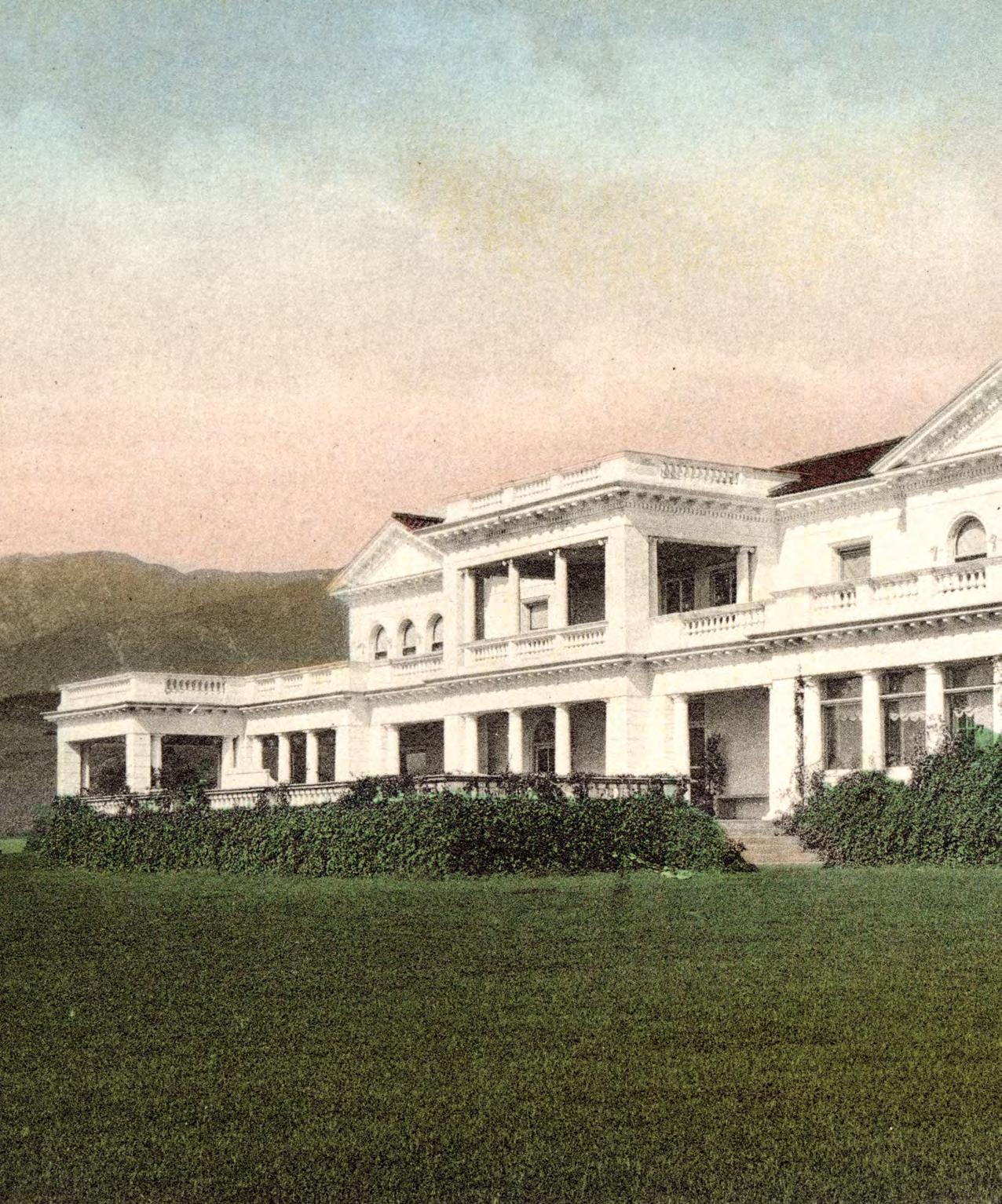 By
By
Once upon a time, high on the hill east of the Andrée Clark Bird Refuge stood the elegant Italianate home of the William Miller Graham family whose fairytale rise to wealth and influence piqued the nation’s interest. Though the Clark Estate of Bellosguardo occupies the site today, it was the Grahams who gave the estate its name and built the first estate house. And it was the Grahams whose penchant for grabbing headlines in the society pages of the day was unequalled.
Bill Dedman and Paul Clark Newell, Jr. have popularized the story of Copper Baron William Andrews Clark and his reclusive daughter, Huguette, through the book Empty Mansions and news reports keep their story and that of the house before the public. Now, thanks to a recent gift to the Santa Barbara Historical Museum, a treasure trove of photos, images, and ephemera brings to life the tale of the original owners of Villa Bellosguardo, and provide a glimpse of high society life in the Gilded Age as it raced toward the Roaring Twenties. Here then, is the story of the Grahams.
In 1903, Civil War veteran and longtime Santa Barbara resident, George Booth, sold his home and its 23 acres on top of the hill east of the Salt Pond to a wealthy oil man, whose various drilling enterprises, particularly in Oklahoma, had garnered him a vast fortune. William Miller Graham, his wife Lee Eleanor, 11-year-old son Earl, and 1-yearold daughter Geraldine moved into Booth’s old house in 1903 and made plans to replace it with an extravagant Italianate estate. The Grahams engaged local architect Francis Wilson to execute the design for the appropriately named Villa Bellosguardo, meaning “beautiful overlook.”

It was a grand house. A large stone terrace afforded amazing views of an expansive landscape of city, mountains, sea, and islands. The entrance hall, inlaid with pristine white marble, measured 22 by 58 feet. Walls of Caen stone and ceiling beams of massive oak added to the palatial proportions, and French windows led to a sequestered courtyard. Charles A. Platt, a famous landscape architect of New York, was hired to create a landscape to complement the graceful terraces and colonnades of the home itself.
Ionic columns, silvered screens, and silk tapestries and fabrics added to the elegance of the interior. Nationally known local artist Elizabeth Eaton Burton was commissioned to design wall panels and lighting for various rooms. She used peacock feather designs appliquéd on green leather. The eyes were created with her signature abalone shell. The sconces she created were of brass, copper, and shell to harmonize with the peacock color scheme. The interior of the house must have been as colorful as its owner, Lee Eleanor Graham.
During construction, the Grahams continued to visit their homes in New York and other places as well as travel abroad. By June of 1906, however, they were comfortably settled into their bluff-top summer home, and Santa Barbara began to feel the impact of Lee Eleanor Graham on the social and cultural whirl of the town. Nationally, the gossip columnists commenced sharpening their pencils in anticipation.


A view from a lower tier of the landscaping on the southwestern side of the home and the palms of the entrance drive that ascends the bluff. East Cabrillo Boulevard was devoid of development and the photo shows the convergence of Sycamore Creek and the Lower Estero, the Salt Pond.
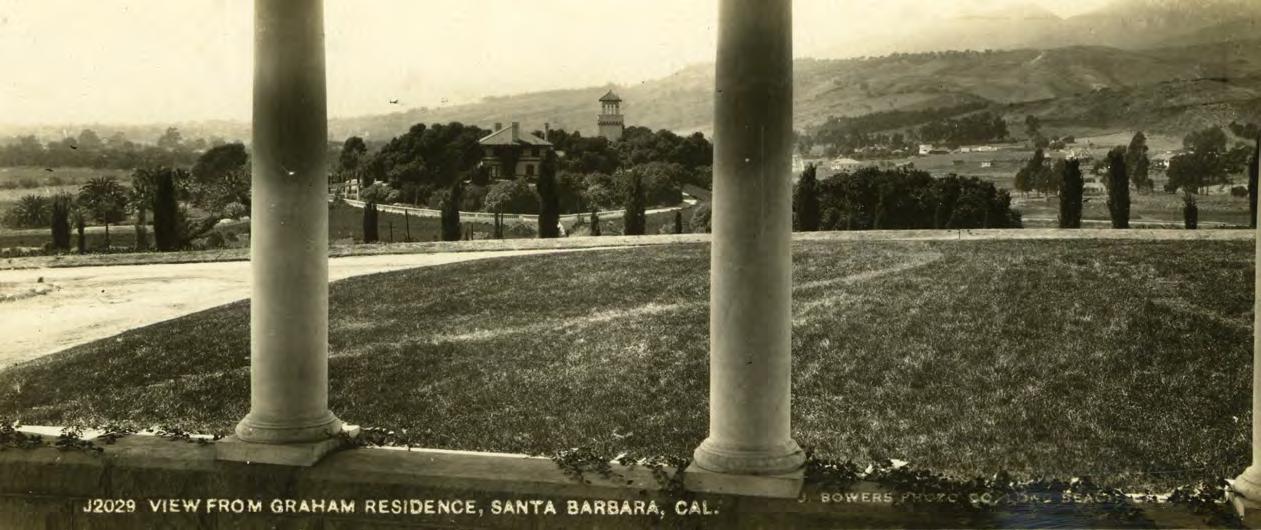



Much of the information on the early history of the Grahams comes from the society pages. Despite continual contradictions and a mishmash of misinformation, the repeated stories read like a carefully scripted résumé, intended to elevate its subject and impress its audience. Until, of course, the paparazzi, finding some titillating scandal to feed on, splashed it across the banners.
More reliable sources say William Miller Graham hailed from Cornplanter, Pennsylvania, where his father was an engineer at the oil wells and the post office was appropriately located in Oil City. Though both William and his father farmed their land in 1880, the profit to be made from oil was clearly a motivating force in William’s future endeavors.


Lee Eleanor Pollock was born in Paris, Bourbon County, Kentucky, where her father, a Civil War veteran, worked as a carpenter after an earlier stint as a machinist and later a contractor. A beautiful girl, “Birdie” apparently romped through the hearts of all who knew her, and though her parents’ circumstances were modest, she soon became the Belle of Blue Grass society.
When Lee Eleanor was 18, the family moved to Philadelphia and opened a boarding house where she waited tables when


Peter Adams
Rebecca Arguello
Aldo Balding
Ann Shelton Beth
Bela Bacsi
George Bodine
Suchitra Bhosle
Eli Cedrone
Casey Childs
Alezander Chistov
John Cosby
Steve Curry
Nancy Davidson
Rick Delanty
Camille Dellar
Ellie Freudenstein
Rick Garcia

Derek Harrison
Wyllis Heaton
Ray Hunter
Sung Eun Kim
Irene Kovalik
Mark Lague
Jeremy Lipking
Kyle Ma
Jim McVicker
John Modesitt
Craig Nelson

Jesse Powell
Ann Sanders
Eric Slayton
Matt Smith
Ezra Suko
Thomas Van Stein
Hsin-YaoTseng
Jove Wang
Nina Warner
Ralph Waterhouse
needed. One day, a young William Miller Graham came to town and took up lodgings. Soon a romance developed, and though Graham had very little money, he had prospects and was already involved in the oil game. In 1889, the two married in Pittsburg, Pennsylvania, and the local paper said they were to sail to Europe for their honeymoon.
It seems impossible that two newlyweds of such modest backgrounds could have moved so swiftly into the elite society of England in 1889. The newspapers later speculated that it was Birdie’s beauty that had opened doors everywhere, including the door to King Edward VII of England, with whom she reportedly became great friends. In 1889, however, Queen Victoria was still on the throne and would be until she died in 1901. It’s much more likely that their 1889 honeymoon inspired Birdie to become part of the glittering world that surrounded her. When “Billie’s” gusher finally came in, they had the money to make that possible.
Lee Eleanor Graham was, indeed, presented at King Edward VII’s second court in 1908. At the time, it was reported that the King thought her to be America’s most charming woman and that she was envied “by all who sought the graces of his majesty.”

Also in 1908, President Theodore Roosevelt’s Great White Fleet honored Santa Barbara with a five-day visit, and Lee Eleanor wore her presentation gown to the Country Club party where she was on the receiving line. Her Parisian gown of white net made with panels of tiny flowers done in shades of rose, blue, and terracotta was described in great detail by the press. Most impressive, however, was the flashing aigrette of diamonds that adorned her hair.

William’s oil exploits continued to reap barrels of black gold, and his net worth ranged into the tens of millions of dollars. He was often away on business, and she was often away visiting an increasing cadre of titled and wealthy friends. Then, in 1911 a certain Mrs. Timon, a widow and friend of Lee Eleanor’s, came to town and was welcomed by Santa Barbara’s society. She was accompanied by a Mr. Brownell, with whom she had “an understanding.”
About this time, William decided that he didn’t really need to be in New York to successfully conduct his businesses and was often seen at the salon that Mrs. Timon conducted and at the Country Club, which occupied the site of today’s Music Academy of the West at the time. One day at the Club, Brownell and Graham “had words about it,” which developed into a brawl that required four waiters and the steward to stop.
When Lee Eleanor learned of the knuckle contest, she took Graham into the library to explain himself. The following day, the Recorder of Santa Barbara County put on record three deeds of property from William Miller Graham to Mrs. Lee Eleanor Graham: 11 lots of Montecito Land and Water Company’s property, 33 acres fronting on the ocean, and the white marble palace, Bellosguardo
As the drama in her life settled down, Lee Eleanor devoted herself to supporting and elevating the cultural aspects of Santa Barbara. A frequent patron of that day’s popular Potter Theatre, she felt there should be a smaller, more intimate theater where amateur performances could be mounted for cosmopolitan visitors to Santa Barbara and Montecito. She recruited investors, believing their involvement would make it, as she said, “‘our’ theater and so people will be dying to come to ‘our’ show.” Her San Francisco friends tumbled over themselves to subscribe, hoping to have a chance to strut their hour upon the stage, work behind the scenes, or write the plays.
Lee Eleanor organized various fundraisers for the building fund. One, staged in July 1912 at the five-year-old Potter Theatre on the corner of State and Montecito streets, was a program of 15 Tableaux Vivants – living pictures in which the participants posed in imitation of some renowned work of art or historical scene.
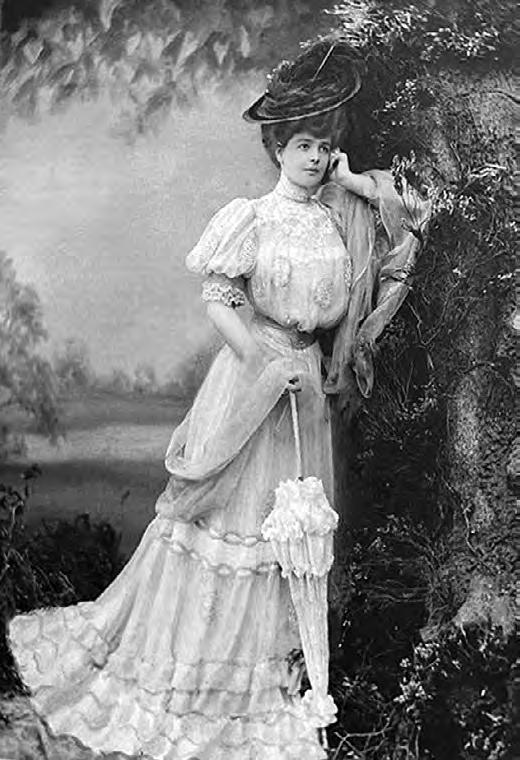

In one tableau, Earl Graham played Anthony in Cleopatra’s Barge and Lee Eleanor and Geraldine had roles in a scene from Maurice Maeterlinck’s The Blue Bird, which had opened on Broadway in 1910. The announcement in the Morning Press said, “Quite naturally, the Montecito people are working very zealously for the success of the affair Wednesday night, and they are having the loyal support of their Santa Barbara friends, who anticipate sharing the delights of the suburban theater.”
In November 1914, The New York Times ran a story on it. “In California,” the article said, “has arisen a toy theatre, built
and supported by a small community of friends who would strike for something higher than the rapidly spreading motion picture mood seems to bespeak.” According to the article, Lee Eleanor believed that little theaters served to educate theatergoers about what goes into the creation of dramatic productions, broadening and enhancing their appreciation of the professionals. Participation in little theater productions developed one’s imagination, and children’s plays and participation were included in the plans.
The Country Playhouse, located on the edge of Bartlett Polo Field in Montecito, was shaped like a Byzantine Basilica with Italian Renaissance detailing. The Morning Press described the interior as one of “gorgeous, almost barbaric splendor, deep orange being combined with a dull, lusterless black.” The parquet seated 100 persons sitting at little round tables, and along the walls were two tiers of boxes. A crowning feature was the tasteful lighting array, designed by world renown artist Albert Herter of New York and Santa Barbara, who had also painted murals on the exterior. By 1916, the Country Playhouse was going strong. Lee Eleanor was involved as booking agent, director, set designer, costumes, and scenery. In August, four playlets – two of which were written by local talent –and a movie of Dwight Norton’s fancy-dress ball given at his Montecito home were presented. Among the actors, Geraldine had a role as “Spring” in A Japanese Tale Twice Told
In March 1918, following a benefit performance for War Relief, the Country Playhouse caught fire. An errant cigarette was suspected of causing the conflagration. Completely consumed by the inferno, it was not rebuilt. Nevertheless, Lee Eleanor’s efforts may have set the stage for a new community theater, one with a more democratic appeal. In 1920, the Community Arts Players were formed for amateurs throughout Santa Barbara and Montecito, and in 1924, the new Lobero opened its doors as Santa Barbara’s community theater.

Though her theater had been a success, the December it neared completion had brought fresh marital woes for Mrs. William Miller Graham. The New York Times headline read, “Wife’s Broken Heart,” and “Leader of the World’s Elite Seeks Divorce from Baron of Oil Trade.” Lee Eleanor had sued Billie for divorce. Eventually, their son Earl effected a rapprochement and the filing for divorce was rescinded. Nevertheless, the Grahams remained estranged.



The beautiful house and gardens of Bellosguardo, like other estates in Santa Barbara and Montecito, appealed to the film industry, and scenes from several movies were filmed there. In 1913, Jack Warren Kerrigan and Vivian Rich dressed in Roman garb for In the Days of Trajan. Kerrigan returned with Jessalyn Van Trump for a romantic comedy, called The Romance. The following year the Santa Barbara Motion Picture Company filmed a futuristic drama called The Envoy Extraordinary.

Other films included 1914’s The Dream Ship; 1915’s The House of a Thousand Scandals (prophetic); Ancestry, a romance (also prophetic); and 1918’s Jilted Janet, (you guessed it, prophetic). For 1923’s Ashes of Vengeance, filmed on the estate, Norma Talmadge’s dressing room was Geraldine’s thatched roof cottage playhouse.


Geraldine grew up in the rarified atmosphere of Bellosguardo and Santa Barbara’s social elite. Life was one party and benefit event after another. She had a governess and a pony and would become quite an accomplished horsewoman. Back in 1875, 5-year-old Lee Eleanor Pollock had charmed the attendees of the Paris, Kentucky, Baptist Church’s benefit by her portrayal of Martha Washington. In 1908, 6-year-old Geraldine dressed in colonial costume for a charitable production at the Potter Theatre entitled The Stairway of Life
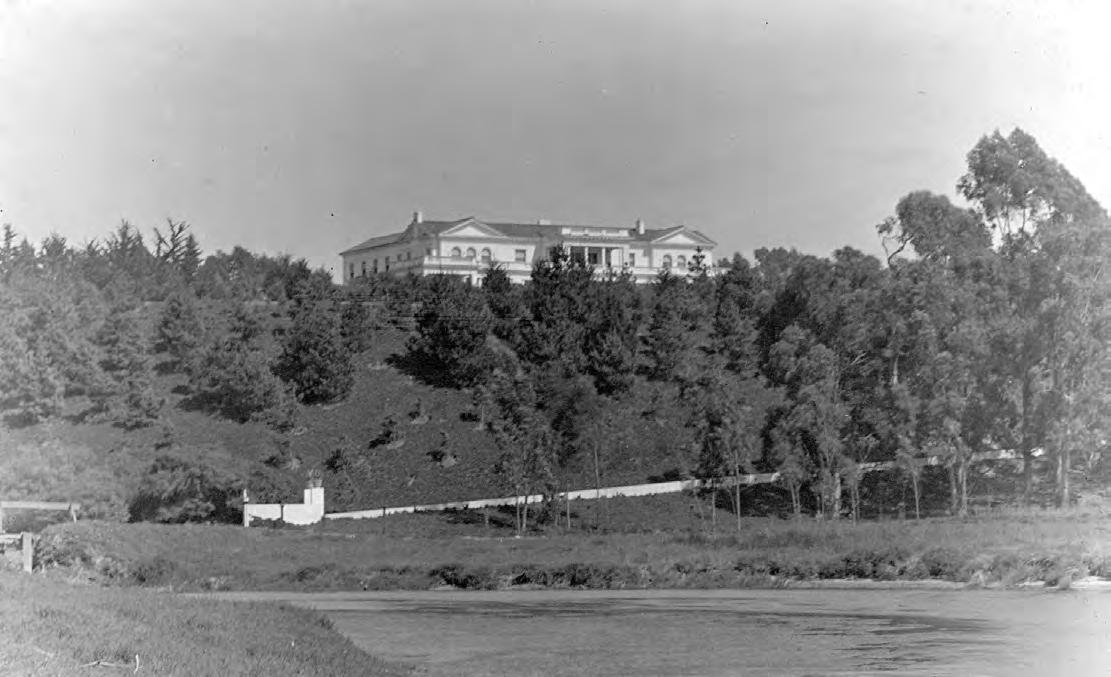
Over the years, Lee Eleanor and Geraldine traveled extensively in Europe, developing and maintaining relationships with the elite of European society. When war broke out in Europe, Lee Eleanor’s overseas forays were curtailed, but her son Earl answered the call when the United States entered the “War to End All Wars.” During this time, Lee Eleanor refocused her energies by promoting her daughter and refining the cultural life of Santa Barbara. “Billie” Graham remained mainly in Tulsa, Oklahoma.
In September 1914, Birdie took 13-year-old Geraldine to New York and enrolled her in Miss Spence’s school for girls, where she would receive a liberal arts education and be groomed to take her place in high society. In 1917, Birdie built a two-and-a-half story, eight-room cottage on the corner of Humphrey Road and the State Highway, perhaps as a rental for the Miramar Hotel.
By June 1919, Geraldine had matriculated from the Spence School and was making the rounds of fashionable places as a pending debutante. In Newport, Rhode Island, the society editor wrote that Geraldine was “a radiant brunette with chestnut hair that curls in little tendrils about a lovely Greuze-like face of

beautiful contour and coloring and lighted by great leaf brown eyes, and she is slender as a reed, and has the most winning manner in the world.”
Alas, for the stable of potential beaus, the paper soon announced that there were rumors that “Gerry” would announce her engagement to “a certain young man, very rich and very important socially, who had been camping on her trail for many months.” The young swain and potential fiancé was Whitney Warren, Jr.
In October, Lee Eleanor rented a house in Washington, D.C., while Edward Albert (Bertie), the Prince of Wales, was in town. Mama arranged for Geraldine to attend his parties where she – garbed in a fascinating Paris gown of coral pink tulle – became one of his favorite dancing partners.

Gossip columnists throughout the nation carried the story of the fair beauty of the Golden State who could possibly be England’s next Queen. When the coterie moved on to White Sulphur Springs, West Virginia, the papers reported, “The Prince and Miss Graham ride together, they waltz each night, and they are almost constantly in each other’s company.” In actuality, the Prince loved jazz and most certainly Gerry was dancing away the night fantastic doing the foxtrot. She is said to have taught the Prince a new step, “The Hesitation.” He, in turn, dubbed her “The Most Beautiful Girl in America.”
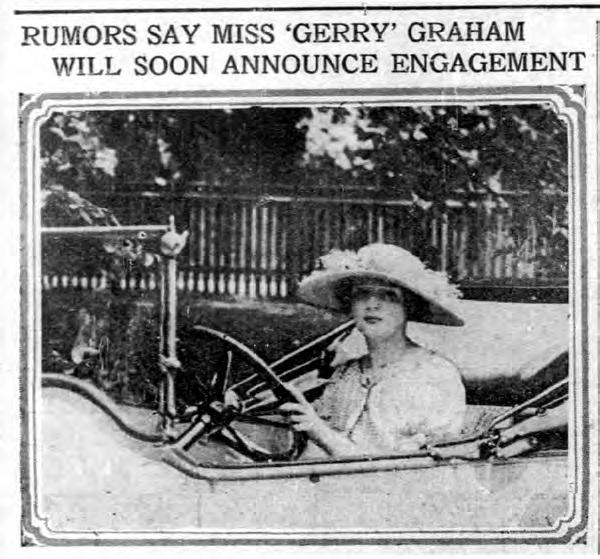
This political cartoon ridiculed the American reaction to the visit of the Prince of Wales in 1919. Society leaders were especially lampooned by the artist, John T. McCutcheon. (Courtesy Library of Congress)


Despite Geraldine’s flirtations with the Prince of Wales, in August 1920, Mr. and Mrs. William Miller Graham announced the engagement of Geraldine and Whitney Warren, Jr., war hero and son of a wealthy architect in New York. A lot of water had flowed under the bridge since the first rumors of a possible engagement had appeared in July 1919. Clearly not in a hurry to rush to the altar, the couple planned to marry in February 1921. Meanwhile, the gossip rags rehashed all of Geraldine’s past exploits. In November, Warren, Jr. left to study architecture in Paris and the date of the wedding was postponed to June 1921.

In Santa Barbara, society was all abuzz with the rumor that the Prince might come to Bellosguardo in December 1920. If so, he was in danger of finding the “Most Beautiful Girl in America” a married matron. In February, Geraldine and Earl had traveled to Del Monte for a polo tournament. There, the hero of the hour and wealthy, handsome hunk, Deering Davis, found himself enthralled with Geraldine and she with him. In a moment of romantic passion, the two jumped into Deering’s roadster and sped away, planning to elope to San Francisco. Geraldine’s brother was Johnny-on-the-Spot and gave chase in his roadster, overtaking the two in just a few miles to put an end to the foolish plan.

Lee Eleanor was completely chagrined and secluded herself until the scandal could blow over. “It was only the foolish idea of a thoughtless child, to be remembered only by those who like to gossip,” she told the press. The press had a field day with the story, which was reported in nearly every large paper in the nation.
To turn the tide of negative publicity around, Lee Eleanor decided that Geraldine must have a Santa Barbara debut in March. It was an impressive affair that included a dinner-dance and three amateur plays staged under a decorated canvas canopy designed by Lee Eleanor. Nationally noted artists Albert Herter and John Dwight Bridge created the scenery for the plays. A 14-piece orchestra, directed by Georges Clerbois, played the incidental music.
Geraldine’s contribution was the Gandhari pageant dance for which she designed the costumes and props. Players included a queen dressed in silver trousers worn with a bodice of orange and a jeweled oriental girdle, elaborately dressed fruit and peacock bearers, Nubians, and acrobats. Geraldine herself danced as Gandhari in black costume with blue sash and the review complimented, “the rare flower-like beauty of the dancer whose artistic creative ability is as great as her beauty.” At the end of the magical night, Geraldine’s reputation was restored.
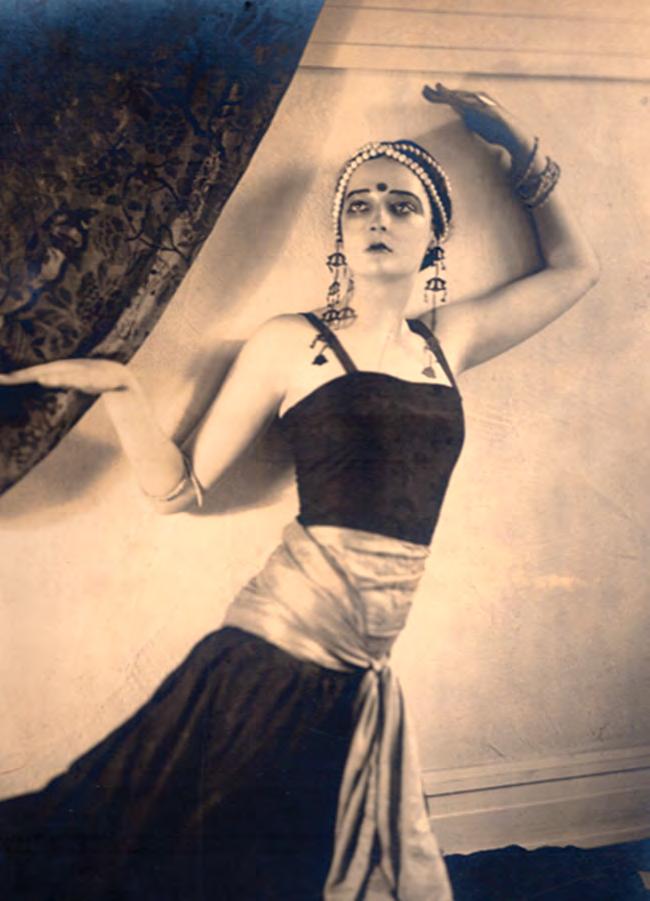
As life for the Grahams settled down, Birdie went to New York to study with David Belasco, the American theatrical producer, impresario, director, and playwright. Geraldine, meanwhile, had a small part in Albert Herter’s extravaganza production of Maurice Maeterlinck’s Pelleas and Melisande in March 1921.


In April, they were back in the news. Whitney Warren and Geraldine had broken their engagement. Lee Eleanor told the press that it was a family matter and of concern to no one else. Warren announced that he was quitting the study of architecture in Paris to take to the stage. A little later, a rather snide article by The Wasp said that with the romance dead, the wealthy New Yorker was going to “take his place in the chorus, there to kick up his heels, smile his smiles and warble his lyrics along with the rest of them. He hopes, however, to someday do something really worthwhile, some Shakespeare stuff.”
A scant week later, the papers revealed that Lee Eleanor had obtained a divorce that past January. Lee Eleanor was not pleased by the breach of confidence. The news set off another round of National Inquirer-style stories with headlines like “Broken Romance of the American Girl the Prince of Wales Liked Best” and “Is It Unlucky to be Praised by a Prince: The Strangely Paralleled Cases of Mrs. William M. Graham and Her Equally Beautiful Daughter Geraldine.” There was, it turned out, no reason to stay married to the Tulsa philanderer; he’d lost his vast fortune. April was, indeed, the cruelest month.
In June 1921, Bellosguardo was listed for immediate sale, and mother and daughter set sail for Europe, planning to stay 14 months. They had decided to open an interior decorating shop and planned to study for their profession in Europe. In July,
Geraldine was presented at the Court of St. James to King George V and Queen Mary. Her travels throughout Europe often coincided with places the Prince of Wales was visiting. When the Prince made his disastrous trip to India, the Grahams were there and must have witnessed the protests and violence. Years later, Geraldine told her granddaughter that after one of the grand balls she’d attended in India, an attendant had delivered a note to her in which the Prince said that he was sorry, but unfortunately, he could not have a relationship with her.

June 1923 brought the rumor of yet another reversal of fortune. “Pretty Miss Graham Once More a Rich Heiress.” Her father had supposedly recouped his fortune, and her mother was supposedly thinking of marrying him again. In August, however, Lee Eleanor opened an interior decorating shop in El Paseo. In October, William Andrews Clark and family, who had been leasing the Grahams’ Bellosguardo, purchased the estate. Lee Eleanor, meanwhile, had been living at Sundial Cottage, which she had built years earlier on Humphrey Road in Montecito.
Though her wings were clipped, life was not terrible for Geraldine. She remained active in Santa Barbara society. Albert Herter painted her portrait as did Dwight Bridge, Herter’s son-in-law, as had dozens of artists over the years, including Clarence Mattei. In 1924, she had a role in the pantomime scene from Beggar on Horseback, the opening production for the new Lobero Theatre.
In June 1925, William Miller Graham officially filed for bankruptcy. Once more the paparazzi had a feeding frenzy. Williams’s $20 million fortune had supposedly dwindled to $150 in personal property and $1,556 in debts. Geraldine announced her engagement to local boy Charles W. Dabney, Jr., a descendent of the famous Azores consular family and real estate broker.

The headlines now read, “Rich Society Beauty to be Matrimonially Anchored at Last.” On August 22, Geraldine Miller Graham, the most beautiful girl in America, married Charles Dabney, Jr. at All Saints-bythe-Sea Episcopal Church in Montecito. The reception took place at Sundial Cottage. They left for Europe for their honeymoon and eventually settled in Hope Ranch where their daughter Roxanna Lewis Dabney was born.
Though another famous debutante played the lead in the pantomime scene from Beggar on Horseback, Geraldine played her Lady-in-Waiting. This Broadway hit was the opening play for Santa Barbara’s new community theater, today’s Lobero Theatre, which reaches its centenary in August 2024. (Courtesy Marc Appleton)
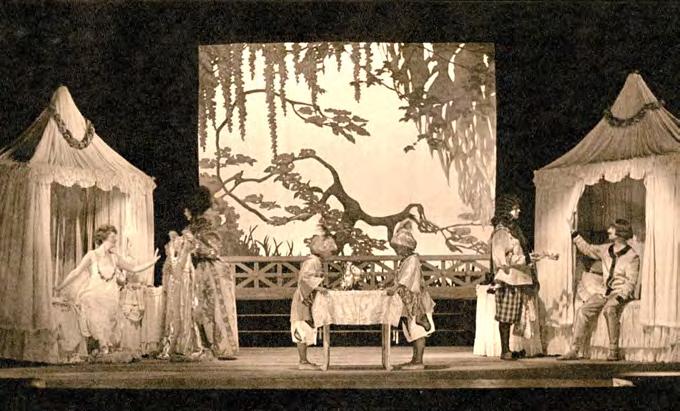
Unfortunately, there was no “Happily Ever After” to the tempestuous fairytale of Geraldine’s life. Her marriage to Charles Dabney, Jr. ended in divorce. She and Roxanna moved to San Francisco where Geraldine later married Julliard McDonald, a banker and real estate manager.
A final note on Lee Eleanor appeared in the San Francisco Examiner in April 1939, when her interior decorating business in San Francisco went under the hammer at the local auctioneers. When the fabulous Graham fortune had crumbled for the last time in 1923, Lee Eleanor had rolled up her sleeves and set to work, choosing to open a business for which she had developed a flair – interior decorating. Her two homes – one in Beverly Hills and another at La Quinta – were often leased to famous stars of the screen. Lee Eleanor had survived the fickle fortune of a life played out in the gossip pages of the nation and would continue to do so until her death in 1944.
Sources: Ancestry.com sources – census, city directories, immigration and passport records, marriage records, birth records, etc.; Newspapers.com; Betsy J. Green’s Movies & Million-Dollar Mansions; theater programs; collections of the Santa Barbara Historical Museum; with many thanks to Gerry Graham Working for photos, family lore, and the Royal dressing case.



“I’ve got this guy in my garden for like two and a half hours,” Allison Amour says pleasantly. “And I’m thinking, ‘I’ve got the school run coming up today, I haven’t washed my hair… Who does this guy think he is?’” The lightly bearded slouch was slight of build, extremely friendly and loquacious, and clearly oblivious to the homespun idea of “hours passing.”
Armour had long since made her reputation as a popular UK designer in the “Outlandish English Garden” scene – but had of late evolved into another gig. Still working with leafy spaces devised around tranquility, she’d discovered a hidden and inexplicable talent as creator of large-format, stainless steel expressionist sculpture, the sort that is polished to such a maddeningly high gloss that, in the proper setting –a lovingly stuffed garden, say – its mirror-like surfaces provide the illusion you’re looking straight through the thing. The chatty hangeron in her own garden that day was an early adopter of Armour’s work –

an enthusiastic client for whose business she was grateful, but whose blabby disinterest in clocks wasn’t playing well with the schedule-driven mother of two.
“And so, finally he leaves!” Armour says, eyes widening to mime exasperation. “My window cleaner was there and he just about fell off his ladder, scrambling down and hurrying over. ‘Allison, how do you know Ringo Starr?!’” “What on earth are you talking about,” I said. “I don’t know Ringo Starr.” She and her worker stared at each other for a long moment. We can imagine Armour’s smile fading as the facts suggested themselves. “...Do you mean Mr. Starkey?”
llison Armour” could be the nom de guerre of a strutting female All-Star Wrestler. The facts are even more jarring. Wryly soft-spoken, given to sudden laughter, possessed of a mild but detectable English accent, Armour is something else again – an artist of international renown whose clients span the globe. “Ghana, Tahiti, Norway, Russia, Israel. I mean, my work is all over Europe, the USA…” On paper, this may look like the swaggering cocktail party braggadocio that tempts one to fling a perfectly good Manhattan into the self-satisfied face of the speaker – but Allison Armour is as nonplussed as you by the broadness of her reach and is otherwise disarmingly transparent. “It’s absolutely ridiculous,” she avers with a stunned smile, adding with a shrug, “…and I have no education.”
Armour’s portfolio is an interestingly varied grab bag of the regal and the retail. Ireland’s Ashford Castle (A.D. 1228) and the MGM Mirage in Vegas (A.D. 1989) cozy up like two peas in a pod, while the outlandishly appointed Holiday Inn Dubai and dowdy Pioneer Ridge Independent Living in Lawrence, Kansas, similarly rub elbows and make pleasant conversation (possibly to do with swimming pool maintenance). The King of Sweden is a client, Armour’s work having been installed at his summer palace on the island of Öland; likewise the Turkish presidential palace. Lest we start thinking of Armour as personal sculptress/dilettante to the world’s blue bloods, her striking quicksilver statuary and ubiquitous Aqualens appear in retail spaces, casinos, and nightclubs across the Seven Seas – from Monroeville, Pennsylvania, to New Delhi to the Crocus City shopping mall in Moscow. An Armour piece resonates as both fine art and as a consumable instance of beauty that elevates the vibe of any setting.
How, exactly, did she come to this pass? “That’s easy for me to answer,” she says. “I was born into a very privileged family who… well, we knew a lot of privileged people. So as a kid, I was going around to these most incredible houses – country estates where the drives were lined either side by Henry Moores and (Alexander) Calders and – it was unbelievable. And that was the Rockefeller’s estate, and there was the Du Pont estate,
As a young lady, Armour was not wanting for cultural input. At one point in her youthful travels, she was given a personal tour of Venice’s Guggenheim by someone who seemed to know her way around the place. “My great-aunt had a palazzo in Venice. When I went to visit her, Peggy Guggenheim, who founded the Guggenheim Collection there, closed her museum and personally took me around it.” Armour – seen here as a young lady being ushered around the Guggenheim on Venice’s Grand Canal by Peggy Guggenheim herself – may be forgiven for having been drawn to a numinous art world that all but held its arms out to her. Was she aware, as a young person, of the cultural gravity of the works she was seeing? “It was commonplace in my world. So it wasn’t like, ‘Oh my God, that’s a Calder!’ It was just, ‘Oh, doesn’t that look great? I really like the feel of that. When I grow up, that’s what I want.’ And then when I grew up, that is what I wanted! But I couldn’t afford it. So I thought, Well, I’ll have to do it myself.”


Favored artist of kings, presidents, and The Beatles drummer – Armour has no airs. Whatsoever. “I never went to college,” she says. “Parsons School of Design I only did one year. The year I went to the Architectural Association in London, they’d decided that the best way to teach was to not teach. This was during Vietnam. So, there were no classes. My poor father paid for the tuition.” Her academic destination thus shuttered, Armour was more or less stranded in London Town. She made the most of her time. “There was no formal education. I discovered London, and that was an experience in itself.” We can broadly imagine the education Armour did receive in the “Swinging London” of that period which, apart from Petula Clark’s domination of Downtown, was a hotbed of “happenings” – Terry and Julie at Waterloo Station and reactive new art from the likes of Francis Bacon and David Hockney. Where art school formalism escaped Armour, she made do with a sponge-like absorption of the exploding London scene – and her own unerring intuitions.
“What would’ve happened if I’d gone to college?” she asks rhetorically. “They would have taught me that there was a certain way to do things. Well, I break rules. That’s part of what I do. Being a woman and not using a structural engineer, I want to make my work ethereal, with as little construction to make it sound as possible.”
It was the 1999 Chelsea Flower Show – a tooth-and-claw affair disguised as a peaceable contest between gardens – that effectively launched Allison Armour. “You may not know about it, but the Chelsea Flower Show really is the Super Bowl of garden shows – and a really big thing in England,” Armour says. The RHS (Royal Horticultural Society) Chelsea Flower Show is indeed a globally prestigious floral event whose origins date to 1862. The show has been held at Royal Hospital Chelsea since 1912 and is traditionally attended by members of the British royal family. “I’d been making gardens,” Armour says of her vocation to that point, “and that’s how I started. I had a natural eye for garden design.” She broadly sketches her final project with the green stuff. “I took a 15-acre field and turned it into a series of gardens. That was my last one in England, and it was on TV and in magazines and all that. Then came the Chelsea Flower Show.” Armour had been working on designing garden sculpture and water features when she showed her ideas to friend and celebrated UK horticulturist Peter Rogers, OBE. He had the outlandish idea that she should try to enter the Chelsea Flower Show. When they accepted her proposed entry, she was flabbergasted. Over nine short, frenzied months then (Chelsea Flower Show habitués more typically spend years preparing to exhibit), she produced a garden design whose newsmaking character she hadn’t entirely anticipated. Her placement
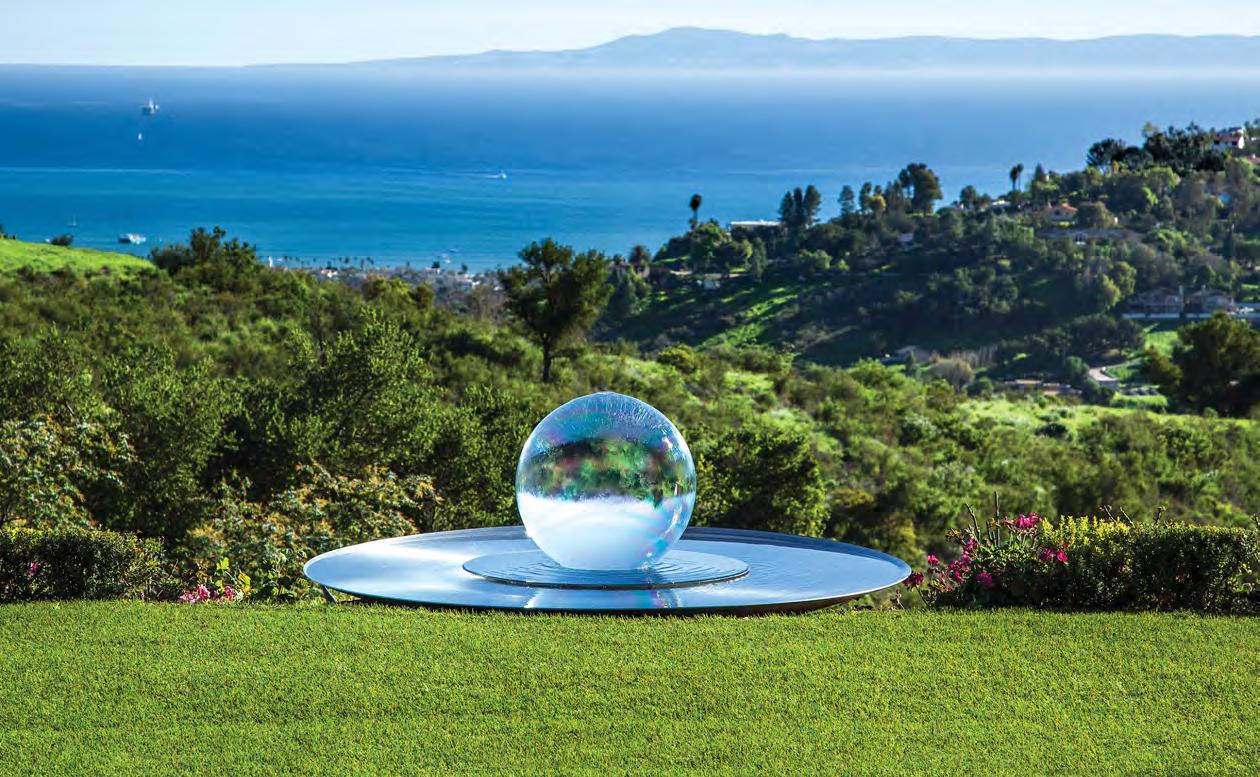
of dazzlingly brash modernist sculpture within the traditionally calming milieu of leaves and flowers in neatly delineated beds –this turned Chelsea on its ear, as did this first public unveiling of a spherical water feature she’d designed. She called it the Aqualens (no relation to Jethro Tull’s album). The Chelsea judges awarded her “Garden of Reflection” that year’s silver medal. It was Armour’s emergence from the chrysalis. She was 50.

“I’d been a housewife raising children, designing some gardens, and it’s like I suddenly… I just burst into tears. I couldn’t believe it.” Neither could the world at large. Her reputation exploded in the swarm of press that followed her Chelsea Flower Show debut – and has blossomed apace in the 24 years since. Her stainless steel “garden sculpture” designs have broadened and are in great demand everywhere. Armour is a working artist. Naturally, her success, moxie, and innate grasp of what we’ll call “structural engineering” have rankled the usual suspects.
Armour’s most popular item by far – the Chelsea Flower Show-stopping, world-conquering Aqualens – is a sparkling acrylic sphere filled to overflowing with gently pressurized water. The effect is approximately as mesmerizing and light-throwing as a crystalline droplet adrift in zero gravity. Following several unsatisfactory prototypes, she’d realized the base of the Aqualens should be shallow and dish-shaped. She began thumbing through the phone book, calling around to steel fabricators, the predominant attitude an amused “Who’s asking, honey?” – presumably due to the Y chromosome’s long affiliation with steel. “Four years later, they were flying down to see me. ‘Could we have your business?’” Armour’s delicious cackle is too good-natured and musical to suggest schadenfreude. But – for the record – living well continues to be the best revenge.
Her clientele is not always consumed by her work’s finer aesthetic details. “In the end, Ringo just said ‘Okay, Allison. I want the biggest and the best you can make!’ That is a very Ringo statement,” she says warmly through laughter. There is one client with whom Armour would not cross paths, possibly owing to an instance of charitable sabotage. “I had just finished installing his moon gate, which is 17 feet in diameter,” Armour says. “I was
“ They would have taught me that there was a certain way to do things. Well, I break rules. That’s part of what I do.”
working on the installation with an American. He is absolutely delightful, so creative and wonderful, and we still work together whenever we can.” They’d finished the installation at 5 pm, and her friend suggested a drink before the ceremonial unveiling they would be attending in the client’s presence at 8 that evening.

“He said, ‘Allison, how about we go over to Nobu for a cocktail? You have to try my lychee martini. It’s my signature drink.’” Armour agreed, and they toasted each other. “It was delicious,” she says extravagantly. “Then he wants me to have a second one. Okay, I’m good. I’ve got a driver…” They finish the second martini. Her friend is just getting started, it seems.
“He says, ‘You want a third one?’” Two nicely prepared cocktails tend to lay the groundwork for a third. Armour was easily persuaded. “Of course, we have the third one. By then I realize I’m way too drunk to go to the unveiling. I mean, it’s all I could do to get into the car and back up to my hotel room!” Her American colleague may have been doing her a service with a bit of lychee-infused subterfuge. “I adore him,” Armour says of her colleague. “But I’m an American and a woman, and my client is not that crazy about American women. So, I think Putin may not have known who the artist was – and that my colleague may have been posing as the artist to save me from an awkward situation.” Glass half-full. Armour sighs through a smile, saying of the missed meeting, “I didn’t have to shake his hand.”
Allison Armour grew up around art and it captured her. For all her success, she has yet to be invited into its executive lounge. “The art world has definitely shunned me,” she says without malice. Never mind. She’s drawn to something else in the calling. “When I was in the 6th grade, I had an absolutely
terrific English teacher. We had to memorize poems – long poems. One of the first ones I learned was Keats’s Ode on a Grecian Urn…” Armour and I are video conferencing, and she looks straight at me though the screen. “Beauty is truth, truth beauty,” she recites, her eyes shining. “That is all ye know on Earth, and all ye need to know.”

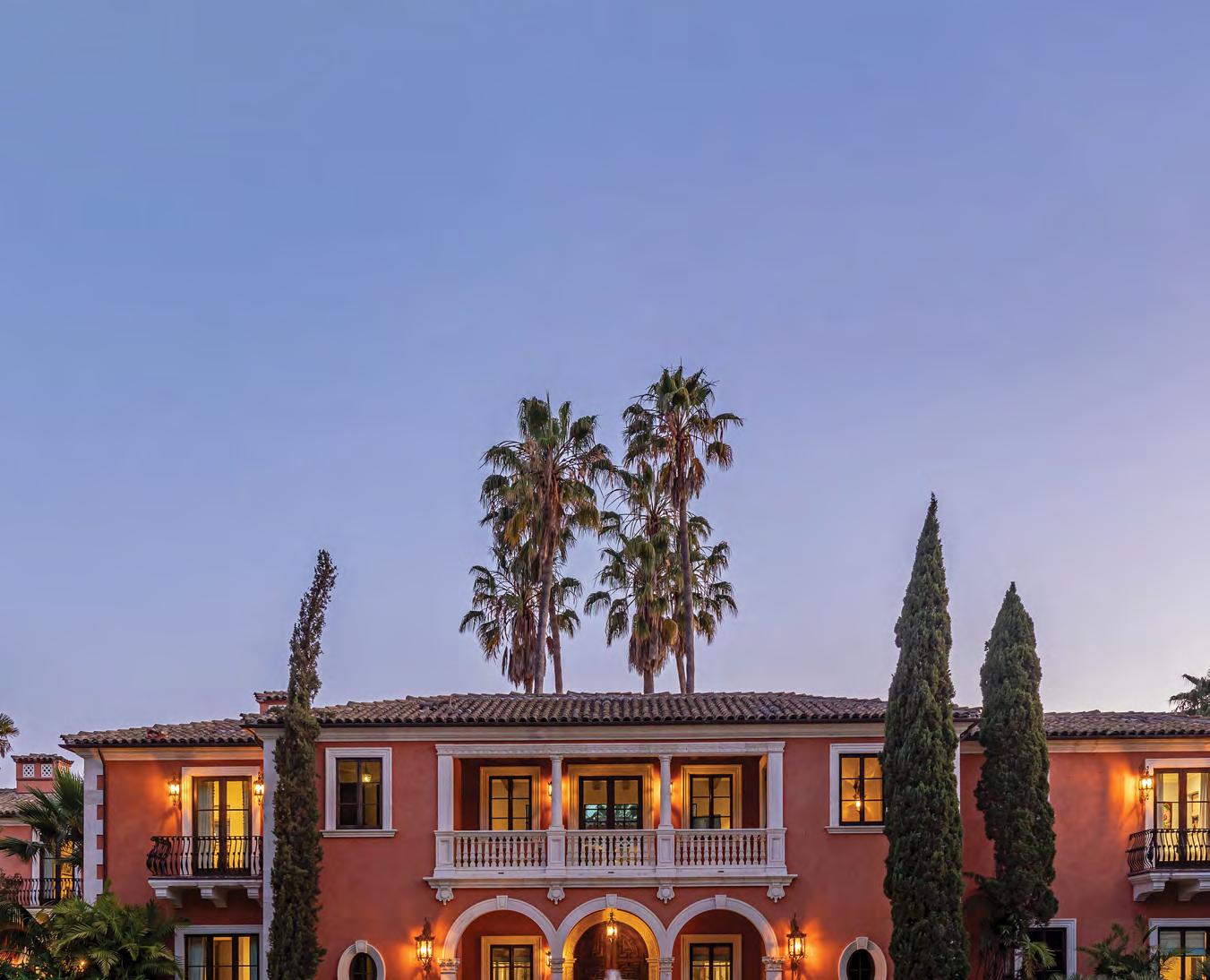













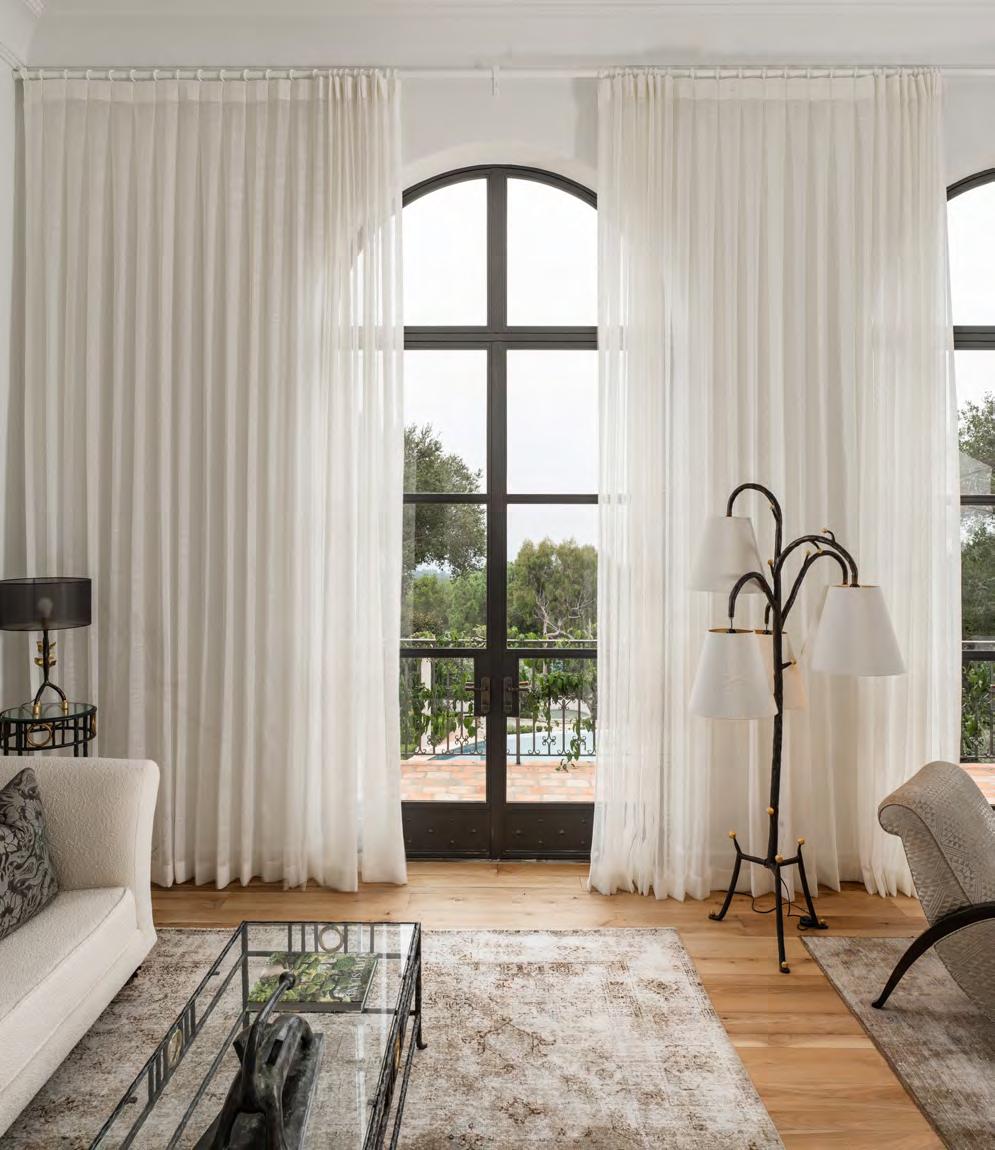


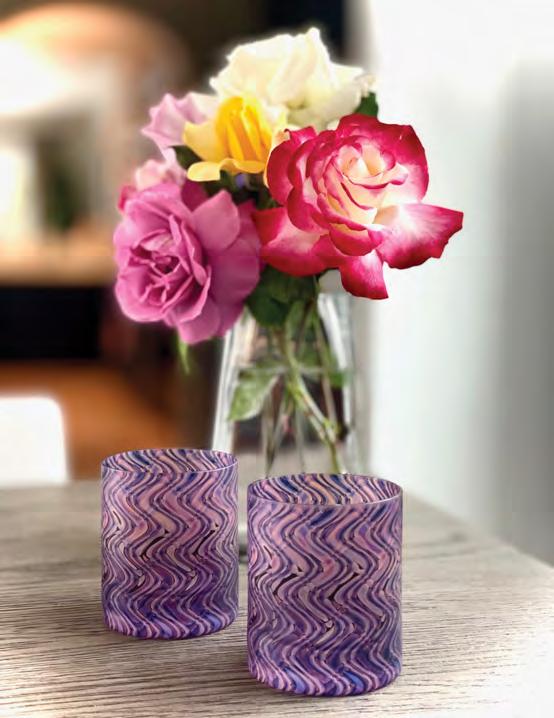


We’re surrounded by stuff, by things. Some of these are the sort of ephemera you grasp with a coinoperated claw at the state fair – flapdoodle that may have limited emotional purchase on your attention. Some objects, though, are time-bending totems from one’s past, otherwise inconsequential curios made superdense by the inarticulate longing they radiate like a magnetic field; the purple horse figurine from your older sister’s teenage writing desk of a million years ago, the dumb little glass ashtray whose omnipresence dates to your earliest dreamlike memories of family. Some of our objects move alongside us through the rooms and doorways and days and nights and weeks and years –accruing through time the weird and affecting power we inadvertently grant them. “No ideas but in things,” as the poet William Carlos Williams assures us. Former set decorator Susan Vizvary literalizes Williams’s comment.
“It all involves bringing us together,” Vizvary says of her own pieces; functional objets d’art that literally capture moments in time and haul them into present-tense gatherings abuzz with kinship and connectivity. A gorgeous and fanciful Vizvary rocks glass (for instance) allows one to sip memory-stirring booze from a memory-stirring photograph that inhabits the glass itself. Literally.
“Post-COVID, I found that people went back to the basics –gathering and reconnecting,” Vizvary says of our desperate collective reunion once global lockdown eased up. In the creative fever of her own lockdown, she’d dreamed up a line of mixology accoutrements – whisky glasses, serving trays, coasters,
tea towels. To these tools of renascent human fellowship Vizvary added a feature – the means to turn a digital photo into a nonfigurative splash of expressionist color. So it is that a Vizvary acrylic tray festooned with color-rich Vizvary cocktail glasses is a stealth gallery of beloved photographs, digitally deconstructed and hiding in plain sight.
Vizvary spent about a decade as a professional set decorator, something she’d aspired to since a childhood epiphany. “Come and knock on our door, we’ve been waiting for you…” Ring any bells? “It’s so crazy,” Vizvary says, “but I remember watching Three’s Company as a kid and thinking, There’s someone out there in the world who had to choose that couch, choose those frames, choose the houseplants for the set. That’s somebody’s job!” Yes, young Vizvary was less wowed by the “hers and hers and his” conceit of Three’s Company than by the arrangement of its furniture. “I would wait until the end of a TV show – any TV show – and watch the credits. Most people want to know who the actors are. I wanted to know who did the set.”

She eventually found her way to UCLA’s Set Design course work, and thence to show biz. “I worked at a prop house for two years – just to meet everyone I could who was in that business. Once I felt I’d absorbed all I could, I quit on a Friday and started working again on a Monday. And I worked in set decorating for the next 10 years.”
Starting a family redirected Vizvary’s ambitions. She pivoted to pouring her creativity into raising three preincarnate adults. Children are our hope for a peaceable future. More significantly, they are captive photographic subjects. Vizvary

took the tumble. “I went with a few other moms to a photo class a pro was teaching.” First assignment: photograph your child in good light. “I came in with a picture of a squirrel in a tree,” she says without further explanation. “The instructor pulled me aside and said, ‘Look, everyone else is showing me snapshots. You’re showing me photographs.’” This positive reinforcement was all the octane she needed.
Vizvary dove in, her devotion to the new pursuit reflected in her kids’ swinging adoption of the argot. “We’d walk into a hotel room with its wall art and they’d say, ‘Oh my god, Mom. Will you look at that horizon line!’” Vizvary hesitantly attended a 2017 licensing show in Vegas and was stunned to leave with seven contracts. Today, her photos are licensed and sold around the world. “I get checks several times a year from people I don’t know. It’s really rewarding. And it’s really, really fun.”
Camera in hand, Vizvary was hitting her stride. Now we know that just as one’s sense of wholeness and accomplishment nears apogee, a planet-encircling virus will show up to hose down our intricately laid plans, revealing them to be a soaked heap of dime store papier-mâché. Which is to say, COVID struck. “No more trips. No more going out to shoot. There were two years of national park closures. We were all trapped inside. That was when I turned to the computer and started playing with the images in my library.”
Vizvary stumbled onto something that would prove fruitful –a way to refashion a photographic image from life into a dazzling burst of abstract color and pattern that yet contains all the elements of the original image. What to do with this new

process? Vizvary decided she would parlay her new technique into a tool for social cohesion – what some people call a “whisky glass.” From there, she added a suite of other functional, hospitality-related art objects, their vibrant motifs concealing photographs of times, places, people. Imagine – a photo is digitally deconstructed, stirred with a stick (so to speak), and embedded into a piece of glassware into which one may tipple a dram of single malt salvation. The possibilities are Proustian.
Vizvary sees our human desire to convene as a healing sacrament. Her barware could be the ceremonial stuff one sees in spaces given to communal transcendence – the smoking censor on a chain, the chalice. She’s only trying to help. “People really like to go to each other’s homes,” she’d summarized earlier in the conversation. Now she dials back to her girlhood discovery – the arranged room as a vessel. “There’s the walls, the furniture, then there are the knick knacks – the things that tell our stories.” Susan Vizvary sighs. “And the quiet conversation with friends – we’re very lucky.”
In the creative fever of her own lockdown, she’d dreamed up a line of mixology accoutrements –whisky glasses, serving trays, coasters, tea towels. To these tools of renascent human fellowship Vizvary added a feature – the means to turn a digital photo into a nonfigurative splash of expressionist color.

“Using the lost wax casting process, I create playful bronze objets d’art with humorous, allegorical themes. These pieces mysteriously appear from my clay pile, announcing themselves with a story. It could be my own story, it could be the viewer’s emergent story, or it could be any one of the endlessly rewritten stories that define, explain, and stir us. The collective human condition has a unique way of expressing itself in my work.

“Fables, Foibles and Fairytales” – a touring exhibition of my work – has traveled to 20 museums and venues throughout the country. I’m the author of the book Bronze Casting in a Nutshell, illustrated by my cartoonist father, A.D. Read.”
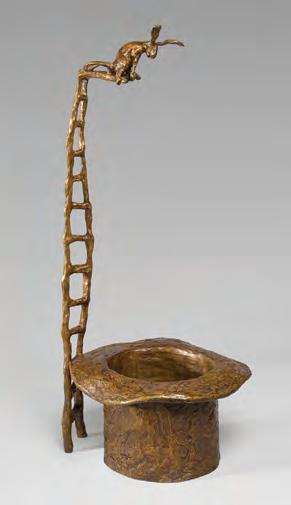 BY APPOINTMENT
BY APPOINTMENT

(802) 379-8172, WWW.SUSANREADCRONIN.COM

Artist, owner, and curator of Portico Fine Art Gallery in Montecito for 19 years, Jordan Pope represents a roster of master artists whose reputations are national and international. Most are California-based artists whose works exalt our famously beautiful and aesthetically varied state.
New for Portico Fine Art Gallery is the “Monet Room” – recently

opened to serve as an extra studio for Pope and fellow artist (and husband) Dennis Newell. This added artist’s space in the building directly behind the gallery is a thoroughly equipped working studio where she and her husband paint, and where Jordan conducts classes on Tuesdays and Wednesdays, teaching alla prima oil painting.
Jordan Pope is a successful professional artist in her own right, working in larger-format oil paintings that capture the natural poetry of the scene – what she refers to as Romantic Realism – of our landscapes, tidelines, and tree-dappled rolling hills.

1235 COAST VILLAGE RD., MONTECITO
(805) 729-8454, WWW.PORTICOFINEARTS.COM
Art for Art’s sake. What on Earth does that even mean? It means where words fail, art speaks. It means we are an expressionist species with a lot to say, and many many ways to say it. Here are a few glowing examples.

“The natural world is wildly vibrant with color and movement – a dynamic, living ecosystem of which we’re all a part. Latitudes Gallery is a celebration of that magisterial natural beauty and an opportunity to bring the planet’s most alluring set pieces right into your home. Artists ourselves, we’ve traveled the world, documenting its visceral beauty,
continually stunned at our discoveries.
“Partaking of these extraordinary places inspires a deeper connection to the world and reminds us that we are elements of the wonder that surrounds us. As an artist-owned gallery, Latitudes specializes in crafting handmade, customized art tailored to seamlessly suit your space – and lift your spirit.”

401 E. MAIN ST., VENTURA (805) 642-5257, WWW.LATITUDESGALLERY.COM
Founder and designer of the eponymous womenswear fashion brand, Catherine Gee’s flagship store is cozily ensconced in Santa Barbara’s bustling La Arcada Plaza – the very heart of the downtown Arts District. Indeed, Gee’s 2,400-squarefoot boutique adjoins the town’s celebrated Santa Barbara Museum of Art.
Catherine Gee is stocked in more than 220 retail stores across the United States. The brand’s accolades include winner of the WWD x Galeries Lafayette Paris 2016 Crème de la Crème Emerging Designer competition, as well as 2018 Sportswear International’s “Best Travel” brand winner at the NYC trade shows. “I see myself as a steady wardrobe builder, and I pride myself on the quality, timelessness, and art within the styles,” says Gee. “It’s amazing to see women from all walks of life and places around the globe come back season after season to build and enhance their style.”


1114 STATE ST., STE. 24, SANTA BARBARA (805) 324-4699, WWW.CATHERINEGEE.COM


In October 2020, Caldwell Snyder Gallery, now entering its fourth decade in the art world, brought its contemporary art vision to Coast Village Road, Montecito, gracing a community known for its predilection for distinctive and utterly singular art. Located directly across from the iconic Lucky’s and Honor Bar restaurants, Caldwell Snyder’s presence is signaled by a stunning steel sculpture by California artist Brad Howe – a local landmark as well as a welcoming harbinger of the embraceable warmth, color, and vanguard artistry that awaits within the gallery itself.

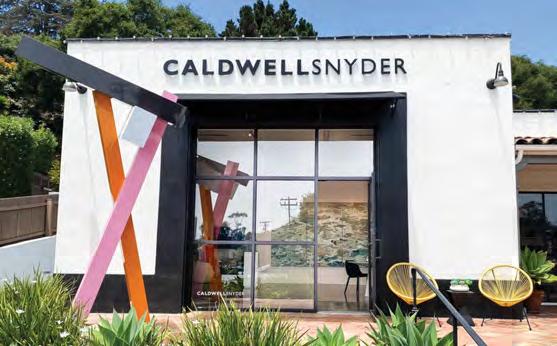
Founded in San Francisco in 1983, Caldwell Snyder will be celebrating 40 years of business at the end of 2023, with three locations includ-
ing San Francisco, Montecito, and St. Helena in Napa Valley. Over the years, owners Oliver Caldwell and Susan Snyder have not only managed to attain an international reach, but have established a legacy of artistic excellence. Having mounted more than 500 exhibitions in San Francisco, Los Angeles, New York, Cologne, Hong Kong, Tokyo, and beyond, their influence and footprint in the art world is undeniable. Beyond showcasing art, they work closely with individual collectors and designers to place art in luxurious homes, thereby adding a touch of elegance and culture. They are delighted to have established a permanent presence in the taste-making Montecito community and the broader Southern California market, promising an immersive and enriching art experience to all who step through their doors.
1266 COAST VILLAGE RD., MONTECITO (805) 770-7170, WWW.CALDWELLSNYDER.COM
Cassandria Blackmore’s paintings on glass fulfill abstract art’s longstanding ethos –the deconstruction of the image. Blackmore’s “reverse painted” glassworks, both abstract and figurative, are literally shattered and then meticulously reassembled. The effect is a shimmeringly interactive surface dynamism, somehow more vivid and conversational than the sum of its reconstituted shards.
Cassandria Blackmore’s work is exhibited nationally and internationally and has long been commissioned for notable public spaces. Among the numerous museum collections including her work are the Fitchburg Art Museum in Massachusetts, the Waldorf Astoria’s Major Permanent Installation, the Oakland Museum of California, the Crocker Art Museum’s California Contemporary Painters, the Imagine Museum in Florida, and many more.
1275 COAST VILLAGE RD., MONTECITO, (805) 895-2447 WWW.CASSANDRIABLACKMORE.COM


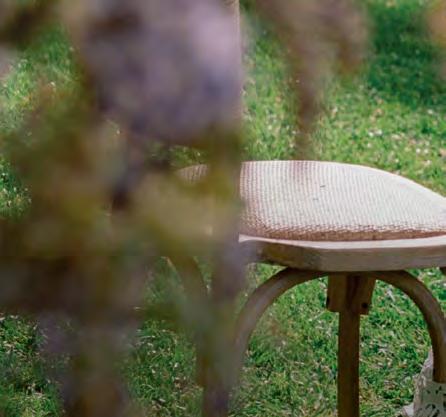



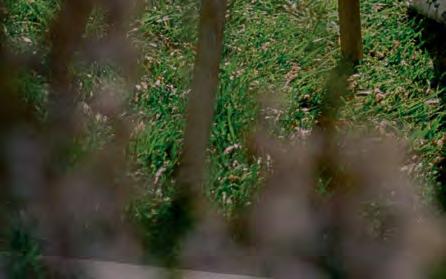










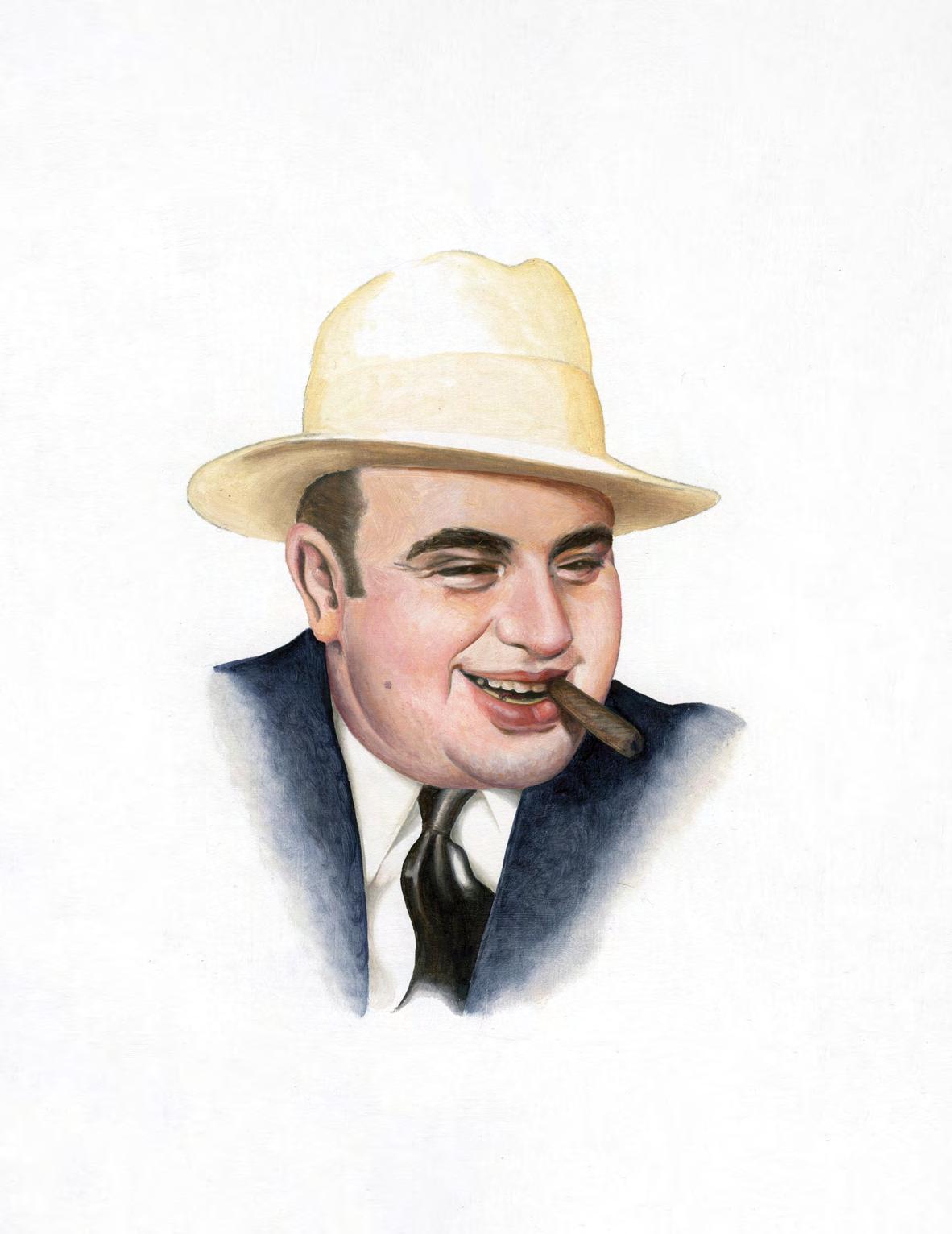

 Story by James Buckley
Story by James Buckley
Of course, Montecito (and its nearby neighbor, Santa Barbara) is so popular with folks who can afford to live here because of its fabled “year-round” climate. Who’d have thought? However, along with that year-round weather bonanza is the reality of some gloomy months (though the truth is, one can still play golf, tennis, baseball, soccer, whatever, under the heavy clouds and misty air). But, okay; you do know where the sun shines, and it’s not far away. No, I don’t mean Solvang and its many dozens of wine-tasting rooms, or Santa Ynez with its Michelin-starred chefs.
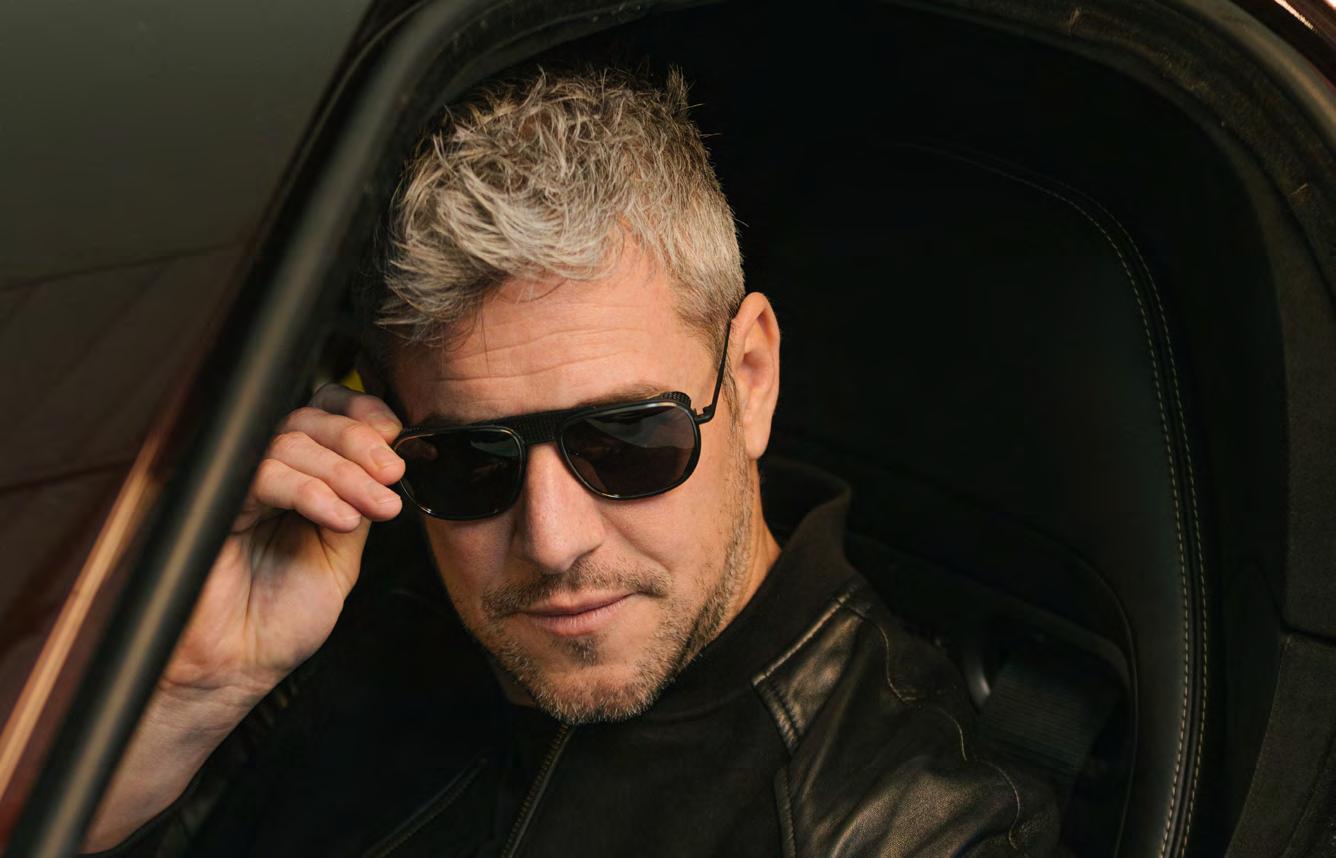


One easy antidote to the 805’s June Gloom that arrives almost on schedule nearly every year would be a three-day holiday in America’s original Sin City – Las Vegas – where the sun shines pretty much all year. I recently took an impromptu off-the-beaten-track jaunt in Las Vegas, and in this case made an almost criminal discovery. For my money, you can’t beat spending a day with a bunch of wise guys.
You can drive to Vegas, but why bother? If you’re feeling flush, for example, you could call Santa Barbarabased Silver Air, whose handsome fleet ranges from a seven-passenger Cessna Citation jet to an eight-passenger Pilatus turboprop and to 14-passenger Gulfstreams and more. The company offers chartered one-way and round-trip fares to Las Vegas, and if you’re splitting the cost among seven or eight individuals (or 14!), while not exactly economical, it wouldn’t be a legacy breaker either. You’ll still have plenty of money left behind for someone else to spend. There’s also Southwest Airlines, which currently runs three 75-minute scheduled flights from Santa Barbara Airport to Harry Reid International Airport every day – two on Saturday and, again, two on Sunday. Fares are anywhere from $94 to $224, depending upon when you fly. If you think you need a car (you don’t), rent one on arrival in Vegas.
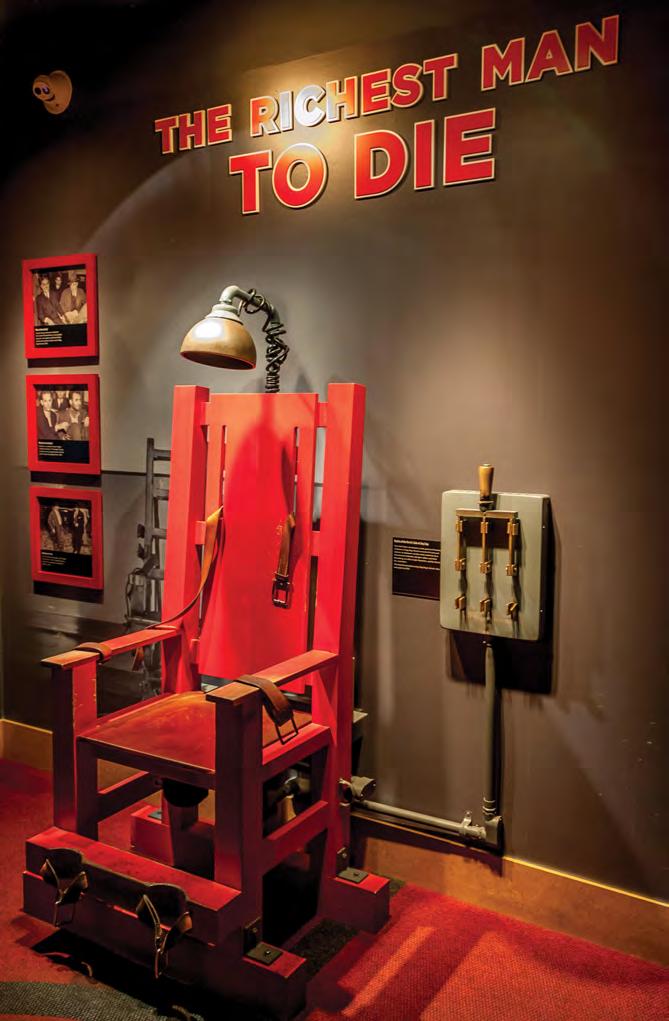
Hotels are plentiful, though the resort fee charged by most is an abomination. But hey, you’re here for a weekend so you’ll just have to suck it up. Check in to your favorite. And, keeping with our “local” theme, make a reservation to see one of Montecito’s legitimate megastars Katy Perry in her ongoing stage act called Play at Resorts World hotel. Don’t worry about where to leave your kids – it’s a family show, and children under 3 years old are free. Buy a good enough seat and maybe you’ll run into Perry’s fiancé/actor, heartthrob Orlando Bloom at Katy’s Resorts World show – if he’s not previously occupied with Santa Barbara megatrainer Peter Park (see “Game Recognizes Game”).
You can swim, gamble, play golf or tennis (pickleball, anyone?), dine at some of the best restaurants in the world, maybe even make whoopie (on occasion)... whatever. Knock yourself out. In addition, for my money one of the most interesting (and fun) things you can do in Las Vegas is… wait for it… go to a museum. I know, it’s not the first thing that comes to mind when you think of Sin City – a town better known for sensation than museum curation. But this isn’t just any museum. I’m talking about The Mob Museum in downtown Vegas. If you love outlaws (and who doesn’t?), you’ll love this place.


Ageneration or two is usually enough time for a family whose fortune may have been built upon a crime to find respect and bury its heritage. But not Las Vegas. Vegas is proud of its inglorious past. Housed in a four-story former Federal Courthouse and U.S. Post Office, The Mob Museum revels in Sin City’s storied, unconventional, and very criminal past.

The building’s basement, for example, has been converted into an immersive exhibit redolent of the Prohibition era, complete with a fully operational speakeasy featuring a menu of 1920s-style cocktails. Gin-based Bee’s Knees and other drinks are served, and a traditional whiskey old-fashioned will be delivered hidden in a book.
You’ll be invited to tour an onsite distillery where 100-proof corn moonshine is made. You’ll taste some of the product and learn how this process differs from what bootleggers often turned out.
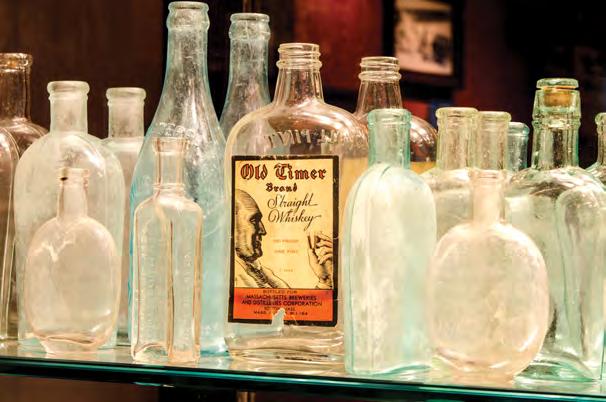
Upstairs, you’ll want to take photos of yourself sitting in a replica of Sing Sing’s electric chair; the same model upon which Murder, Inc. founder and hitman Louis “Lepke” Buchalter ended his days on March 4, 1944.
Nearby is the original brick wall against which seven mobsters affiliated with “Bugs” Moran’s North Side Gang were executed by four men in what has become known as the Saint Valentine’s Day Massacre. The event took place on February 14, 1929, in a garage at 2122 North Clark Street – hence the massacre’s headline-inspired moniker. The suspicion is that Al Capone –head of the rival Chicago Outfit – had something to do with the murders. Capone, though, was never charged. On another floor is the original courtroom where U.S. Senator Estes Kefauver held hearings on the influence of organized crime, and it has been thoughtfully restored to its original use in the 1950s.
Claire White – the museum’s director of education who led me through the various floors and exhibits – points out that, as far as this courtroom is concerned, “It was important to maintain its integrity for historical reasons.” She continues, “We want guests to feel they are part of that history, and this building is on the National Register of Historic Places.”
There are several interactive exhibits that require a separate ticket but are well worth the nominal additional fee. For example, the Firearms Training Simulator contains actual training videos used by law enforcement. One situation you may encounter is a convenience store armed robbery in progress that will require you to make the same kind of split-second decision a police officer must make. Your goal, however, is not to shoot but to de-escalate the situation. Good luck with that.
The Forensic Crime Lab features a very hands-on experience. Your fingerprint will be matched against an array of various
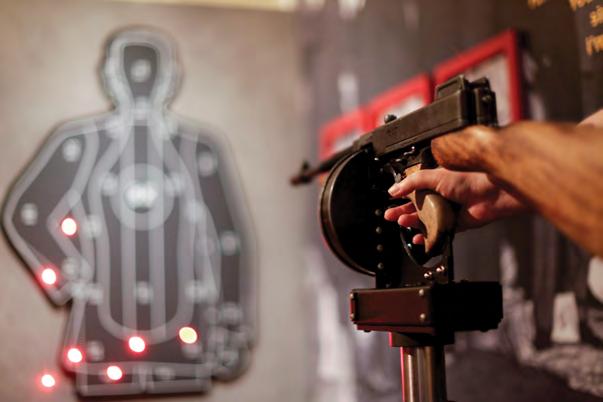
mobsters’ prints and will identify which gangster your print most resembles. You’ll inspect a DNA sample in a simulated version of gel electrophoresis – a lab method used to separate mixtures of DNA, RNA, or proteins according to molecular size. The Death Investigation station features a digital autopsy table like one used in medical schools. You’ll see victims of three different mob hits on a giant computer screen, and, as the coroner, you will be tasked with figuring out how they died. At the Crime Scene Investigation (CSI) station, you’ll find a row of potential exhibits – two checks to examine (one of which is
forged), a knife, some hair, and a shoe tread with particles of an unknown substance. Yes, you’ll need a magnifying glass. On the bullet comparison microscope will be one bullet (recovered at the scene) along with four others. You’ll have to match the evidentiary bullet with one of the samples to figure out which gun was used.
Give yourself at least two hours to go through the museum (it took me four) and if you’re going to pay to experience the immersive exhibits – and I encourage you to do so – each will take up to half an hour.
After describing the various exhibits, White expressed enthusiasm about one acquisition: “We have a phone booth from the Four Deuces saloon and brothel, which was owned by Al Capone and his mentor, Johnny Torrio.” The club’s address: 2222 Wabash Avenue, Chicago.

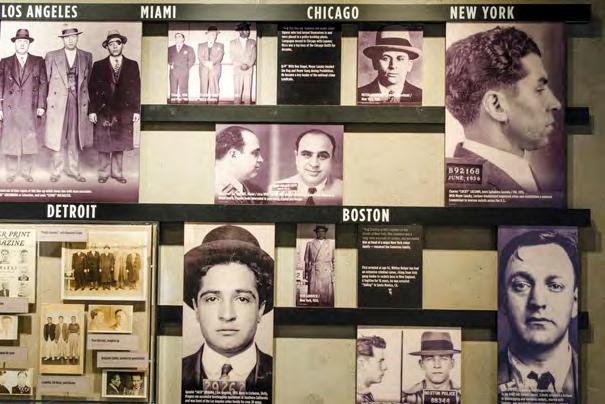
On the second floor are yet more items: a pair of Bugsy Siegel’s sunglasses, a down payment check of $9,500 used to purchase the land for the Flamingo, a briefcase owned by Moe Dalitz, financier of the Desert Inn, and handcuffs worn by “Tony the Ant” Spilotro upon his arrest. Take it from Ms. White: “I love our Las Vegas exhibits,” she says.
The museum is also expanding its collection of movie memorabilia. Currently artifacts on display include items from the fictional Tangiers Hotel & Casino featured in the movie Casino – including poker chips, script material, and a mock newspaper used in the film. Other items include material from TV’s The Sopranos and Breaking Bad. While most of the museum’s recent high-level items have been successfully purchased, the museum does accept donations.


As you leave, be sure to pay your respects at the Made Men Wall – a memorial dedicated to “men, and occasionally women, lured by money, respect, and power [who’ve] joined forces to fleece America – and eliminate anyone standing in their way.” Then it’s just a quick 80-minute flight from Harry Reid back to SBA.
The Mob Museum is open every day from 9 am to 9 pm; the underground speakeasy and distillery operates Monday through Wednesday from noon to 10 pm, and Thursday through Sunday from noon to midnight. It’s located at 300 Stewart Avenue (just off Fremont Street) in the heart of downtown Las Vegas.
Some of the exhibits have age requirements, such as the Crime Lab (11 and up), Distillery Tour and Tasting (21), and Firearm Training Simulator (13 to 16-year-olds must be accompanied by an adult; parental consent is required for all minors).
Check before you buy your tickets, and it’s a good idea to purchase them in advance. Special thanks to Mikayla Jones, communications manager, The Mob Museum.
$270M IN CAREER SALES
Omid Khaki is an esteemed high-end residential real estate specialist in Southern California. With an intimate knowledge of both active and unlisted markets, Omid diligently and effectively guides his clients to homes before they ever reach the market by leveraging his well-established connections with property owners, local brokers, and other business professionals. His clients can expect transparent communication and discreet marketing to high-networth individuals through personally-crafted contact strategies.
His commitment to excellent client service and his solid reputation in Santa Barbara has enabled him to successfully broker multiple significant area estates throughout his career. He is widely respected throughout the local community, as an active member of numerous local organizations, including Page Youth Center and Hustle Hoops. Omid’s business is built on putting his clients’ interests first, transparency, uncompromising integrity, and cutting-edge marketing strategies that help his clients achieve the best outcome in every transaction.


“40+ years living in Santa Barbara and 16+ years as a local expert advising high net worth clients”

“If you have the privilege of being able to travel to these areas, it’s your duty to make sure that you’re practicing ethical tourism.”
When Kristina McKean visited Thailand on her honeymoon some 20 years ago, we can suppose that the last thing she expected was to be radicalized by an elephant. But visiting an outwardly charming “trekking and riding” elephant attraction on that trip opened her eyes to something previously outside her experience. Something distressing. “If there isn’t a market for these practices – if we don’t go and ride them and watch them perform – then this elephant tourism will go away.” As reported in the Summer 2021 edition of the Montecito Journal magazine, what McKean witnessed being done to elephants so repulsed and shocked her, a new and previously unexpected fork in the road appeared before the young newlywed.
Had someone told McKean – an entrepreneur and design professional – that she would one day be dividing her time between our leafy village on California’s Central Coast and an elephant rescue operation in Thailand? The speaker’s nutty forecast would’ve been met with McKean’s bewildered stare. Today, the Montecitan is unequivocal. “You know, people say, ‘I love elephants! I had them paint a picture for me!’” McKean’s brow furrows above a troubled smile. “No, no, no! Do not ride elephants,” she says. “I mean, I understand the impulse to be close to these amazing animals, interacting with them. But I ask that people not partake of Renaissance fairs or circuses… or any place trained elephants ‘perform.’” The Elephant Project –McKean’s advocacy and fundraising dynamo – donates all net proceeds of her specially created (and deliciously plush and adorable) stuffed animals to organizations that are helping to end the crisis, as well as to legitimate elephant sanctuaries in the United States and abroad.
What’s the big deal? Elephants in the benign captivity of a tourist-centric “sanctuary” appear to be living good lives –they are well-fed and cared for beyond predation and other Darwinian terrors humans associate with “the wild kingdom.” But nature is a deeply layered and largely unapprehended world unto itself. Wild animals are inextricably part of that world – as
modern humans resoundingly no longer are.
It’s no accident that you won’t find an elephant in Thailand’s tropical forest daintily wielding a paintbrush and daubing a canvas any more than you will see a tax accountant in freshly ironed khakis joyously roughhousing with a pack of starved hyenas. Elephants aren’t wired to perform tourist-pleasing tricks, and changing their wiring to accommodate our eager and well-intentioned visits is an unnatural and brutal psychological transition accomplished through a longstanding practice locally known as phajaan. “They place them as babies in these horrible cages called crush boxes, and they abuse them,” McKean says. “The elephants become so fearful of humans in the process –they’ll do anything. You literally crush their spirits.”
Baby elephants taken from the wild often see their mothers and “aunties” in the herd killed by the elephant collectors. The young elephants are then placed in a cage and held completely immobile with ropes and chains, tormented with bull hooks, beaten with metal bars and sticks, and deprived of sleep, food, and water. When the animal is sufficiently pacified, the trainer releases, feeds, and waters the suffering elephant in a choreographed demonstration of “mercy.” Thereafter, the broken elephant does the trainer’s bidding.
In January of this year, McKean traveled to Thailand with a companion – someone cut from her own cloth. “I took my oldest daughter. She’s a freshman at CU Boulder and studying environmental science. She had the month off, so it’s like, okay – let’s go to Thailand!” McKean has become a regular at the Elephant Nature Park and a friend/devotee of the park’s founder and owner, a physically diminutive giant named Saengduean “Lek” Chailert, who grew up around captive elephants and early on decided she couldn’t stand for it – a pang of conscience that obliged her family to disown her. Lek has paid dearly for her advocacy.
In 2003, Lek established the Elephant Nature Park located near Chiang Mai in Northern Thailand. Lek’s mission is to give the animals their lives back. An acclaimed conservationist, she

has been featured in National Geographic, The Guardian, USA Today, and Forbes as well as on the Discovery Channel, Animal Planet, the BBC, and CNN. McKean remains awed by Lek’s lifelong dedication. “She’s the tiniest woman – with so much power!” McKean says. “She’s maybe five feet tall and so softspoken, but the elephants absolutely love her.”
On this trip, McKean and her daughter were warmly received by Lek and were introduced to Baby Chaba, a rescued baby elephant and the model for The Elephant Project’s newest SaveUs™ collection Plushy and book. In 2021, Lek’s Nature Park had rescued a demoralized Baby Chaba and her mother, Bunma, from an “entertainment camp.” McKean’s Elephant Project had produced a beautiful commemorative Baby Chaba Plushy around the rescue.
The toy is offered with an accompanying book illustrated by celebrated Santa Barbara artist Pedro De la Cruz, whose own influences – Picasso, Matisse, Warhol, Modigliani, Kahlo, and Basquiat – inspired the lovely color palette and gorgeous

illustrations that speak to the natural world’s embraceable beauty. All proceeds go directly to rescue efforts.
McKean’s determination to stop the brutal exploitation of elephants remains her central motivation. She asks all of us to pitch in. “If you have the privilege of being able to travel to these areas,” she says, “it’s your duty to make sure that you’re practicing ethical tourism.”
theelephantproject.com
Elephantnaturepark.org
For donations to Lek’s organization in the United States, visit jointrunksup.org.

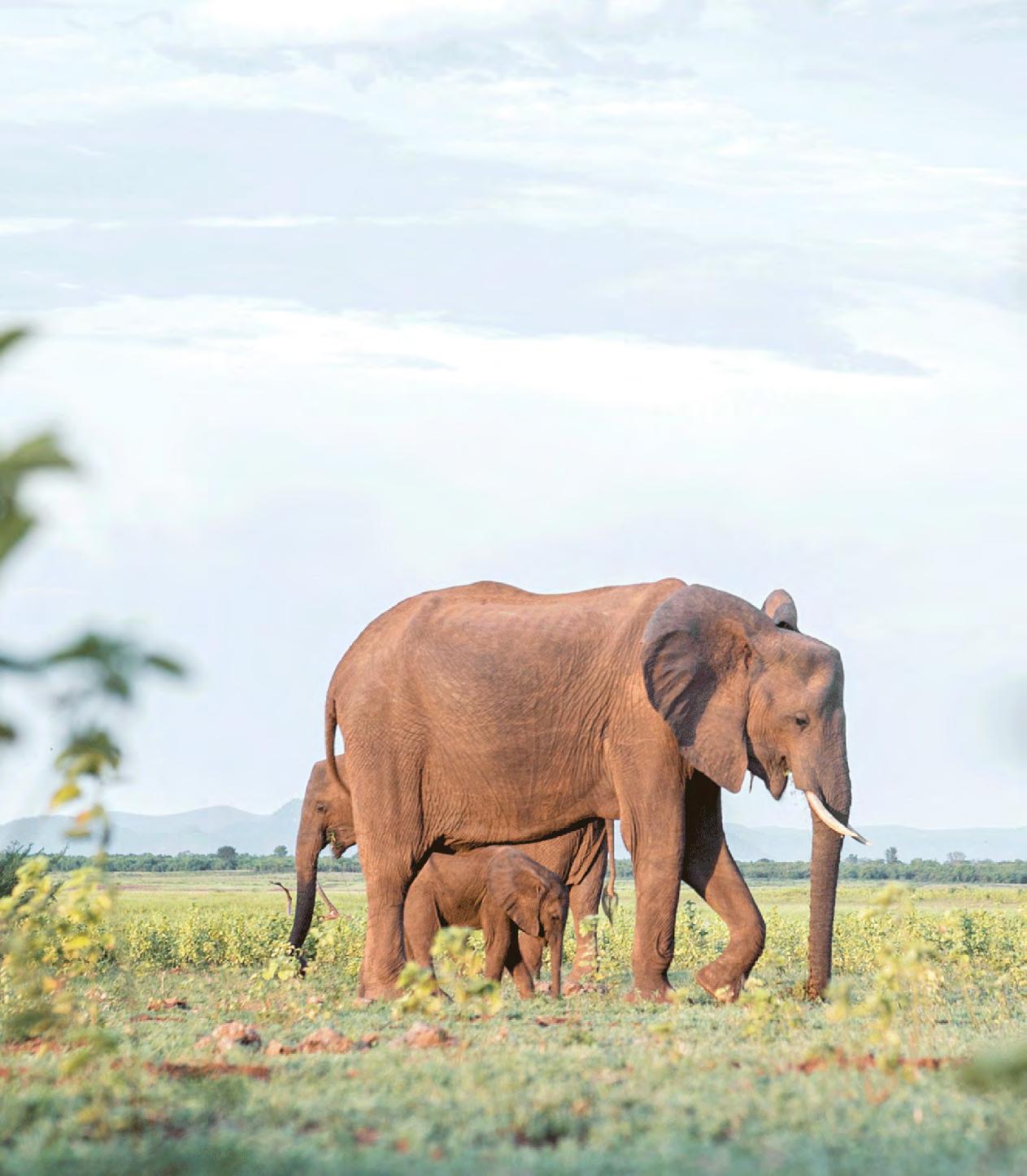
Secluded in Mopane Woodland, where lake, bush, and mountains meet, is Changa Safari Camp. This remote wilderness of Matusadona National Park –comprising 570 square miles in Northern Zimbabwe – is named after the Matusadona Hills that form part of the Zambezi escarpment. The Ume River and Sanyati River that border the park have forged splendid gorges, home to an impressive population of Nile crocodile and pods of hippopotamus.
Lake Kariba, forming the northern boundary of the park, is 140 miles long by 20 miles wide, making it the largest man-made lake by volume in the world. When the Zambezi River was dammed for a hydroelectric project in 1958, forests of mopani and leadwood trees were drowned during the flooding. The sunbleached skeletons of these trees line the banks of Lake Kariba in ghostly clusters, providing nest sites for fish eagles and perches for white-breasted cormorants, wire-tailed swallows, and grey-headed gulls. These trees are dramatically reflected in the water. During a sunset safari via motorboat, the fast-fading light on the water shimmered with reflections of vivid orange and melted vermillion.
From the Matusadona Hills, the landscape descends to grasslands of the savanna – the perfect habitat for an array of wildlife – including an increasingly healthy population of African elephants, lions, leopards and herds of buffalo, plus more than 240 species of birds. On a walking

safari – with two armed game guides –I was shown tracks of a mighty African elephant bull that had been following a breeding herd of elephants. As leopard tracks had spider webs in the indentations, it indicated that the big cat had passed by a few days before. Waterbuck, kudu, and impala had also been down to drink in the Sanyati River, where we walked along the riverbed to return to our game vehicle for a bush breakfast.
Although Matusadona has been a national park since 1975, scores of elephants and all the rhinos have been poached, and unsustainable fishing has gone unchecked. Lacking resources and staff, Zimbabwe Parks has been unable to curb this severe loss of game to both hungry local people and unscrupulous poaching syndicates. Hunting and eating
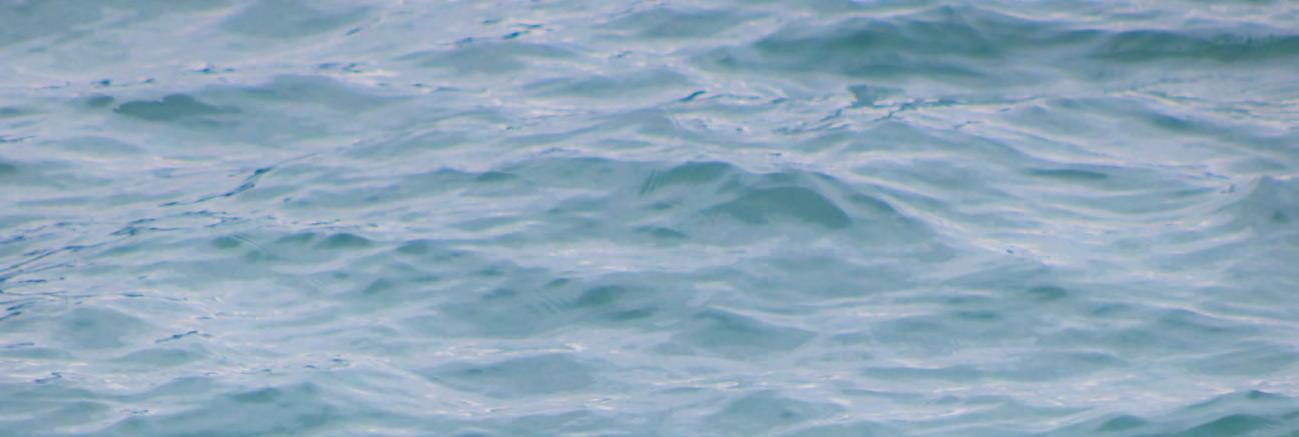


FREE Business Class Air on Intercontinental Flights
FREE Unlimited Shore Excursions


FREE 1 - Night PreCruise Hotel
Package in Concierge Suites and Higher
FREE Unlimited Beverages, Including Wines and Premium Spirits

FREE Open Bars and Lounges, Plus In-Suite MiniBar
FREE Pre-Paid Gratuities
FREE Speciality Restaurants

FREE Transfers Between Airport and Ship
FREE Unlimited WiFi
FREE Valet Laundry Service NEW
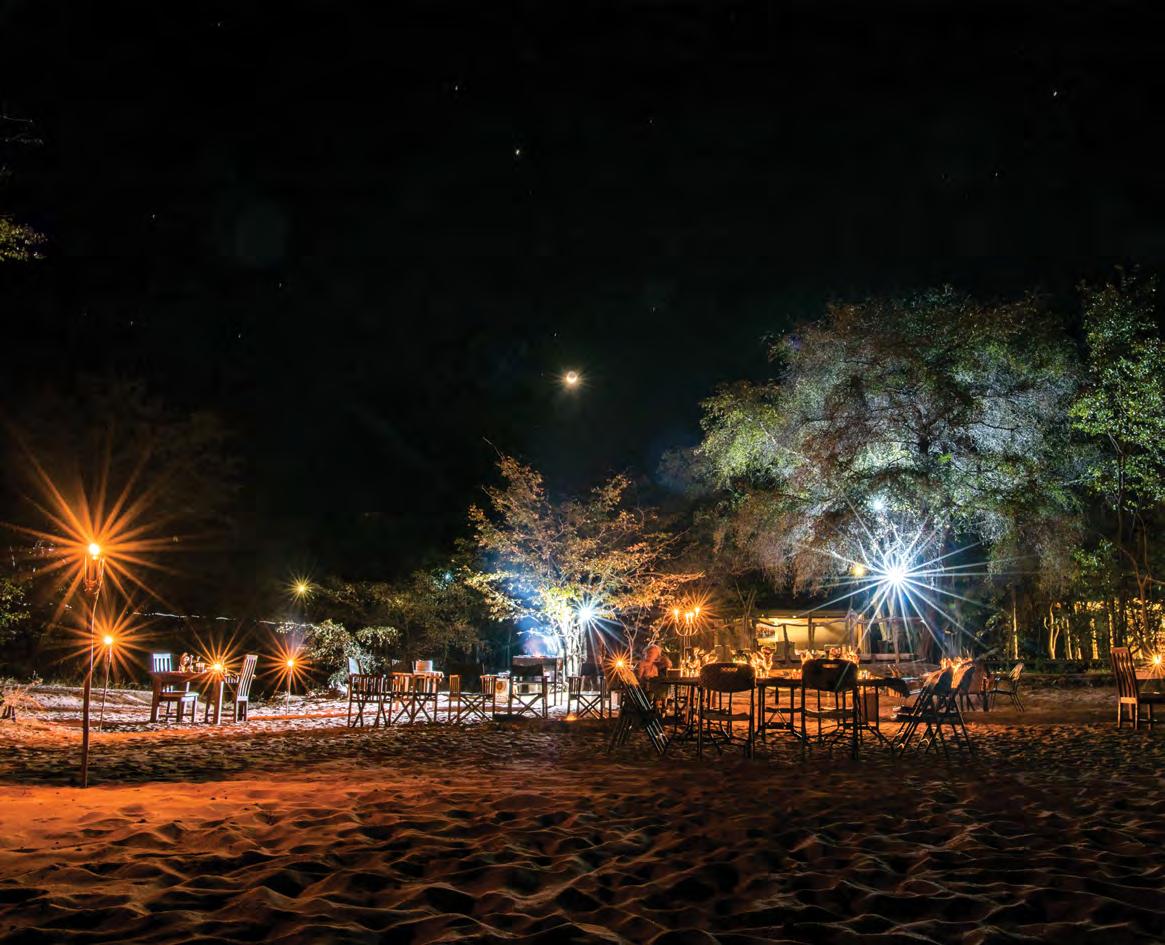


bushmeat is a traditional practice, so local communities have put added pressure on the wildlife by using wire snares and rifles. Thankfully, a legalized five kilometer buffer zone around the boundary of Matusadona National Park has limited the effect of human-wildlife conflict as well as the encroachment of human settlements and agriculture.
A good news story is that African Parks – defining themselves as “a nonprofit conservation organization that takes on the complete responsibility for the rehabilitation and long-term management of national parks in partnership with governments and local communities” –has signed a 20-year contract with Zimbabwe Parks to help facilitate the restoration of species in Matusadona National Park.



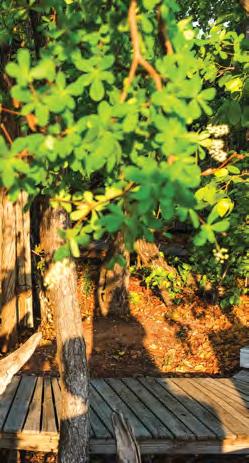

Using donor finance, a multipronged approach is being taken here, with the need to address the efficiency of law enforcement being a priority. For example, instead of a reactive antipoaching method, African Parks is expediting the formation of an active counter-poaching strategy. Illegal gold panning along the Ume River has already declined after arrests and the encouragement of strong community engagement. In 2021, 223 Burchell’s zebras were translocated here to augment the population. In addition, 10 African elephants were collared for better tracking and research purposes.
A towering African elephant male frequently visits Changa Safari Camp to browse in the copse of mopani trees and Zig-zag terminalias. Amazingly, he steps delicately over the wooden walkway, not touching it. Each evening as I showered outdoors, I wondered if he might move past me, phantomlike, on those padded feet. At night, when I was in my bed, cooled by the fans beneath the mosquito net, I would hear this bull outside my tent, cracking off branches and munching on them. I watched him by the light of the moon through the floor-to-ceiling gauze of the Meru-style tent. The bright night
Fastjet operates scheduled flights direct from Oliver Tambo International Airport in Johannesburg, South Africa, to Harare and Victoria Falls. Flights to Kariba operate from Harare and Victoria Falls. Kariba International Airport (KAB) comprises a charming single terminal – with a hedge of bougainvillea – for domestic and international passengers. Changa Safari Camp transfers guests from Kariba

International Airport to the harbor on Lake Kariba, then via a motorboat to the camp. www.fastjet.com


sky glittered with the Southern Cross and the bridal arch of the milky way.
In the mornings, I was awakened by the canorous call of the fish eagle and the less lovely, but equally iconic, grunting, roaring, clicking, croaking and whining of hippo. A knock on my door heralded a waiter bearing fresh coffee and rusks, the traditional Southern African health cookies. Relaxing in a canvas director’s chair on the wooden deck of my tent before my game drive, I identified a variety of birds that were drawn to a hollowed-out stone filled with water after the night’s rain shower. They bathed and babbled, with contour feathers vigorously shaken and wing feathers preened. Arrowmarked babblers with striking yellow-orange eyes foraged for insects. A squadron of small birds mobbed a grey-headed bushshrike. An iridescent Meves’s starling sipped water, then fluttered up to a branch of a mopani tree. Lizards lazed in the dappled sunlight.
On the morning of my departure, I eschewed the menu of activities in favor of exploring the camp area and experiencing a full breakfast in Changa Safari Camp. A table had been set up under a tree – with an African-patterned tablecloth and napkins –and apple and cinnamon muffins were served straight out of the oven as I savored Tanganda tea (Zimbabwe’s best locally grown leaves), anticipating my cooked breakfast. Lambent light from the morning sun moved with the waves on Lake Kariba as a gecko watched me from the trunk of the tree.
The combination of the vast waters of Lake Kariba, the pristine bush with its wild fauna, and the moody backdrop of Matusadona Mountains forms a unique biome. As well as being fully immersed in nature for a time of seclusion and peace, a stay at Changa Safari Camp contributes to the revenue brought in for conservation. Economic development enables preservation of the biodiversity, abundant in this African idyll.
African Parks is an NGO that relies on donations to sustain parks such as Matusadona National Park in Zimbabwe. www.africanparks.org
Changa Safari Camp
www.changasafaricamp.com
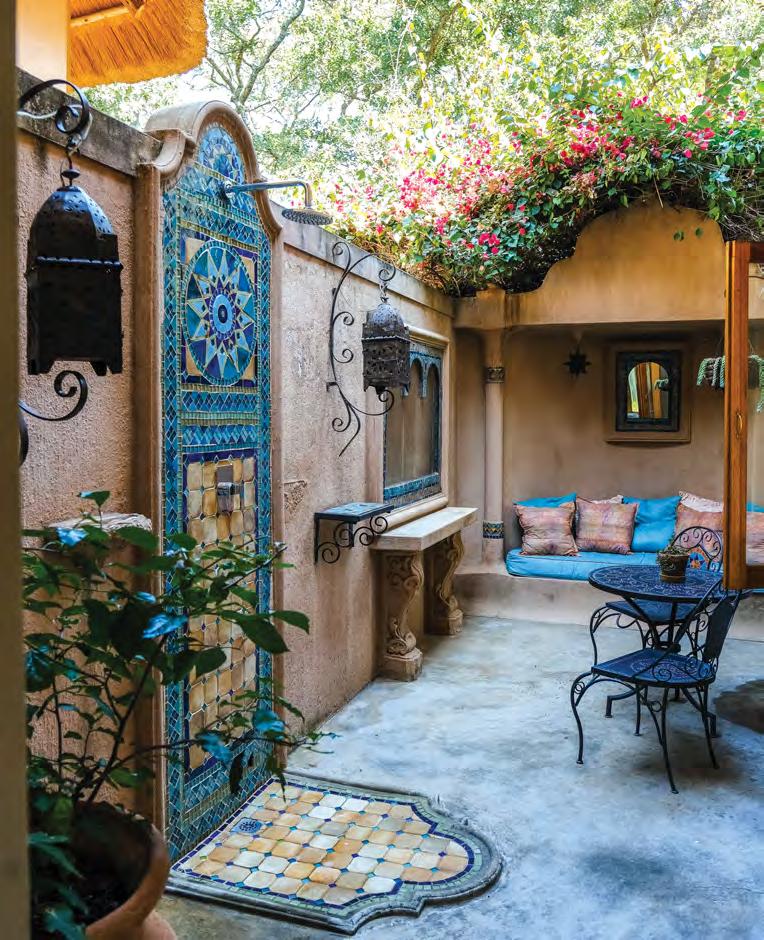
Perfect for an overnight stay or a time of relaxation after traveling in Zimbabwe, Amanzi Lodge is an owner-run boutique hotel in the northern suburbs of Harare. Cascading water features, landscaped gardens – including rare cycads, established trees, and tumbling bougainvillea – provide a tranquil space for swimming, tennis, or alfresco dining. The décor by Julia Mama is charming, with each suite showing a theme from a different African country, represented by contemporary African art and antiquities collected from all over the continent. Gourmet food at Amanzi highlights local ingredients with creative international twists, based on seasonality, simplicity, and the finest-quality ingredients. www.amanzi.co.zw
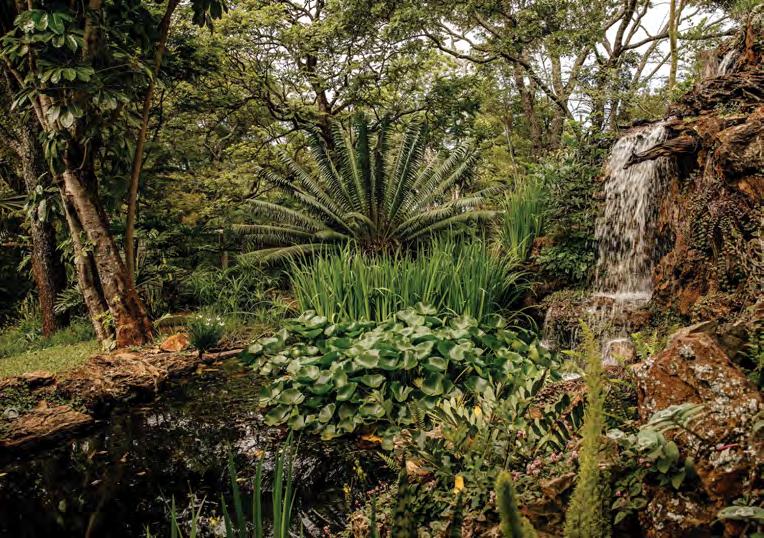
Thisspectacular 19.78± acre estate is one of the grandest properties in North America. Extensive luxury living space in its primary residence, guesthouse, and private polo clubhouse suites. The finest workmanship, materials, and unprecedented amenities combine to create an unforgettable sanctuary.

120 Montecito Ranch Lane, Summerland

$70,000,000
Cristal Clarke 805-886-9378
Berkshire Hathaway
HomeServices California Properties
DRE# 00968247
the home takes advantage of ocean, coastline, and island views.

3599 Padaro Lane
$24,800,000
Emily Kellenberger 805-252-2773
Village Properties
DRE# 01397913
Extraordinary opportunity to purchase 3345 Padaro Lane, which includes two homes on two parcels, 83 feet of ocean front and 2/3 of an acre.

3345 Padaro Lane $23,700,000
The Morehart Group 805-689-7233
Compass
DRE# 00828316
Unlimited possibilities on this one-of-a-kind property! Panoramic ocean & mountain views from level homesite. Two parcels in Hope Ranch on private, usable 5.5 acres. Opening north & south to breathtaking views. Lighted tennis court, detached guest quarters, gated driveway & garages for six cars.



4475 Via Abrigada
$22,500,000
Randy Solakian Estates Group 805-886-6000
Coldwell Banker Realty
DRE# 00622258
Villa Di Serenita offers an alluring lifestyle surrounded by breathtaking ocean, island, and mountain views. As if an Italian fresco came to life, this estate is awash in gorgeous light, surrounded by lush garden districts, and celebrates classic, timeless architecture.

550 Freehaven Drive
$21,750,000
Riskin Partners Estate Group 805-565-8600
Village Properties
DRE# 01954177
Epic views span the horizon at this newly renovated, single-level estate. The primary suite is next to a lovely mountain view study. Two additional bedrooms plus a pool, detached gym, and detached guest house complete the estate.
2170 Ortega Ranch Lane
$16,250,000
Riskin Partners Estate Group 805-565-8600
Village Properties
DRE# 01954177

This12,000 sq. ft., three-level Mediterranean-style home in Ojai has flowing curves, arched doorways, cathedral ceilings and 11,000 sq ft of balconies, terraces and decks. Perfectly appointed on four acres, it takes advantage of the pristine natural setting and views. Every detail has been custom-designed with an emphasis on craftsmanship and quality.


561 Saddle Lane, Ojai $14,500,000
Patty Waltcher 805-340-3774
Berkshire Hathaway
HomeServices California Properties DRE# 01176473
Spectacular and tranquil ocean views from this classic Mediterranean estate designed by renowned architect Don Nulty. This beautiful residence showcases a gracious open floor plan, elegant rooms, and an expansive patio perfect for entertaining, and dining al fresco.
1439 Irvine Lane $11,250,000
Cristal Clarke 805-886-9378
Berkshire Hathaway
HomeServices California Properties DRE# 00968247
Thisnewly constructed Santa Ynez estate spans 40+/-acres across two separate legal parcels. Situated in one of wine country’s most coveted corridors and boasting panoramic mountain, vineyard, and pastoral views – this contemporary oasis is a true work of art.


4300/4200 Roblar Avenue, Santa Ynez $10,950,000
Riskin Partners Estate Group 805-565-8600
Village Properties
DRE# 01954177
Gracious, serene, and soulful: this 6,000 sq ft residence and 22-acre ranch offers panoramic views of the ocean, islands, and mountains. The custom-designed single-level Mediterranean estate overlooks the fully equipped equestrian facilities and a majestic organic farm.
1220 Franklin Ranch Road
$10,250,000
Marsha Kotlyar Estate Group 805-565-4014
Berkshire Hathaway HomeServices California Properties
DRE# 01426886
Effortless style and casual elegance combine with classic Mediterranean architecture at this captivating 5-bedroom/6-bathroom Montecito residence built by Becker Studios. Taking its cue from the world class Santa Barbara lifestyle, the property is a destination resort.
2222 East Valley Road $8,895,000
Nancy Kogevinas 805-450-6233
Berkshire Hathaway HomeServices California Properties
DRE# 01209514
Newconstruction resting on 2.76 private acres, this modern estate enjoys 360° ocean & mountain views. Clad with floor-to-ceiling walls of glass, and concrete, steel and wood structure, the main residence, guest house and pool are truly a work of art.

2805 Spyglass Ridge Road
$8,750,000
Calcagno & Hamilton Group
805-565-4000
Berkshire Hathaway HomeServices California Properties
DRE# 01499736 / 01129919

New Construction in Montecito’s Golden Quadrangle! Construction of this 4-Bedroom, 4-Bathroom modern home and ADU is nearly complete with expert local builder, Clause Construction. The property will be coming on the market soon, don’t miss this chance to live in modern luxury!
515 Santa Angela Lane
$8,450,000
Daniel Zia, Zia Group 805-364-9009
eXp Realty
DRE# 01710544
Atimeless Montecito property built in 2004 and conceptualized by prolific architect John Kelsey, this spectacular property has often been referred to as the architect’s “Little Masterpiece.”
301 San Ysidro Road
$8,300,000
The Morehart Group 805-689-7233
Compass
DRE# 00828316
Situated on 20 acres in one of wine country’s most coveted corridors and boasting panoramic mountain, vineyard, and pastoral views, this contemporary oasis is complete with two separate homes, newly constructed by renowned designer and builder Mark Trabucco.

4300 Roblar Avenue, Santa Ynez $7,975,000
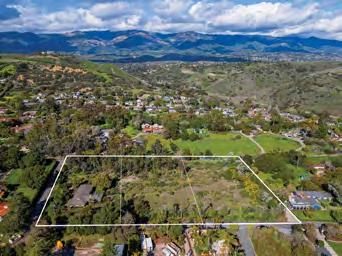
Riskin Partners Estate Group 805-565-8600
Village Properties
DRE# 01954177
Situated on one of the most prestigious streets in Santa Barbara lies an incredible opportunity to develop a 3.19± acre flat parcel with existing Mid-Century Home. The momentum on Sea Cliff is undeniable as a sought-after estate location with many notable multi-million-dollar estates and several in development.
3139 Sea Cliff $7,497,000

Randy Haden & Molly Haden
805-880-6530
Haden Homes Luxury Property Group
DRE# 01988499
Itdoesn’t get better than Birnam! If you’re looking for a secure golf community, this classically-designed, three-bedroom/3.5-bathroom, single-level home offers an abundance of amenities in pristine surroundings.
2005 Birnam Wood
$6,950,000
Riskin Partners Estate Group 805-565-8600
Village Properties
DRE# 01954177
Enjoyvintage Montecito living as nearly 6.5 acres of lush pastoral property sit surrounded by panoramic ocean, mountain, and hillside views. One of three structures on the property, the 3-bedroom, single-level rancher balances classic country living with breathtaking views.
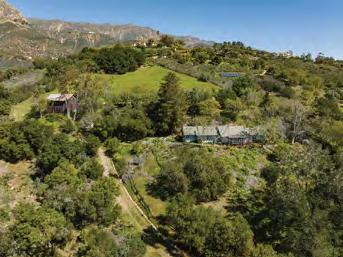
2870 East Valley Road
$7,200,000
Marsha Kotlyar Estate Group 805-565-4014
Berkshire Hathaway
HomeServices California Properties
DRE# 01426886

Huge mountain views span the horizon at this spectacular 1.8 acre, flat, level building site with approved plans and permits ready to issue for a one-level, +6,000 sq ft home with lofty ceilings, open spaces, and a contemporary sensibility.
415 Meadowbrook Drive
$6,295,000
Riskin Partners Estate Group
805-565-8600
Village Properties
DRE# 01954177
‘Rancho Cielo Vista’, a 20-acre property in Woodstock Ranch, Santa Ynez Valley, with stunning views, equestrian amenities, resortstyle pool, and 4 residences totaling over 8,000 sq. ft.


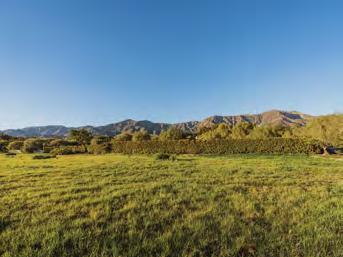
3570 Woodstock Ranch Road
$6,150,000
Laura Drammer & Cammy Pinoli
805-448-7500, 805-452-9725
Berkshire Hathaway
HomeServices California Properties
DRE# 01209580 / 02074002
Welcome to this classic 1920’s Spanish Colonial, where every space deserves a moment of pause. This pied-a-terre spares no expense on quality and thoughtful design. Nestled in the coveted Lower Village, this architectural gem just received an extensive restoration.
166 Butterfly Lane
$5,995,000
Marsha Kotlyar Estate Group
805-565-4014
Berkshire Hathaway
HomeServices California Properties
DRE# 01426886
This stunning Mediterranean estate, designed by Andy Neumann, sits on three private acres and boasts serene ocean and mountain views. Featuring 3 bedrooms, 2.5 baths, grand living room, new infinity pool, 2-car garage, and natural landscaping, it’s the ultimate California retreat with seamless indoor-outdoor living.
2946 Hidden Valley Lane
$5,700,000
Crysta Metzger
805-453-8700
Coldwell Banker
DRE# 01340521
Complete your contemporary dream home!
This private, approx. 5,000 sq ft compound on over an acre, is located on a flat pad in a tranquil corner of Hope Ranch and will be the most modern and luxurious hideaway in all of SB! Plans approved by HOA and County of Santa Barbara for a once-in-lifetime, elevated, threestructure retreat.

4095 Cuervo Avenue
$4,945,000
Stormie Leoni 310-227-5996
Compass
DRE# 01949760
Overlooking
all of Santa Barbara’s wonders is this one-of-a-kind sanctuary, sprawled across 6.51 acres. Impressive construction and solid infrastructure were cornerstones for this newer build. Just a short jaunt from the Botanic Gardens, this property awaits an owner as equally exceptional.


1480 Mission Canyon Road
$4,425,000
Marsha Kotlyar Estate Group 805-565-4014
Berkshire Hathaway
HomeServices California Properties
DRE# 01426886
ThisCarpinteria coastal hidden gem with stunning ocean and island views, offers the quintessential lifestyle buyers are searching for. The single-level, ranch-style home features four bedrooms, three full baths, a sunken living room, dining area, and bonus/media room. Meticulously maintained and minutes from Rincon Point and Rincon Beach County Park.
6635 Arozena Lane, Carpinteria
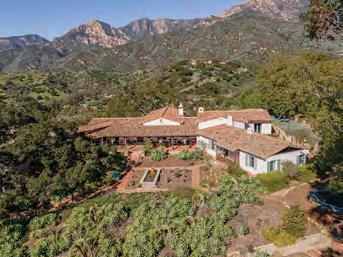


$4,375,000
Omid Khaki 805-698-1616
Carolwood Estates

DRE# 01472496
Frompicturesque beaches on which to spend the day on the sand; to multiple luxury resorts to bask by the pool or enjoy a spa day; to a lively downtown scene with five-star dining, boutique shopping, and historic theaters, Santa Barbara and neighboring towns offer an ideal place to vacation.
Santa Barbara style w/ the quality of a newer build, this four-bedroom, 3.5-bath home offers refined, yet relaxed living. With Pacific blue accents, flourishing landscaping, and distinct architecture, curb appeal abounds in this San Roque Spanish colonial revival.

3115 Calle Noguera $3,895,000
Marsha Kotlyar Estate Group 805-565-4014
Berkshire Hathaway
HomeServices California Properties
DRE# 01426886
Constructed in the 1920s Golden Era of Santa Barbara’s architectural renaissance and extensively renovated in 2017, this stately home balances the elegance of classic Monterey Colonial Revivalism with the convenience of modern comforts.
219 Toyon Drive
$3,695,000
Marsha Kotlyar Estate Group 805-565-4014
Berkshire Hathaway
HomeServices California Properties
DRE# 01426886
Chic and luxurious, this 1930 Renovated Santa Barbara Spanish boasts 5+ bedrooms, 4.5 bathrooms, ocean and mountain views, a pool, and park-like grounds. Gated and private, it’s the perfect rental for those seeking a serene getaway.
El Cielito
$35,000 per month
Crysta Metzger
805-453-8700
Coldwell Banker Realty
DRE# 01340521
Contemporary estate perched on Ortega Ridge and surrounded by nature. Spectacular views, pool and spa, and a tranquil Zen garden for ultimate relaxation.
Inquire for rental rate
Paradise Retreats
805-275-1851
www.paradiseretreats.com
DRE# 02090892



